A Blog About Parenting: Coping Skills, Behavior Management and Special Needs


25 Fun Problem Solving Activities for Kids
Problem-solving activities for kids : Explore 24 fun problem-solving games and activities, and learn effective tips and strategies to teach kids problem-solving skills. If you want to explore problem-solving strategies more in-depth, you can also grab our workbook “ Problem-Solving for Kids ” (printable resource).
Problem-solving is the cognitive process of finding solutions to challenges or complex situations.
A systematic approach to problem-solving tends to include defining the problem, gathering information and data, generating potential solutions, evaluating the pros and cons of each solution, making a decision, and implementing the chosen solution.
Effective problem-solving often requires critical thinking, a good dose of creativity, and the ability to consider multiple perspectives. It may also involve identifying patterns, breaking down a problem into manageable chunks, and applying our logic to develop solutions.
Problem-solving is present in everyday situations and across all fields: business, science, personal life, and education. There is not one single aspect in our lives where we don’t need to apply our problem-solving skills.
Table of Contents
- Problem-solving steps
- Development of problem-solving in childhood
- Benefits of developing problem-solving skills
- 10 Tips to teach kids problem-solving skills
- 10 Examples of problem-solving strategies
- 25 Problem-solving activities and games for kids
Problem-Solving Steps
Some key components of problem-solving include:

- Identifying the problem Recognizing and defining the issue or challenge that needs to be addressed.
- Analyzing the problem Investigating and understanding the underlying causes, factors, and relationships related to the problem.
- Generating solutions Generating potential solutions or strategies to address the problem.
- Evaluating all possible solutions (Pros and Cons Analysis) Assessing the feasibility, effectiveness, and potential consequences of each solution. Considering the positive and negative aspects of each solution.
- Decision-making Selecting the best solution based on our analysis and judgment.
- Implementing the best solution Actioning our chosen solution
- Monitoring progress and results
- Reflecting on the outcomes Reviewing and evaluating the outcomes of the implemented solution, learning from the experience, and making adjustments if necessary.
Development of Problem-Solving Skills in Childhood
Children begin to develop problem-solving skills from a very early age, and these skills continue to develop and refine throughout childhood and adolescence.
Babies soon learn about action and reaction. And, as early as eight months, they begin to acquire an understanding of cause and effect (they shake a rattle, it makes a sound; they push a toy, it falls)
Between 13 and 24 months, they start solving simple problems through trial and error and engage in symbolic play using their imagination.
As children progress into middle childhood (ages 7-11), they develop more advanced problem-solving skills. They become capable of understanding multiple perspectives and can consider multiple factors when solving problems. They start using logic and reasoning to solve increasingly complex problems.
During adolescence (ages 12 and up), problem-solving skills continue to develop. Teenagers can generate and test hypotheses and use deductive and inductive reasoning to arrive at solutions.
Each child will develop their problem-solving skills at their own pace. Some children may show advanced problem-solving abilities at an earlier age. Others may require more time and experience to develop these skills fully.
Benefits of Developing Problem-Solving Skills in Children
Problem-solving skills in children are crucial for children’s cognitive, social, and emotional development. It equips them to approach challenges, think critically, make informed decisions, and find creative solutions.
The benefits of good problem-solving skills in children include:
- Positive impact on self-esteem and confidence Identifying, analyzing, and solving their problems contributes to our kids’ sense of competence .
- Fosters Independence and Autonomy When our kids are able to problem-solve on their own, they take one more step toward independence
- Academic Success Problem-solving skills contribute to academic achievement, as they help students analyze and solve complex problems across various subjects.
- Cognitive Development Problem-solving fosters cognitive skills such as logical reasoning, analytical thinking, and abstract reasoning.
- Critical Thinking Problem-solving enhances critical thinking abilities, enabling children to evaluate information, identify biases, and make informed judgments.
- Creativity Problem-solving promotes creativity by encouraging children to think outside the box, generate innovative ideas, and explore multiple solutions.
- Emotional Resilience Problem-solving skills enhance emotional resilience by enabling children to manage and cope with challenges effectively, reducing stress and promoting well-being.
- Improved Social Interactions/Relationships Problem-solving abilities contribute to better social interactions, conflict resolution , and peer collaboration, promoting healthy relationships.
- Future career success Problem-solving skills are highly valued in the workplace and can positively influence future career success.
10+ Helpful Tips to Teach Kids Problem-Solving Skills
Teaching problem-solving skills to kids is an important part of their cognitive development. It helps them develop critical thinking, creativity, and resilience.
But how can we help our kids and students to develop this essential skill?
We can help our kids and students develop and improve their problem-solving skills in many ways. These are some helpful tips that you could consider:
- Model problem-solving behavior When you see yourself in a problem-solving situation, verbalize your thought process: “I wonder how I should address this issue. I guess my alternatives could be… They all have positives and negatives….”
- Let them participate in the problem-solving situation “Could you help me solve this puzzle?”
- Provide real-life problem-solving situations Real-life scenarios make problem-solving more meaningful for kids. For example, discuss how to resolve a conflict with a sibling or how to make the morning routine smoother.
- Teach them how to break down problems Show them how to break down complex problems into manageable sub-problems.
- Practice brainstorming Create brainstorming situations where all the family (or the classroom) can contribute to solving a problem
- Teach the value of perseverance Sometimes, we must stick to a situation and persevere before finding a solution. Encourage kids to persevere through challenges and setbacks, emphasizing that mistakes and failures are opportunities for learning.
- Encourage critical thinking Encourage kids to analyze situations, consider different perspectives, and evaluate possible outcomes.
- How could we make your school lunch healthier but still yummy?
- How could we reuse/recycle all this paper?
- What could we do to help you remember all the steps in your night routine?
- Encourage reflection When they can find a solution for a problem, don’t jump to solve it for them. Encourage them to reflect on the problem and find and evaluate alternatives. And after a problem is solved, think about the whole process and the learnings. “How did this work?” “What did you learn” “Do you need to change anything?”
- Foster creativity Provide them with opportunities for imaginative play, creative projects, and brainstorming sessions.
- Teach the value of teamwork Teach kids the importance of working together to solve problems. Engage them in group activities or projects that require teamwork and collaboration. This helps kids learn the value of different perspectives and work together towards an objective while they practice their communication skills.
- Teach decision-making skills Teach kids how to approach problems systematically by going through the steps we have mentioned in our first section.
- Encourage both structured and free play. Structured play can help you create good problem-solving situations, while free play will foster creativity.
Developing problem-solving skills is an ongoing process that will also continue in adulthood. Provide your kids with guidance and support, and celebrate their efforts and achievements along the way.

10 Examples of Problem-Solving Strategies
There are different strategies that can help us solve a wide range of problems. Here are some commonly recognized problem-solving strategies:
1 . Trial and Error : This is the first problem strategy that we ever learn. We start using trial and error strategies in infancy, and it continues serving its purpose in many situations. This strategy involves trying different solutions or approaches and learning from the errors or failures until a successful solution is found.
2. Algorithm: An algorithm is a step-by-step procedure or a set of rules that guarantees a solution to a specific problem. It is a systematic approach to problem-solving that follows a predetermined set of instructions.
3. Heuristics: Heuristics are mental shortcuts or rules of thumb that help simplify problem-solving by providing quick and efficient strategies. While heuristics can be effective in many situations, they may also lead to biases and errors.
4. Divide and Conquer: This strategy involves breaking down a complex problem into smaller, more manageable chunks or steps that make the overall problem easier to tackle.
5. Working Backwards: This strategy involves starting from the desired outcome and working backward to determine the steps or actions needed to reach that outcome. We often use this problem-solving strategy when we set goals.
6. Analogical Reasoning: Analogical reasoning involves drawing parallels between the current problem and a similar problem that has been solved in the past. By applying the solution from the previous problem to the current one, individuals can find a solution more efficiently.
7. Brainstorming: Brainstorming gets lots of brains working on the same problem. It is a great collaborative problem-solving strategy that can bring different perspectives and experiences to the table and may result in lots of creative ideas and solutions.
8. Decision Matrix: A decision matrix is a systematic approach to evaluating and comparing different options or solutions. It involves creating a matrix that lists alternatives and the criteria for evaluation. It assigns weights or scores to each criterion to come up with the optimal alternative.
9. Root Cause Analysis: Sometimes, we need to understand what is causing a problem before we can attempt to solve it, as different causes may require different approaches (for example, when you are sick, your doctor may need to understand what is causing the problem before prescribing a medicine)
10. Simulation and Modeling: Simulation involves creating a simplified representation or model of a problem situation to gain insights and test different scenarios.
Our choice of strategy will depend on the problem, available resources, and our own personal preferences and circumstances. We may also need to combine strategies or apply different ones to different aspects of a complex problem.

(Disclosure: We are a participant in the Amazon Services LLC Associates Program, an affiliate advertising program designed to provide a means for us to earn fees by linking to Amazon.com and affiliated sites. You can also read our Disclosure & Disclaimer policy here )
Best Problem-Solving Activities for Kids
Play-based activities are centered around play and are designed to engage children in active learning and exploration. And fun problem-solving activities are a great way to develop children’s critical thinking, creativity, and decision-making skills.
In this section, we will review some problem-solving games and activities that will engage your kids’ critical-thinking skills and creativity.
1. Puzzle Games Puzzles are a fun activity for children of all ages. Young children will enjoy simple puzzles, while older children (and adults!) can have fun with more complex ones. Encourage them to use logical thinking and problem-solving strategies to complete the puzzles.
2. Crosswords A crossword is another fun type of puzzle and a good source of mental stimulation.
3. Sudoku Sudoku is a popular logic-based puzzle that involves filling a grid with numbers.
It can be extremely easy or very challenging, adaptable even for young learners.
Let’s go now for a couple of building challenges!
4. Build the Tallest Tower Give the child a set of materials (Legos, building blocks, wooden blocks, or other construction materials) and ask them to build the tallest tower they can. This simple game will encourage them to problem-solve as they build and figure out how to make the tower stable.
5. Build Towers with Different Materials Ask your child to build three different towers with different materials. Then assess how stable they are and how much weight they can hold. Analyze the pros and cons of using each type of material.
6. Treasure Hunt Set up a treasure hunt with clues leading to hidden objects or rewards. Children will have to follow the clues and solve puzzles to find the ultimate prize. This activity encourages problem-solving, critical thinking, and teamwork.
7. Scavenger Hunt Playing Scavenger Hunt can be a fun way for our kids to put their creative problem-solving skills to good use. Provide them with clues and puzzles that they must solve in order to find the next clue.
8. Mystery Bag Fill a bag with random objects and ask children to come up with creative uses for each item. Encourage them to think outside the box and find innovative solutions.
9. Memory Game While memory games primarily focus on memory retention and recall, they can indirectly contribute to problem-solving skills by developing cognitive abilities such as attention, information processing, and adjusting their strategies.
10. Role-Playing Scenarios Create role-playing scenarios where children have to solve a problem or make decisions. For example, pretend to be stranded on a desert island and ask them to decide what items they will take and how they will survive.
11. Role-Play Social Situations Work in developing social skills with social problem-solving situations.
12. Brainstorming Sessions Choose a topic or problem and hold brainstorming sessions where children can generate as many ideas as possible. Encourage them not to limit themselves (even if alternatives feel unfeasible!)
13. Team Building Activities and Games Engage children in team-building games like building a balloon tower. Each team member will need to collaborate, communicate, and problem-solve together to complete the project.
14. Escape Rooms An escape room is a super fun team problem-solving activity.
In an escape room, participants are locked inside a themed room and must work together to solve puzzles, find clues, and accomplish tasks within a given time limit in order to “escape” from the room.
15. Science Experiments Conduct simple science experiments that involve problem-solving. For example, in the classic “sink or float” experiment, children predict and test which objects will sink or float in water.
Problem-Solving Board Games
There are many board games that will test our kids problems solving activities. These are just a few examples:
16. Cluedo Players must solve a murder mystery by deducing the murderer, the weapon used, and the location of the crime. Players collect and examine clues to eliminate possibilities and make logical deductions.
17. Codenames Another classic game where players are split into two teams and must guess words based on clues from their teammates.
There are many codenames games available, including themes like Disney or Harry Potter.
18. Mastermind Game In this strategy game players take turns setting and solving secret codes
19. Scrabble Scrabble is a classic word game where players form words on a game board using letter tiles.
Kids must use their problem-solving skills to analyze the available letters, consider the best word combination and strategically place those words to score the highest points.
Learning Problem-Solving with Card Games
Card games provide opportunities for kids to develop problem-solving skills such as strategy, memory, pattern recognition, decision-making, and observation.
Just a couple of examples:
20. Uno Uno is a classic card game where kids match cards based on color or number. They need to assess their cards, strategize and make decisions about which cards to play to get rid of their cards while also considering the cards in their opponents’ hands.
21. Go Fish Go Fish is a classic card game where players try to collect sets of cards by asking other players if they have specific cards. Players need to remember which cards they have and make decisions about who to ask and what sets to pursue.
22. Coding Challenges Introduce children to coding activities using platforms like Scratch (or ScratchJr for younger kids), Code.org, or Tynker. Coding involves problem-solving and logical thinking, and children can create interactive stories, games, or animations.
23. Outdoor Problem Solving Take children outside and present them with challenges that require problem-solving, such as building a shelter using natural materials or finding their way through an obstacle course.
24. Problem-Solving Worksheets Help your child follow a systematic approach to problem-solving with these helpful worksheets
25. Goal-Setting Activities for Kids Learning to set goals and make plans to achieve them is also a problem-solving activity. I have several resources to teach kids about goal-setting that I will list below:
- Goal-Setting Activities for Kids
- SMART Goals for Kids
- Goal Tracker Thermometer
Remember to provide guidance and support during these activities while encouraging children to think independently and come up with their own solutions.
Problem-Solving Worksheets

Looking for kid-friendly examples of problem-solving strategies ?
This workbook explores the following problem-solving strategies (with child-friendly examples and activities):
- Trial and Error
- Heuristics (Clever shortcuts)
- Divide and Conquer
- Working Backwards
- Brainstorming
- Decision Matrix
- Root Cause Analysis
- Systematic problem-solving

One Comment
I always look forward to your articles with active interventions. Thank you!
Leave a Reply Cancel reply
Your email address will not be published. Required fields are marked *

17 Fun Problem Solving Activities for Kids
There might be affiliate links on this page, which means we get a small commission of anything you buy. As an Amazon Associate we earn from qualifying purchases. Please do your own research before making any online purchase.
As a child, I would spend hours putting together puzzles… whether it was 3-D puzzles or figuring out a crossword. I also loved it when teachers would give the class an open-ended question and we had to work in groups to figure out the answer in our own way.
Even something as simple as playing checkers with my brothers gave me the chance to use strategy as a way to win the game. I honestly believe that it’s so important for kids to solve problems at a young age, as it helps them think critically and outside the box.
Table of Contents
So, Why Is It Important To Teach Kids Problem Solving?
I think these kinds of activities are so important for kids to do because it helps them learn how to think analytically and solve problems on their own. It's a great way to get kids to use their imaginations and be creative.
Rote memorization simply does not have the same effect. This type of learning is great for learning facts like historical dates, but it’s not going to help kids figure out how events in history happened and the results.
We take these problem-solving skills into college, the workforce, and travel . My ability to problem solve since childhood has certainly got me through many sticky situations while in a new city or country.
Additionally, problem-solving helps children learn how to find creative solutions to challenges they may face both in and out of the classroom . These activities can also be fun and used in cohesion with school or playtime.
17 Fun Problem-Solving Activities for Kids
1. marble mazes.
This activity was selected because it requires them to think spatially. Spatial learning will benefit kids when they start driving, riding a bike, playing sports,etc.
To do this activity in its simplest form, you will need a piece of paper, a pencil, and some marbles. First, draw a maze on a piece of paper using a pencil.
Make sure to create a start and finish point. Then, place the marbles at the start of the maze. The goal is to get the marbles from the start to the finish by tilting the paper and using gravity to guide the marbles through the maze.
Another example of a marble maze can involve using toilet paper rolls taped together to create a three-dimensional maze. The larger the maze, the harder you can make it.

Check Price on Amazon!
If you are not into the DIY method, you can always buy a toy maze on Amazon. A good 48 piece puzzle is the Melissa & Doug Underwater Ocean Floor puzzle.
2. The Tower Challenge
Building a tower gives kids the chance to think about gravity, structure, and balance.
To do this activity, you will need some building materials like legos, blocks, or even toilet paper rolls. The challenge is to see how high they can stack the materials without the tower toppling over.
This can be done individually or in teams. An activity like this is good for younger kids and is the building block to learning about harder topics like engineering.
3. The Egg Drop Challenge
The egg drop challenge helps kids learn how to engineer a solution that prevents something from breaking. It requires them to think critically about which materials will best protect something fragile like an egg when dropped from a height.
To do this activity, you will need some eggs and various materials such as straws, cotton balls, bubble wrap, etc. The goal is to construct a device that will protect an egg from breaking upon impact.
This can be done individually or in teams . Teams can even have a competition for the best egg drop device.
As children begin handling, shopping for, and cooking their own food, activities like this will help them understand how to handle breakable items like bottles, eggs, delicate fruit,.etc. Ideally, this is best for age groups 8 and up.
4. The Penny Drop Challenge
This activity was selected because it requires kids to think about physics and how different materials affect sound.
To do this activity, you will need a penny ( or another coin), a cup, and various materials such as paper towels, cotton balls, etc.
The goal is to drop the penny into the cup without making any noise. Begin by placing different materials into the cup and then drop the penny into it. The children should also drop the penny from different heights into the same material to see if/how the impact from a higher drop affects sound.
Group kids into teams or let them try it on their own.
Kids should make note of what type of sounds are made when the penny hits different materials. This is a great activity for kids who are interested in science and physics.
5. The Balloon Race Challenge
This activity was selected because it helps kids learn about aerodynamics and Bernoulli’s principle . It also requires them to think creatively about how to design a balloon-powered vehicle.
To do this activity, you will need balloons, straws, masking tape, and markers. The goal is to design a balloon-powered vehicle that can travel a distance of at least 10 feet. Kids can begin this activity by sketching out their designs on paper.
After they have a basic design, they can begin building their vehicle from various materials. Then kids can explain why they think the balloon traveled or did not travel as far as it did.
6. The Marshmallow Challenge
Marshmallows are not only delicious, but they are also soft and malleable. So kids can have fun using it for some construction projects.
This activity was selected because it requires kids to think creatively about how to build a structure using limited materials. It also helps them learn about engineering and work as a team.
To do this activity, you will need marshmallows and spaghetti noodles. The goal is to build the tallest free-standing structure possible using only marshmallows and spaghetti noodles. If you don't have spaghetti noodles, use something similar like pretzel sticks.
You may even want to establish certain rules like each team can only use a certain number of marshmallows or noodles. A time limit can also make it more fun and challenging.
For more fun activities, check out our post on problem solving exercises for team building .
7. The Balloon Pop Challenge
If you remember your childhood, you probably remember popping balloons for fun at times. But this activity is different because it requires kids to use strategy and critical thinking.
This activity was selected because it helps kids learn about patterns and problem-solving. It is also a lot of fun for kids who like popping balloons. The goal is to create a device that will allow them to pop a balloon without using their hands.
To do this activity, you will need balloons and various materials such as straws, string, paper clips, etc.
8. Picture Pieces Puzzle Game
As mentioned earlier, puzzles are a great pastime – especially in childhood. Kids must think critically about how to put the pieces together to create a certain picture. It also helps them learn about shapes, colors, and other concepts.

You can take a medium to large picture and cut it into pieces. If you have younger kids, you may want to make the pieces larger. However, if you have kids closer to the 8-11 age range, you should be able to provide a challenge and make the pieces smaller.
9. Copy the Block Model
For this challenge, you can build a model out of blocks for the kids to copy. Put kids into groups and make sure each group has the same number of blocks you used for your model.
Make your model block as simple or complex as needed for your child's age group.
Set a time limit and make sure each group starts at the same time.
10. Team Scavenger Hunt
A scavenger hunt is great for kids because they have to search for items and use investigative skills. It is also a lot of fun and can be done both indoors and outdoors .
To do this activity, you will need to create a list of items for the kids to find. The items can be anything from common household items to things you would find outside.
These types of activities can also revolve around a theme like a holiday, movie, or book. For example, if the kids are fans of “Harry Potter” you can make a list of items to find that are related to the movie.
11. Obstacle Course
This activity requires kids to think creatively about how to get from one point to another while maneuvering around obstacles. If you have outdoor space, this can be done with common objects such as hula hoops, cones, etc.
If you don't have access to an outdoor space, you can use common household items to create an indoor obstacle course. For example, you can use chairs, blankets, pillows, etc.
Begin by setting up the course and then timing each child as they complete it. You can also have them race against each other to make it more fun.
Obstacle courses are also great because kids get to be physically active while they are thinking critically.
12. Reading Storybooks
There are many great benefits for kids that read storybooks. One of the excellent benefits is the ability to problem-solve. When they read the stories in the books, they see scenarios that cause them to be attached to the various characters they read about.
So, when they encounter a real-life problem, it is often productive to ask a child how their favorite character would solve that problem. Your kids can also be encouraged to come up with various options and possible outcomes for some of the situations they may encounter.
This not only helps kids solve various problems but become more independent as well.
13. Ask Them Open-Ended Questions
A good way to improve a child's ability to think critically and creatively and improve their ability to solve problems is by asking open-ended questions. It also helps them to develop healthy personalities .
There are no right or wrong answers to these questions. In addition, the solution requires more than a simple “yes” or “no” answer. Furthermore, it allows kids to put some extra thought into their responses.
Here are some examples of open-ended questions you may want to ask.
- What did this experience teach you?
- Was this easy? What was easy about it?
- What this difficult? What is complicated about it?
- What may happen next in this situation?
- How did you come to this solution?
- What, if anything, would you do differently next time?
- What can we do to make things more fun next time?
14. Build Various Structures with Toys
Whether wooden blocks, LEGO blocks, or engineering blocks… giving your kid blocks to build whatever their minds can dream up is fun. In addition, it requires them to think about how they will make a structure, put the pieces together, and creatively ensure the building's function and design.

You may also want to challenge them to build something more complicated and watch them use their brain power to make it happen.
15. Acting Out Skits
Impromptu activities like acting out skits help kids identify problems, develop solutions, and execute them. This process works with multiple kids being divided into teams.
First, you will want to write down different situations, such as resolving a disagreement between siblings or dealing with bullying on the playground on a piece of paper. Second, you will fold the paper and place it in a hat or bowl.
Third, each team will pick a scenario out of the hat. Finally, you can give the kids a few minutes to discuss their solution and act out.
16. Solving Moral Dilemmas
In this simple game, you will help your kids solve simple dilemmas they may find themselves in. You could write down a situation your child may find themselves in and help them learn the moral way to solve the problem.
For instance, “The cashier gave them an additional $5 change back on my purchase. What should they do?” Another scenario could be, “I saw my friend cheating on a test. Should I tell on them or let it go?” A third one could be, “I caught my friends stealing some gum from the store. What should I do?”
After writing down the dilemmas and placing them in a bowl, get each child to select one and read it aloud. Finally, you will help them devise morally correct solutions to the moral dilemma.
17. Animal Pairing Game
This is a fun and creative game to help your kids with focus, critical thinking, and team building skills . In addition, this activity requires an even number of players to participate (4, 6, 8, etc.)
Before starting the game, you will want to write the names of different animals twice, each on a separate slip of paper. Then pass out the slips of paper to each individual or team member, instructing them not to share with anyone the name of the animal they received.
Then the children will perform activities the animals might do without talking or making sounds. Some of these activities might include:
- The way the animal cleans or grooms itself
- The way the animal sleeps
- The way the animal fights
- The way the animal eats or drinks
- The way the animal walks or runs
The goal is for each child to successfully pair up with the other child who has selected the same animal.
How Problem Solving in Childhood Helps in Adulthood
Children are not born with problem-solving skills. It is something that needs to be learned and developed over time .
From babies who learn how to communicate their needs to toddlers who figure out how to get what they want, to children who are starting to understand the consequences of their actions – problem-solving is a process that begins in childhood and continues into adulthood.
Some of the benefits of teaching problem-solving skills to children include:
- Improved critical thinking skills
- Better decision-making skills
- Enhanced creativity
- Improved communication and collaboration skills
- Increased confidence
There are many ways to teach problem-solving skills to children. The activities mentioned above are just a few examples. It is important to find activities that are appropriate for the age and abilities of the child.
With practice, children will develop these skills and be better prepared to face challenges in both childhood and adulthood.
Final Thoughts About Fun Problem Solving Activities For Kids
These are just a few ideas to get you started on teaching your child crucial problem solving skills. Perhaps they’ve inspired to come with some of your own, or seek out others? The important thing is to make sure the activity is age-appropriate and challenging enough to engage the kids.
Problem-solving skills are important for kids to learn because they can be applied to various situations in life. These skills also promote critical thinking, which is an important life skill.
There are many other problem-solving activities for kids out there. In time, you’ll find the ones that work best for your child. And be sure not to forget about your own needs and self-improvement, both of which will make you a better parent and mentor. Here are some useful activities for adults to get your started.
Finally, if you want to level up your parenting skills, then check out this resource that will show you how to get your kids to listen WITHOUT yelling, nagging, or losing control .


15 Problem-Solving Activities for Kids & Teens: Critical Thinking

What is one of the most important skills all students must learn? Is it math or coding? Reading? Writing? While all these skills are indeed vital to success, the one skill that underlines all disciplines is problem solving. All lines of work need great problem solvers to find tomorrow’s solutions, and students of any age can be honing their problem-solving skills. Check out some of these fun problem-solving activities for kids and teens below!
Problem-solving activities for elementary school kids (ages 5-10)
From traditional paper-and-pencil activities to online tools, below are some great activities for kids ages 5-10.
1. Coding Courses for Kids
It’s never too early to start learning the foundational concepts of computer programming! There are a number of courses appropriate for young students to start building their problem solving skills, including the award-winning Scratch Ninja course . For the uninitiated, Scratch is a user-friendly colorful drag-and-drop coding tool developed by MIT for making awesome games and animations while learning important coding logic. Or, for students who are visual learners, try a Minecraft Redstone Engineering course to find out how to build awesome inventions! There are many free coding classes to start with, to find your child's interests.
2. Tower Building
Turns out that kindergartners might be better engineers than grownups (at least according to this experiment)! The challenge was as follows: given 20 pieces of spaghetti, a yard of tape, and a yard of string, build the tallest possible tower that can support 1 marshmallow on top. After various groups of people tried it from Stanford and other universities, kindergartners ended up beating them for creating the tallest tower. Challenge your student to see how tall they can make their tower too!
3. Crosswords
Whether taken out of the newspaper or off of the web, crosswords are a useful logic puzzle for kids to work on. Crosswords encourage students to use context clues, as well as their reasoning skills by eliminating possible options as they progress. Plus, it’s easy to vary the difficulty of the puzzles, as well as find fun, themed crosswords for different holidays! There's even a Thanksgiving crossword for your student to try.
4. Jigsaw Puzzles
There’s nothing like a good, ole’ fashioned puzzle to challenge the mind. Each person takes a different approach to puzzle solving, whether they organize their pieces first, find all the corners, or do something totally different. Exploring different strategies for solving puzzles is an effective introduction to independently creating strategies for problem solving. This is a solid choice for students who are visual learners.
An age-old classic, LEGOs are a fantastic way to combine creative skills with problem solving. Students need to follow sequential steps and visualize to create their LEGO designs. It’s even better when students go beyond the kit instructions to create their own LEGO build, as students will have to learn to utilize limited resources while coming up with a structured plan for designing their idea. LEGO Mindstorms is a popular starting point.
Problem-solving activities for middle school tweens (ages 11-13)
Middle schoolers (ages 11-13) will want to be challenged more with their activities, and these are some effective activities for encouraging growth.
6. Middle School Coding Courses
By the time they reach middle school, students will be ready to take on more advanced coding concepts, regardless of their prior coding experience. For those who have no prior coding experience, the Accelerated Scratch course is an excellent option, as it will introduce students to basic coding concepts while allowing them to make their games and animations. Students with some prior coding experience may want to try the Minecraft Code to Mod course, builds upon basic coding concepts like loops, conditionals, and more while building students' creativity and critical thinking.
7. Birthday Ordering
An activity commonly done at summer camps, the silent birthday lineup is an excellent problem-solving activity for groups. The goal is for students to line up in chronological order based on their birthdays, without talking at all. Working in total science requires students to think outside the box to accomplish their goal, and to prioritize teamwork. Try timing the students to see how quickly they can get it done, then let them reflect on the activity afterwards to see what strategies worked and what didn’t.
8. Event Planning
Have students plan their own event, like a fundraiser, a social, or a competition for their coding club . This will require students to collaborate by delegating tasks, coordinating supplies, budgeting, and more. Even planning something as simple as a pizza party still requires some logistical planning, and students will benefit from struggling through the process. Plus, they can get to enjoy the results of their work when the event finally arrives!
Arduino circuit boards are an excellent choice for children interested in engineering. Because Arduino is widely-popular, there are countless tutorials demonstrating its capabilities, such as creating a controller, custom RGB lighting, robotics, or more. Once students learn the basics, they can use Arduino boards to come up with creative solutions to their own problems. This is an excellent idea for highly-motivated kids who like to work by themselves.
Sudoku is an excellent number puzzle and a great problem-solving exercise. It requires students to evaluate multiple possible options as they try to fill in the puzzles, so students need to be able to create an organized approach to be successful. There are various difficulty levels for sudoku, so students can start easy, then advance as they become proficient at solving the puzzles.
Problem-solving activities for high school teens (ages 14+)
High school (14+) is a good time to incorporate group work into the activities, as students will need to learn to work collaboratively for their future in college and beyond.
11. Coding for Teens
Once reaching high school age, students are ready to tackle the complexities of text-based coding. This is where students can focus on their interests, whether it be web design , AI, app design , and more. Create & Learn’s Python for AI course is a good option, as Python is one of the most widely-used programming languages in the world. Students interested in game design might try the Roblox Studio course , which teaches students how to program their own Roblox games (or try the Beginner Roblox Game Coding course if they have limited previous coding experience.)
12. Robotics Club
Many different school programs offer robotics teams and robotics competitions , using tools such as VEX robotics . Robotics is a great way to combine computer science, mechanical engineering, and problem-solving skills. If there is no robotics team at your student’s school, consider trying a robotics kit such as the Makeblock mBot Ranger .
13. Egg Drop
This classic experiment is a lot of fun for students, and makes for a good competition as well. Students must build some sort of structure that will prevent an egg from breaking when dropped from a certain height (like the top of a staircase). It works best when students are restricted with the resources they can use; for instance, define a “ budget ” for parts that they can’t exceed, or give everyone the same materials to work with .
14. Debate Club
Whether deciding public policy or the best ice cream place in town, having the ability to engage in meaningful debate is critical. Debate forces students to self-analyze, listen, and think critically before making decisions. These skills benefit students’ futures by making them strong, independent thinkers. Check out these speech and debate competitions . And here are some tips for starting a debate club .
15. Science Fair
Science fairs pose an excellent opportunity for exploring the scientific method, both through creating personal projects and checking out other students’ presentations. By encouraging students to come up with their own projects, they must identify some question or problem and find a way to solve it. This can be the most challenging kind of problem-solving, as it requires the student to take initiative in finding their own ideas, but also can be the most rewarding. Try the Google Science Fair Competition .
Enjoy problem-solving activities for kids
And there you have it: problem-solving activities for students from elementary through high school age. Of course, there are many more ways to build critical-thinking abilities like problem-solving. For more ideas, check this list of awesome after-school enrichment activities !
Written by Create & Learn instructor Dominic Occhietti. Dominic is a graduate of Michigan State University, where he studied music performance and computer science. He thoroughly enjoys teaching, whether that be coding classes, French horn lessons, or even downhill skiing lessons!
You Might Also Like...
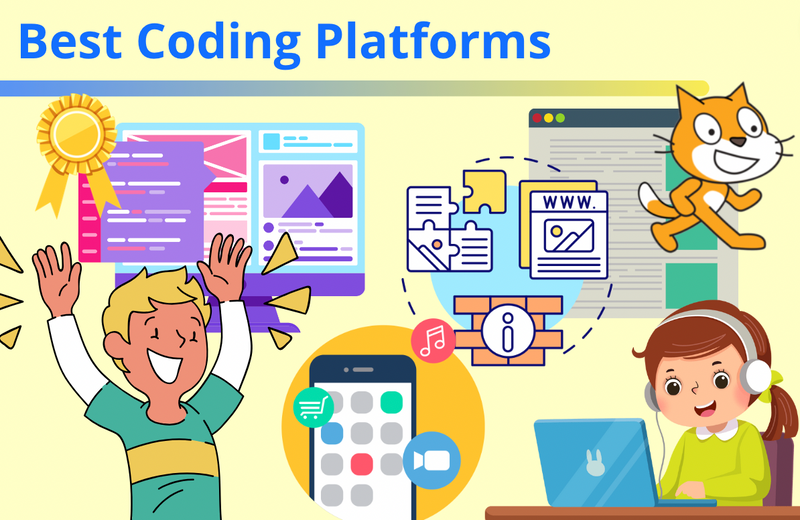
15 Remarkable Online Coding Platforms for Kids & Teens

25 Inspiring Computer Science Quotes
- Skip to main content
- Skip to primary sidebar

10 Problem Solving Games for Kids
Playing board games is one of the best ways to spend time with your children. Why? Board games offer ample ways for kids to build their brains. Not only does playing games with your children improve family relationships and give opportunities for caring adults to help nurture good sportsmanship but the best games build kids' critical thinking and problem solving skills.
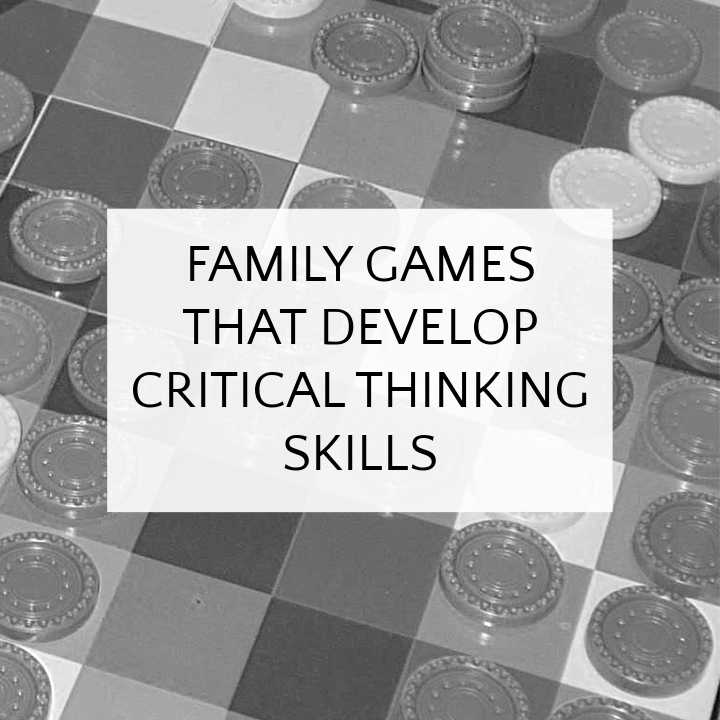
Note: this post contains affiliate links that may earn commission.
We've composed a list of problem solving games for kids that help develop the following critical skills:
- Advance planning - what steps do you need to make in order to reach your goal?
- Decision making - evaluating the benefits of multiple choices
- Drawing conclusions and inference - how will your opponent respond to your choice?
- Reevaluation - how you respond when the result is unexpected
Games work on all these skills while also being fun. What could be better? Here are our favorite 10 problem solving games for kids and families!
A note regarding age recommendations. I've included the manufacturer's recommendation, but most games can be played with younger kids, provided an adult is at the ready to assist.
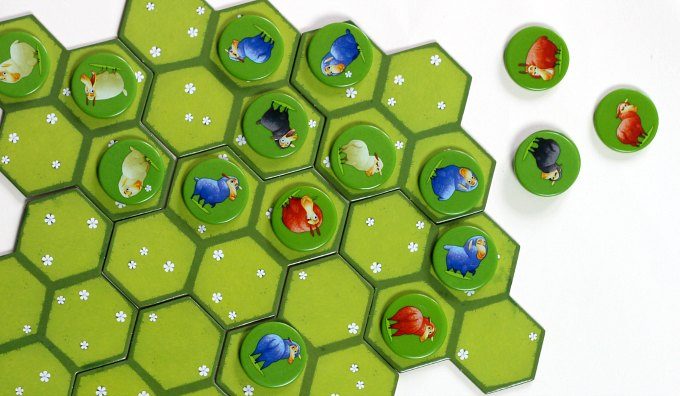
BATTLE SHEEP
Every time you play Battle Sheep the playing space is different! That's because players start with 4 pasture boards that they take turns placing down to create the playing field. Kids are using advance planning and reevaluation right off the bat! Each player begins with 16 sheep and aims towards occupying as many pastures as they can. Players must chose between placing sheep or strategically blocking their opponents. We love this game that engages players' abstract thinking, strategic, and visual perception skills. Ages 7 and up. 2-4 players.
Find it: Amazon
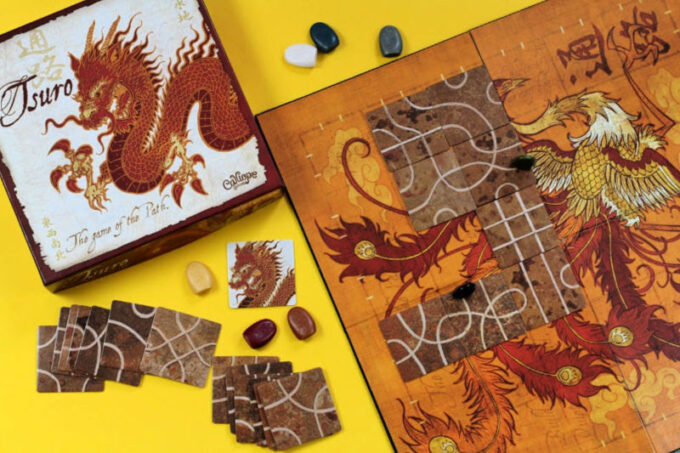
The board changes every time you play, keeping players on their toes and constantly reassessing their strategy. Players use tiles to create paths along which they move their tokens. The objective is to create paths in such a way that keep you moving but force your opponents off the board. Players must anticipate other's moves and problem solve in order accomplish both goals. Tsuro is also surprisingly easy to learn! Ages 8 and up. 2-8 players.
MORE : Our favorite tile-based games
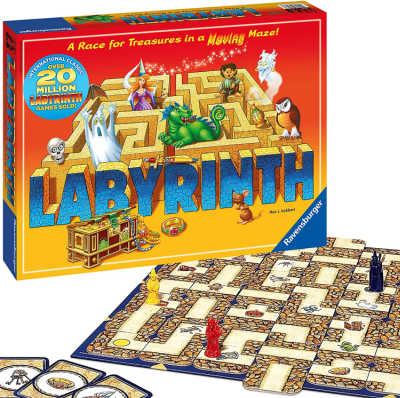
Players make their way through an ever-shifting maze in pursuit of treasure. Each player begins with a set number of treasure cards and the player who collects all their treasure first, wins. The board consists of moving panels and on their turn, a player shifts the panels in an effort to further their own progress or hinder that of others. Ages 7 and up. 2-4 players
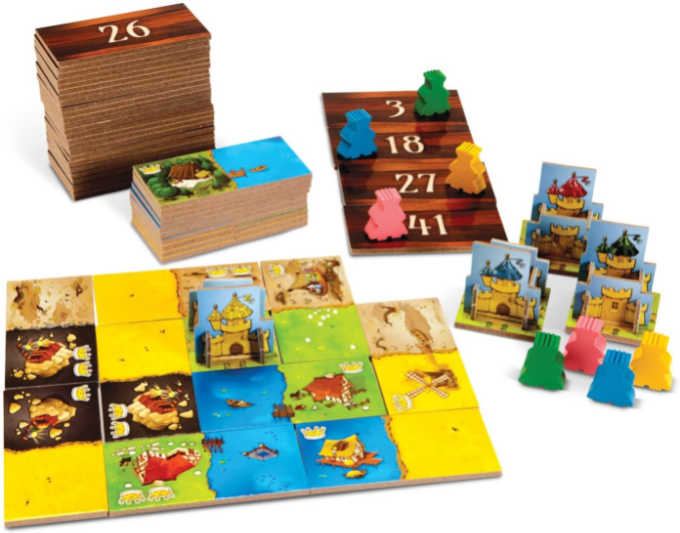
Kingdomino is a tile placing game in which players must make choices regarding how to build their kingdom. The objective of the game is to score as many points as possible by matching tiles based on terrain. But some terrains score more than others. Players must decide if they want to build a lot of low scoring terrains, or fewer high-scoring terrains. Your tile choice also affects the order of play for the next round so it's important to be thoughtful. We've throughly enjoyed this game. An expansion pack is available. Ages 8 and up. 2-4 players
Find it: Kingdomino | Expansion pack | Queendomino
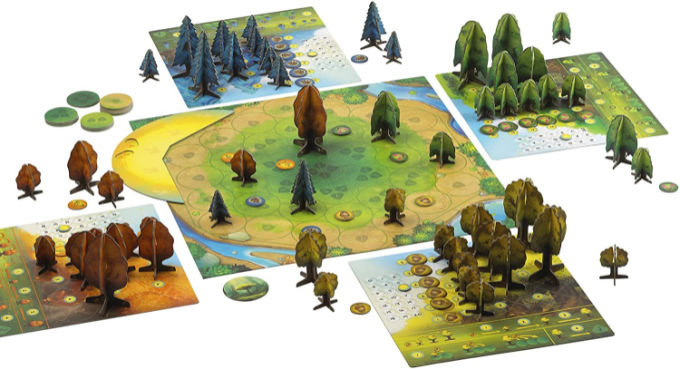
PHOTOSYNTHESIS
Photosynthesis from Blue Orange Games has an environmental theme. Players focus on growing trees through their life cycle from seed to maturity. Players strategize to "plant" their seeds where they will receive the most light, without being blocked in the future by other, maturing, trees. Successful game play requires planning and analysis. The artwork is beautiful and adds to the unique game play. We have enjoyed playing this game! Ages 8 and up. 2-4 players.
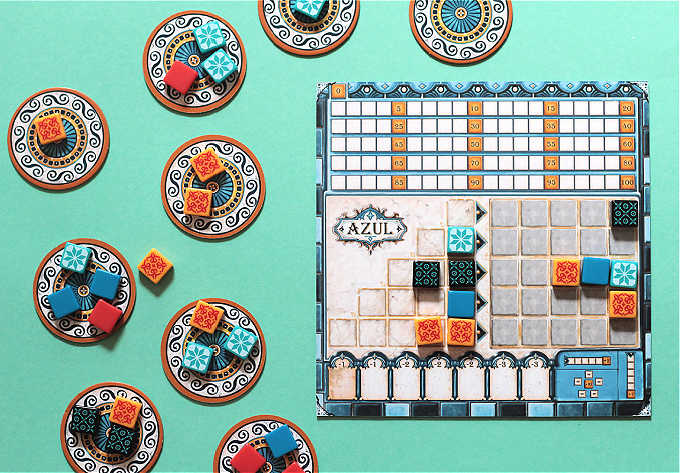
Azul's stunningly colorful game design was inspired by azulejos , a type of decorated ceramic tile introduced to Spain by the Moors and made popular in Portugal by King Manuel I. Players transform into tile laying artists, and must strategize over three phases of game play: choosing tiles, laying them and prepping for the next round. The object is to collect the most points by creating lines of 5 consecutive tiles. Each line of tiles must contain only one of each type of tile. The game ends when one player has completed a row, but that player is not necessarily the winner. Strategic problem solving and planning are required because players can lose points in the wall-tiling phase for any remaining, unused tiles. Ages 8 and up. 2-4 players.
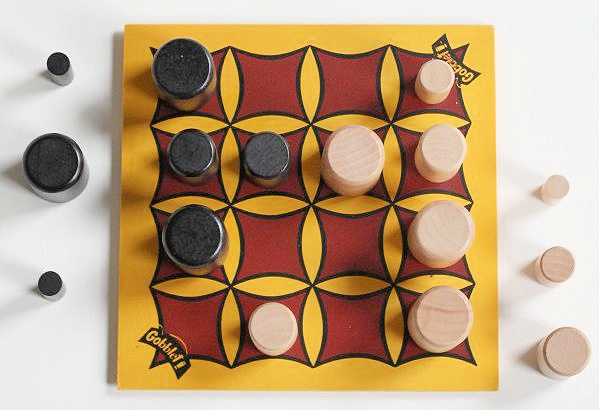
Gobblet looks like Tic Tac Toe but players have large, medium and small pieces that nestle inside each other like Russian dolls. Players attempt to get four in a row by "gobbling" up smaller pieces. The game relies on advance planning, anticipating your opponent's moves and memory skills since you have to remember which Gobblets have been gobbled without peeking! Ages 7 and up. 2 players. A version for ages 5 and up is available as Gobblet Gobblers.
Find it: Gobblet | Gobblet Gobblers
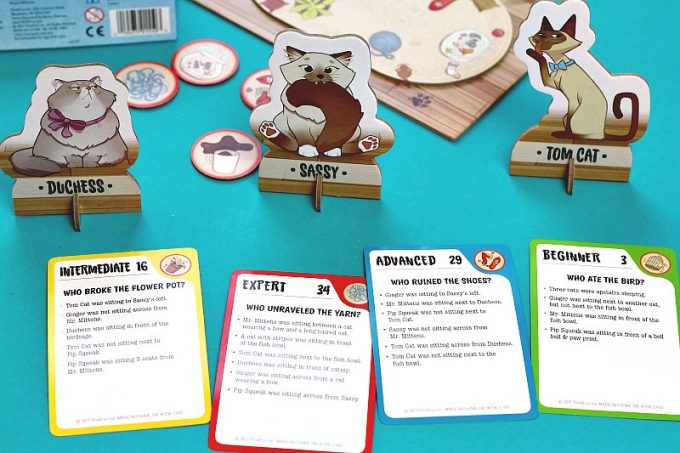
LOGIC GAMES
Logic games are the ultimate problem solving entertainment! We love single player logic games and probably own an unhealthy number of these brain boosting puzzle games.
The following are some of our top favorites:
- Cat Crimes , ages 8 and up ( pictured above ) - see it as our game of the month feature
- Code Master , ages 8 and up - see it as our game of the month feature
- Castle Logix , ages 3 and up - see it as our game of the month feature
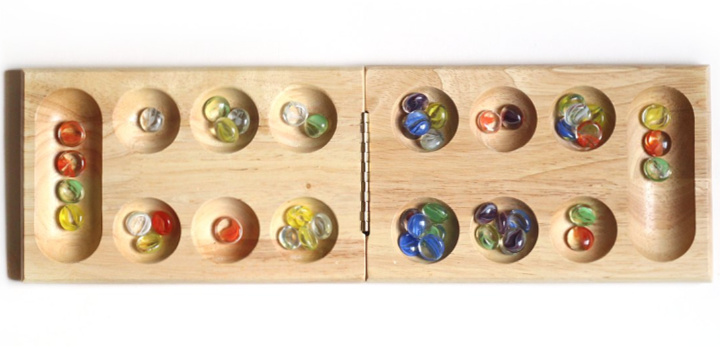
Mancala is a classic game every family should have. The board has two rows of depressions, plus end "home" bowls. The goal is to transfer the most stones from the rows into your home. A set of rules govern how you deposit and capture stones. You must use strategy to capture stones and ensure you do not leave them vulnerable to your opponent's greedy, greedy paws. Playing Mancala improves memory and observation skills. You must engage your strategic thinking skills to make sure you don't inadvertently give your opponent the opportunity to thwart you. Ages 8 and up. 2 players.
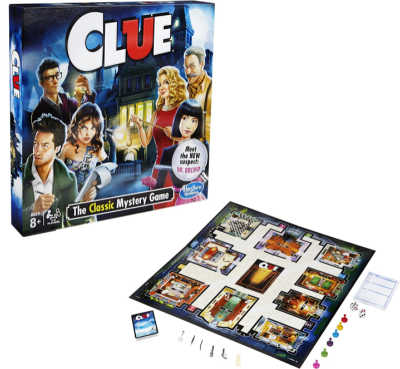
There's a reason the classic detective board game, Clue, remains so popular. I loved it when I was a kid and I bet you did, too. Players race to be the first person to solve the mystery of the who, what and where of a murder. Clue requires deductive reasoning and logic skills to narrow down the possibilities. Players must also vigilantly observe the actions of other players to help them make logical decisions. Ages 8 and up, 2-6 players ( much better with 3 or more players ).
- 6 games that improve visual perception
- Best award-winning games for each ages
- 12 best family games for all ages and skill levels
Reader Interactions
Leave a reply cancel reply.
Your email address will not be published. Required fields are marked *
This site uses Akismet to reduce spam. Learn how your comment data is processed .

Problem-Solving Skills for Kids: 10+ Games, Activities & Worksheets
Teaching Problem Solving Skills for Kids is about more than just solving math problems or deciding who gets the last piece of pizza. It’s about preparing them for real life, where they face many situations every day that require quick and effective decision-making.
It’s important for parents and educators to guide children to think creatively and keep trying, rather than solving every problem for them.
For example, if two children want the same toy, instead of deciding for them, encourage them to talk and come up with a sharing plan. This approach not only solves the immediate issue but also teaches valuable lessons in negotiation and fairness.
Kids who learn problem-solving skills become good at seeing challenges as chances to learn and grow, not just obstacles.
Table of Contents
What Are Problem-Solving Skills?
Think about a time when you had a messy pile of shoelaces or blocks. It might have seemed tough at first, but then you figured out how to sort it all step by step. That’s problem-solving!
Problem-solving skills are like superpowers for handling all kinds of challenges. Whether it’s sharing toys with friends or choosing a game that everyone enjoys, these skills help you find smart solutions.
It’s not just about solving problems.
It’s about understanding them, thinking creatively, and sometimes working together.
So, the next time you face a tricky puzzle or situation, remember you’re ready to use your problem-solving skills.
Are you ready to be a problem-solving hero?
Why Kids Need Problem-Solving Skills?
Imagine you’re on a team, tasked with building the tallest tower using blocks. Everyone has ideas, but how do you choose the best one? This is where problem-solving skills are essential.
Problem-solving is not just about figuring things out by yourself; it involves teamwork, understanding various perspectives, and finding solutions that satisfy everyone. It’s like being a detective in everyday life, solving puzzles that make life smoother and more enjoyable for you and your friends.
Being good at solving problems means you can better manage difficult situations, like sharing fairly or adjusting when plans change. This skill boosts your independence and confidence because you know you can tackle any challenge.
Plus, excellent problem solvers are valuable team members and friends that everyone appreciates.
Building Resilience
When children tackle problems and figure out solutions, they become more resilient. This resilience allows them to recover from difficulties and adopt a positive, growth-focused attitude.
As children handle more challenges by themselves, they start to see problems as hidden opportunities.
Fostering Independence
Problem-solving skills help kids become more independent. By learning to think critically and make their own decisions, children grow to rely on themselves.
This self-reliance is key to becoming a responsible adult. When parents and teachers support these skills, they empower kids to manage their own lives.
Teamwork and Collaboration
Teamwork and collaboration involve kids working together to find solutions and reach goals. It teaches them to share ideas, listen to each other, and work as a team.
During problem-solving, they come up with ideas, talk about them, and choose the best one. Everyone plays a part and their ideas are important.
Teamwork helps kids learn to cooperate, respect different opinions, and use each other’s strengths. This way, they can overcome challenges and come up with creative solutions together.
Academic Success
Helping kids succeed in school is about more than just learning facts. it’s about teaching them how to solve problems. These skills allow kids to think deeply, understand different situations, and come up with solutions on their own.
Through group projects, tough puzzles, and hands-on experiences, kids learn to face challenges with creativity and determination.
As they get better at solving problems, they become more confident and flexible, which helps them do well in school and encourages a lasting passion for learning.
Types of Problem-Solving Skills
Problem-solving skills for kids include critical thinking, creativity, and resilience. They learn to analyze complex problems by breaking them into smaller parts. Creativity helps them think of different solutions.
Being able to communicate well allows them to share ideas and work with others. Persistence and resilience teach them to keep going, even when things get tough.
These skills help children confidently solve problems on their own, which helps them grow and develop.
Creative Thinking
Creative thinking is all about seeing things from a new perspective. When kids learn to think creatively, they can come up with innovative solutions to problems.
This skill is valuable not just in academics but in all areas of life.
Critical Thinking
Critical thinking involves analyzing information and evaluating different solutions. It’s essential for problem-solving because it helps kids make informed decisions.
Teaching kids to ask questions, seek evidence, and consider different viewpoints enhances their critical thinking skills .
Decision Making
Decision-making is the process of choosing between different options. This skill is closely related to problem-solving because it involves weighing the pros and cons of various choices.
Helping kids understand the impact of their decisions and guiding them through the process strengthens their problem-solving abilities.
Strategies to Teach Problem-Solving Skills
Ready to help your kids learn problem-solving? It’s a valuable skill that can be enjoyable to teach. Here are some great ways to help your children become skilled problem solvers.
Start with guided play, where you create scenarios or games that pose challenges. For example, building a bridge with blocks to avoid a “lava floor” or figuring out how to share snacks equally. Guided play offers a safe environment for children to experiment and discover solutions.
Then, try story-based problem-solving. Use stories to present problems, and after reading, ask, “What would you do in this situation? ” This encourages kids to think critically and creatively about the issues in the story.
Encourage them to ask questions like “What if?” and “ Why not? ” This boosts their curiosity and enhances their problem-solving skills as they explore different outcomes.
Also, lead by example. When you encounter a problem, share your thought process out loud. Show how you consider options and consequences before making a decision.
This real-life demonstration can greatly influence their learning.
By using these strategies, you’re not only teaching your children to solve problems, you’re also equipping them with skills to handle school, friendships, and future careers
Encourage Curiosity
Encouraging kids to be curious helps them get better at solving problems. When kids are free to ask questions and find answers, they start thinking more deeply and creatively.
This is important for solving problems well. If kids have a safe space to explore and make mistakes, they learn a lot from those mistakes.
Role-Playing Activities
Role-playing activities are fun and interactive games where kids pretend to be different characters, like detectives or doctors.
They face various challenges that require them to think creatively, solve problems, and make decisions. This helps them develop important skills such as understanding situations, working together with others , and effective communication.
Open-Ended Questions
Open-ended questions are those that kids can’t simply answer with a “yes” or “no.” They help children think creatively and critically, boosting their problem-solving abilities.
By asking such questions, adults encourage kids to express their ideas and reasoning, which deepens their understanding and helps them come up with their own solutions.
This not only improves their communication skills but also helps them see different viewpoints and explain their thoughts. Overall, this method nurtures curiosity and equips kids to approach problems with confidence and creativity.
Reflective Practice
Reflective practice in problem-solving helps kids think about how they solved a problem. They learn which strategies worked and which didn’t.
This reflection helps them get better at solving problems, builds critical thinking, and teaches them to keep improving. It makes them stronger and more effective problem solvers as they grow.
Problem-Solving Games and Activities
Problem-solving games are not only fun; they’re also excellent brain training, helping you become quicker and more creative at solving problems.
Consider playing a treasure hunt where you solve riddles to find clues or building a maze for a toy car that you navigate using a straw. These activities require quick thinking, strategy, and foresight, mirroring real-life problem-solving.
Activities range from puzzles, where you piece things together, to strategic board games . Even team sports and pretend adventures teach you to observe, analyze, and act on key problem-solving skills.
Why not try these engaging games? Each puzzle you solve or strategy you perfect helps you become a better problem solver.
Ready to learn while playing? Let’s start and discover the great solutions you can create!
Puzzles and Brain Teasers
Puzzles and brain teasers are fun ways to boost kids’ problem-solving skills. These challenges can be jigsaw puzzles, tricky riddles, or math puzzles, all designed to make kids think critically and creatively.
By solving them, kids learn to break down problems, be persistent, and find different solutions.
Jigsaw puzzles, Sudoku, Rubik’s cubes or Riddle Generator
STEM Challenges
Set up STEM (Science, Technology, Engineering, and Mathematics) challenges in which kids build structures with blocks , design paper airplanes, or create simple machines using household items.
Websites like NASA’s “STEM Activities for Kids” offer great resources.
Indoor/ Outdoor Scavenger Hunt:
Create a scavenger hunt in your backyard or a nearby park. Give kids a list of items to find or clues to follow, encouraging teamwork and problem-solving.
Learn More here at : Indoor scavenger Hunt , Nature Scavenger Hunt . Halloween Scavenger hunt
Scenario-based Activities
While problem-solving activities are fantastic for developing cognitive skills, it’s equally crucial to equip kids with the tools to handle social challenges.
One way to cultivate these skills is by engaging kids in scenario-based activities. Present various social situations and ask, “What will you do?” Then, offer four alternatives to choose from. like
- Your friend wants to play with your favorite toy, but you don’t want to share it. What will you do?
- During recess, you notice a classmate sitting alone and looking sad. What will you do?
- Someone in your class is being teased by others. What will you do?
- Your friend borrowed a book from you and accidentally ripped a page. What will you do?
- You’re playing a game with your friends, but one of them keeps cheating. What will you do?
These scenarios cover a range of social interactions and dilemmas. Allow kids to give their own Perspectives on each. Offering alternatives will ease their thinking process. Here is the “What will you do?” Worksheet to download and use.
Science Experiments:
Conduct simple science experiments at home that involve problem-solving, like creating a DIY volcano or testing the buoyancy of different objects.
Here is the list,
- Sink or Float
- Paper Airplane Engineering
- DIY Volcano
- Magnetic Attraction
- Color Changing Milk
- Gummy Bear Osmosis
- DIY Rainbow
Board Games:
Play board games that require strategic thinking and decision-making, such as chess, checkers, or strategy-based card games like Uno or Settlers of Catan. here is the List
- Settlers of Catan Junior
- Ticket to Ride
- Robot Turtles
- Rush Hour Junior
- Forbidden Island
Art Challenges:
Give kids art challenges like drawing a picture using only geometric shapes or creating a sculpture from recycled materials. This encourages creative problem-solving and thinking outside the box. Like
- Collage Making With magazines, colored paper, fabric scraps, buttons, and beads
- Painting with Unconventional Tools Like sponges, cotton swabs, toothbrushes, or even vegetables
- Found Object Sculptures Like twigs, stones, bottle caps, and cardboard.
- Story Illustration
- Mosaic Art With cardboard or wood
- Shadow Drawing
- Tape Resist Art on on a canvas or paper
Escape Room Challenges :
Design a DIY escape room at home with age-appropriate puzzles and riddles. Kids can work together to solve clues and unlock the “escape.”
Trial and Error
Trial and error is a fantastic way for Kids to learn and explore new things. Just like we navigate the complexities of new gadgets, kids can dive into the world of toys and games with curiosity and determination.
Instead of giving kids all the instructions upfront, encourage them to experiment with different ingredients and techniques.
The kid might make a mess or burn a few pancakes along the way, but through trial and error, [he/she] will gradually learn how to whip up delicious meals.
Problem-solving skills are essential for kids to grow and succeed. These skills help children become strong, independent, and skilled.
Parents and educators can teach problem-solving through fun methods like role-playing , games, or asking open-ended questions .
It’s important to equip kids with the right tools so they can confidently and creatively face any challenge.
😍 Want to Read More, Explore 👇 This Article
I’m a former teacher (and mother of Two Childs) with a background in child development. Here to help you with play-based learning activities for kids. ( Check my Next startup Cledemy.Com )
Leave a Comment Cancel reply
Save my name, email, and website in this browser for the next time I comment.

1 (844) 773-3822
26 Powerful Problem Solving Activities for Kids
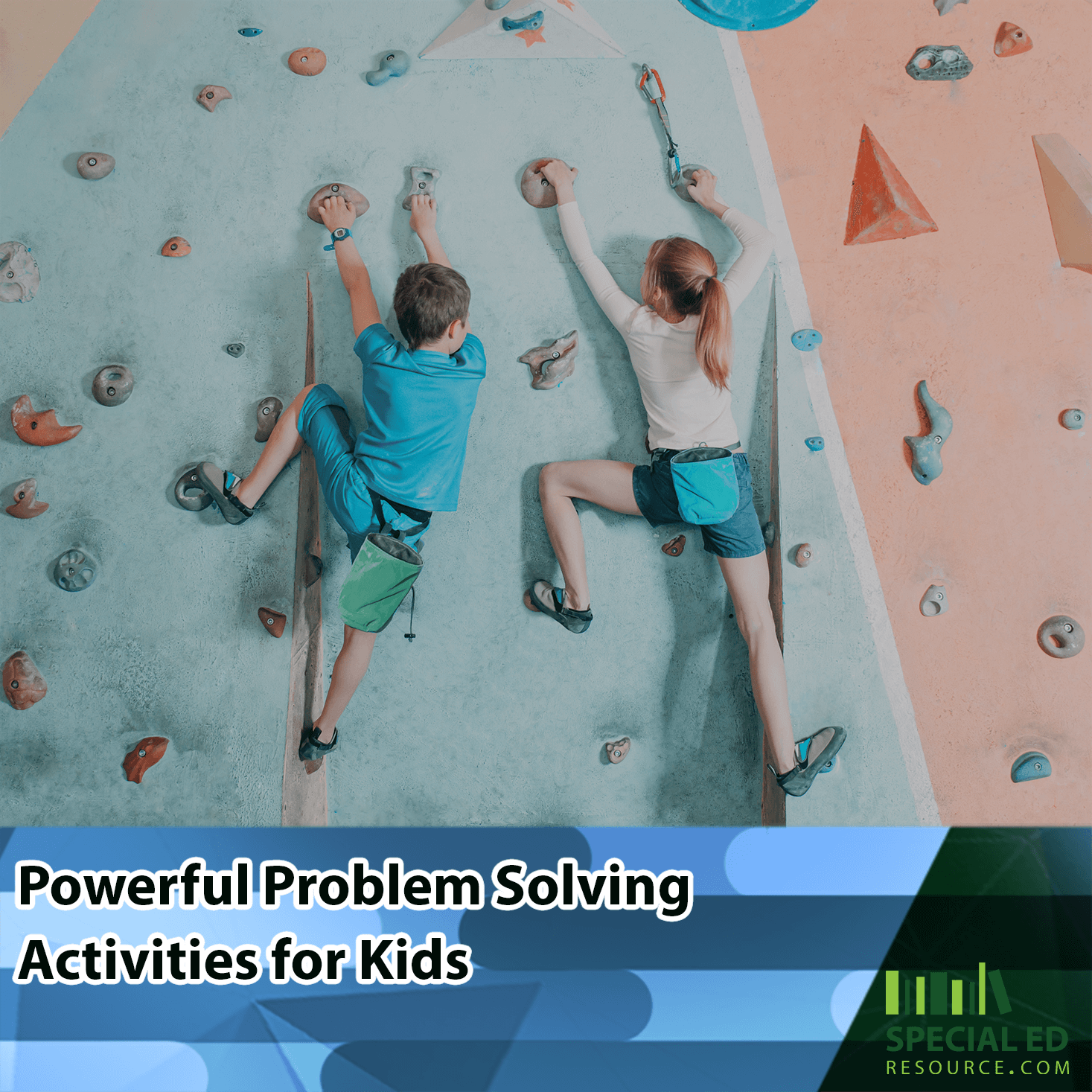
As you navigate the busy aisles of the grocery store, your child’s hand firmly in yours, you’re hit by a sudden realization. You’re not just shopping for groceries; you’re in the midst of an impromptu problem solving class.
Your child, curious and eager, starts asking you questions:
- “Why do we choose this cereal and not that one?”
- “How do we know how many apples to buy?”
In these moments, you’re more than a parent; you’re a guide, helping your child understand and navigate the world. It’s not always easy, especially when your child faces unique challenges.
You know their path is a little different, their learning style distinct. You want to equip them with skills beyond the basics and empower them to tackle the hurdles life throws their way.
Problem solving isn’t just about finding solutions; it’s about building resilience, confidence, and creativity.
You’ve seen it firsthand – the spark of understanding in your child’s eyes, the proud smile when they figure something out. These small victories remind you of the importance of nurturing these skills.
But where do you start? How do you turn everyday moments into enriching learning experiences?
One way is to challenge your children by regularly providing them with problem solving activities. Here is a list of ideas:
Want One-On-One Expert Help?!
Check this out.
#1 Puzzles and Brain Teasers
As you sit beside your child, engaging in a puzzle or brain teaser, you do more than spend quality time together. These activities are key in honing their problem solving skills, which are essential for their growth and development.
Why Puzzles and Brain Teasers Are Beneficial?
– enhances critical thinking: .
Your child learns to approach problems systematically, analyzing and forming strategies.
– Improves Concentration:
These activities require focus, helping your child develop a deeper concentration level.
– Builds Persistence:
Facing challenging puzzles teaches them not to give up easily, fostering resilience.
– Encourages Independent Problem Solving:
As they work through a puzzle, they learn to rely on their skills and intuition, boosting their confidence.
Examples for Different Age Groups
– younger elementary students (5-8 years): .
Start with jigsaw puzzles that have a moderate number of pieces. Simple word puzzles or riddles are also great to stimulate their thinking.
– Older Elementary Students (9-12 years):
Introduce more complex puzzles, like jigsaws with more pieces, logic puzzles, and basic Sudoku. These challenge their thinking and improve logical reasoning.
– Teenagers (13-18 years):
Engage them with advanced puzzles, such as 3D puzzles, crosswords, and challenging brain teasers that require abstract thinking.
When choosing these activities, consider your child’s interests and abilities to keep them motivated and engaged. It’s not about the complexity of the puzzle but the process of finding solutions and the learning that comes with it.
As they tackle these challenges, they’re not just solving puzzles. They’re building skills that will help them navigate the complexities of life.
Role-Playing Games
Envision your child diving into the world of a detective, a scientist, or a historical figure. Through role-playing games, they’re not just engaging in play.
They’re sharpening their problem solving skills imaginatively and dynamically.
Benefits of Role-Playing Scenarios
– fosters creative problem solving: .
Role-playing challenges your child to think on their feet, creating solutions in diverse scenarios.
– Develops Empathy and Social Awareness:
Taking on different roles helps them understand various perspectives, building empathy and social skills.
– Strengthens Communication Abilities:
These activities encourage clear and effective communication , vital for problem solving.
– Tailored to Individual Learning Styles:
Role-playing can be adapted to suit your child’s unique needs and interests, making it an inclusive learning tool.
Role-Playing Ideas
#2 mystery detective: .
Set up a mystery game where your child has to find clues and solve a case. This can be made more complex for older children, involving critical thinking and deductive reasoning.
#3 Historical Role-Play:
Have your child take on the role of a historical figure. They can navigate historical events, making decisions based on the context, which enhances their understanding of history and its challenges.
#4 Science Explorer:
Create scenarios where your child is a scientist or an explorer facing environmental or scientific problems. They can develop innovative solutions, fostering a love for science and exploration.
#5 Future World Builder:
Engage older children and teens in creating and managing a city or civilization in the future. This kind of role-play involves strategic planning, resource management, and ethical decision-making.
When engaging in these activities, the focus should be on learning through experience and fun. Encourage your child’s imagination, validate their ideas, and guide them through the problem solving process.
Remember, role-playing is a powerful tool that can make learning enjoyable and impactful for your child.
Building and Construction Projects
Whether it’s a simple craft project or a more complex construction task, these activities are not just about creating something tangible. They’re about building problem solving skills.
Why Building Activities Enhance Problem Solving?
– encourages practical thinking: .
As your child figures out how to assemble parts, they learn to think logically and sequentially.
– Develops Spatial Awareness:
Understanding how different pieces fit together improves their spatial intelligence.
– Fosters Creativity and Innovation:
They’ll learn to think creatively as they design and build, especially when improvising solutions.
– Teaches Planning and Organization:
Planning out a project helps develop organizational skills and forward-thinking.
Safe and Accessible Building Project Ideas
#6 cardboard creations: .
Use cardboard boxes to build anything from simple houses to intricate castles. This is safe, easy, and allows for endless creativity.
#7 DIY Birdhouse or Insect Hotel:
Older children can take on projects like building a birdhouse or an insect hotel, which involves more planning and precision.
#8 Recycled Material Sculptures:
Encourage your child to create sculptures using recycled materials. This not only sparks creativity but also teaches the value of recycling.
#9 Simple Woodworking Projects:
Consider basic woodworking projects for teenagers, like a small shelf or a picture frame. Ensure supervision and safety measures are in place.
Remember, the goal is to challenge yet not overwhelm. Start with simpler projects and gradually increase complexity based on your child’s interest and skill level.
Encourage their efforts, celebrate their successes, and most importantly, enjoy the process of building and learning together. This is where practical skills meet creativity, leading to effective problem solving.
Technology and Problem Solving Activities
In today’s digital age, apps and games can be much more than distractions; they can be tools for learning and development.
Why Technology Aids Problem Solving?
– interactive learning: .
Digital platforms offer interactive experiences that keep children engaged and actively learning.
– Adaptive Challenges:
Many apps and games adjust their difficulty based on your child’s progress, providing a continuous and appropriate challenge.
– Visual and Auditory Stimulation:
Graphics and sound in digital games enhance cognitive skills and problem solving abilities.
– Accessibility:
Technology can offer tailored learning experiences, especially beneficial for children with special needs.
Recommended Apps and Games
#10 puzzle games: .
Look for puzzle apps that challenge spatial reasoning and logical thinking. Examples include tangram-based games or block-fitting puzzles.
#11 Strategy Games:
Games that require planning and strategy, like turn-based strategy games or resource management simulations, are great for older children.
#12 Coding for Kids:
Introduce basic programming concepts through kid-friendly coding apps. These teach logical thinking and problem solving in a fun, interactive way.
#13 Educational Adventure Games:
Choose adventure games incorporating math, science, or language puzzles within an engaging storyline.
When selecting apps and games, focus on age-appropriate ones, considering your child’s interests and skill levels. The goal is to find digital tools that challenge and educate, not just entertain.
Encourage your child to reflect on what they learn and apply these skills beyond the screen. In this way, technology becomes a valuable ally in developing your child’s problem solving abilities.
#14 Escape Room Games
Visualize your child and their friends (or your family) immersed in the thrilling world of an escape room. This isn’t just an exciting game. It’s a dynamic learning experience where essential skills are developed as they work to solve puzzles and ‘escape.’
Benefits of Escape Room Activities
– teamwork: .
Escape rooms are a fantastic way for kids to learn the value of teamwork. They discover the importance of working together, communicating effectively, and sharing tasks to achieve a common goal.
– Critical Thinking:
These games push children to think outside the box. They must look beyond the obvious, develop creative solutions, and apply critical thinking to overcome challenges.
– Communication:
Effective communication is crucial in escape rooms. Your child learns to express their ideas clearly, listen to others, and collaborate to solve puzzles.
– Problem Solving:
Escape rooms are all about solving a series of puzzles. Kids learn to identify problems, analyze them, and develop creative solutions under pressure.
Creating an Escape Room Experience at Home
– diy home escape room: .
Set up a simple escape room at home. Use clues related to your child’s interests, and create challenging yet solvable puzzles. It can be a simple treasure hunt with clues leading to the next step.
– Escape Room Board Games:
There are board games available that mimic the escape room experience. These are great for rainy days or quiet evenings at home.
– Digital Escape Rooms:
There are also digital escape room experiences, perfect for children who enjoy online gaming. Choose ones that focus on teamwork and problem-solving that are age-appropriate.
Remember, the goal is to challenge and engage your child in a fun, collaborative way.
Through escape room activities, they enjoy an exciting adventure and develop essential life skills that will serve them well academically and personally.
#15 Indoor Rock Climbing
This activity is often overlooked, but it’s an incredible way for children of all ages and abilities to develop many skills beyond physical strength.
Multifaceted Benefits of Indoor Rock Climbing
– problem solving skills: .
As your child figures out the best climbing route, they use critical problem solving skills. Deciding which hold to grab next requires quick thinking and strategy, skills transferable to everyday challenges.
– Coordination:
Rock climbing demands a harmony of movements between hands and feet. This enhances your child’s coordination, a valuable skill in many other aspects of their life.
– Strength Building:
Climbing strengthens not just the arms and legs but the entire body. It’s a full-body workout that improves physical strength and endurance.
– Stamina Development:
Maintaining their position on the wall for an extended period builds stamina. This persistence is mirrored in their ability to stay focused on other activities.
– Focus and Concentration:
Successfully climbing requires complete concentration. Your child learns to focus their mind on the task at hand, a skill that’s invaluable in school and other settings.
– Self-discipline:
Rock climbing teaches self-control and emotional regulation . Staying calm and composed on the wall is essential for safety and success.
– Boosting Confidence:
Each climb is a boost to your child’s self-esteem . Believing in their abilities to reach the top instills a sense of accomplishment and confidence.
Getting Started with Indoor Rock Climbing
– find a kid-friendly facility: .
Look for indoor climbing centers that offer sessions for children. They provide the necessary equipment and guidance in a safe environment.
– Start with Basic Walls:
Begin with walls designed for beginners, gradually moving to more challenging climbs as your child gains confidence and skill.
– Encourage Regular Practice:
Consistency is key. Regular climbing sessions will help your child improve their skills steadily.
Remember, rock climbing is not just about reaching the top; it’s about the journey. Each step your child takes up that wall is a step towards building essential life skills in a fun, engaging, and challenging environment.
#16 Obstacle Courses
Imagine setting up a fun, engaging obstacle course in your backyard or living room. This isn’t just an entertaining activity for your child. It’s a comprehensive learning experience that builds many life skills.
Valuable Life Skills Gained from Obstacle Courses
– teamwork and cooperation: .
Obstacle courses often require collaboration. Your child learns the importance of working together, sharing strategies, and helping peers to achieve common objectives.
Each obstacle presents a unique challenge. Your child learns to think quickly, devise strategies, and find creative solutions to navigate through them.
– Perseverance and Determination:
Obstacle courses can be challenging, teaching your child the value of persistence and grit. They learn to keep trying, even when faced with challenging tasks.
– Large Motor Fitness:
These courses are excellent for enhancing physical fitness, improving strength, balance, and coordination.
– Mental Fitness:
Besides physical agility, obstacle courses sharpen mental skills like focus, concentration, and stamina.
Setting Up a Simple Obstacle Course
– indoor course: .
Use household items like chairs, cushions, and tables to create a safe indoor course. This can include crawling under tables, hopping between cushions, or balancing along a taped line on the floor.
– Outdoor Course:
Use natural elements like trees, hills, or simple items like ropes and hula hoops for outdoor space. Set up tasks like weaving between trees, climbing small hills, or jumping through hoops.
– Incorporate Diverse Activities:
Add variety to your course with activities like throwing a ball into a bucket, balancing a book on the head, or hopping on one foot. This keeps the course dynamic and engaging.
Remember, the primary goal is to have fun while learning. Encourage your child, celebrate their successes, and perhaps even join to model teamwork and sportsmanship.
Through obstacle courses, your child enjoys physical activity and develops crucial life skills in an exciting and hands-on way.
Cooking and Baking Projects
Cooking and baking are not just about creating delicious treats; they’re an excellent way for your child to learn and practice many skills.
Skills Developed Through Cooking and Baking
– math and measurement skills: .
Recipes require measuring ingredients, which is a practical way for your child to learn about fractions, volumes, and weights.
– Reading and Comprehension:
Following a recipe improves reading skills and comprehension. Your child learns to follow instructions and understand the sequence of steps.
– Science and Chemistry:
Cooking is a fun way to introduce basic science concepts. They’ll learn about chemical reactions, like how yeast makes dough rise or how heat changes food.
– Creativity and Experimentation:
Encourage your child to be creative, whether decorating cookies or experimenting with flavors. This fosters their artistic side and teaches them about trial and error.
– Life Skills and Independence:
Cooking and baking are essential life skills. By learning these, your child gains a sense of independence and accomplishment.
Ideas for Cooking and Baking Projects
#17 simple recipes: .
Start with easy recipes like no-bake cookies, fruit salads, or sandwiches. These are perfect for younger children.
#18 Theme Cooking:
Make cooking more engaging by tying it to a theme or a subject they’re learning in school, like baking pies when learning about circles in math.
#19 International Cuisine:
Explore recipes from around the world. This not only introduces new flavors but also teaches about different cultures.
#20 Weekly Cooking Day:
Dedicate one day a week to cook or bake something special with your child. It could be a time to try new recipes or perfect old favorites.
Remember, the kitchen is a fantastic classroom. It’s a place where your child can learn, make mistakes, and enjoy the fruits of their labor! Encourage them, guide them, and most importantly, have fun together in this delicious learning journey.
Incorporating Everyday Situations
As you go about your daily routine with your child, consider the myriad learning opportunities in these simple moments. Everyday tasks, often overlooked, are fertile ground for developing problem solving skills.
Turning Routine Activities into Problem Solving Exercises
#21 grocery shopping: .
Turn a regular shopping trip into a math lesson. Have your child help with making a budget, calculating discounts, or comparing prices. They learn about money management, estimation, and decision-making.
#22 Planning a Route:
If you’re heading out to multiple places, involve your child in planning the route. Discuss factors like distance, time, and traffic. This teaches them about logistics, time management, and geographical orientation.
#23 Organizing Spaces:
Ask your child to think of the best way to organize it, whether it’s their room, a bookshelf, or the living room. This encourages them to think about space utilization, categorization, and orderliness.
#24 Meal Planning:
Involve them in meal planning for the week. They can help decide the menu, ensuring a balance of nutrition. This teaches them about health, planning, and the importance of variety.
#25 DIY Home Projects:
Simple home projects, like planting a garden or painting a fence, can be excellent problem solving exercises. They learn about the process, the necessary materials, and the steps to complete a project.
#26 Time Management:
Encourage your child to plan their day or week, balancing schoolwork, chores, and leisure. This helps them develop critical time management and prioritization skills.
Each of these activities, while mundane, is an opportunity for your child to think critically, make decisions, and solve problems.
The key is actively involving them, asking open-ended questions, and encouraging them to think through their choices.
This way, everyday tasks become more than just chores. They become stepping stones in your child’s developmental journey.
Tips for Success
As you embark on these activities with your child, keeping them engaged and motivated is crucial. Here are some practical tips:
Keeping Children Engaged and Motivated
– set achievable goals: .
Start with simple tasks and gradually increase the difficulty. Achieving these smaller goals will boost your child’s confidence and motivation.
– Incorporate Their Interests:
Tailor activities to include your child’s hobbies or favorite subjects. This personal connection makes learning more exciting and relatable.
– Offer Positive Reinforcement:
Praise their efforts, not just the outcomes. Celebrate their progress and perseverance, which encourages a growth mindset .
– Create a Routine:
Establishing a consistent activity schedule helps build discipline and a sense of anticipation.
– Provide Choices:
Give your child options in activities or ways to complete them. This sense of control can be very motivating.
– Break Down Tasks:
For complex activities, break them into smaller, manageable steps. This makes the task more manageable and more approachable.
Adapting Activities for Children with Special Needs
– simplify instructions: .
Use clear, concise language and visual aids if necessary. Breaking instructions into smaller steps can be very helpful.
– Flexible Approach:
Be open to adapting activities based on your child’s needs. This could mean altering the pace, reducing sensory inputs , or providing additional support.
– Incorporate Sensory Activities:
For children who benefit from sensory input, include activities that engage different senses .
– Use Assistive Technology:
For children with physical or learning disabilities, utilize available technology to facilitate their participation and learning.
– Foster a Safe Environment:
Ensure the learning environment is safe, supportive, and free from unnecessary pressures or distractions.
– Collaborate with Educators and Therapists:
Work with your child’s teachers or therapists to align activities with their educational and therapeutic goals.
Remember, being patient, adaptable, and responsive to your child’s needs and responses is vital. Your support and encouragement can make a significant difference in their learning journey.
As you step into this journey of enriching your child’s learning through these diverse activities, remember that each moment spent together is about achieving a goal and creating lasting memories and invaluable learning experiences.
Your role in guiding and supporting your child through these activities is a powerful force in their development.
We would love to hear about your adventures and discoveries. Share your stories with us in the comments below!
Whether it’s the proud smile of your child solving a puzzle, the excitement of completing a DIY project, or the laughter that fills your kitchen during a cooking session, your experiences can inspire and encourage other parents embarking on similar journeys.
Additional Resources for Learning
- 29 Fun Activities to Help Kids Focus (With Proven Results)
- Fun Winter Break Activities for Kids Guaranteed to Bust Boredom
- 21 Simple & Fun Gratitude Activities for Kids
- The Ultimate Guide to Summer Learning Activities (Your Child Will Love)
If you enjoyed this article, please consider sharing it on Pinterest and Facebook. Join our Special Ed Parenting Facebook Community to connect with other parents of special needs children.
Do you have a child that needs one on one assistance?
We offer one-on-one special education tutoring that can be done from anywhere the student is! Why? Because our special education experts conduct their sessions online!
Get started with a free consultation today!
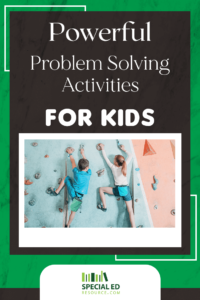
Shannah Holt
Leave a reply cancel reply.
Your email address will not be published. Required fields are marked *
Name *
Email *
Add Comment *
Save my name, email, and website in this browser for the next time I comment.
Post Comment
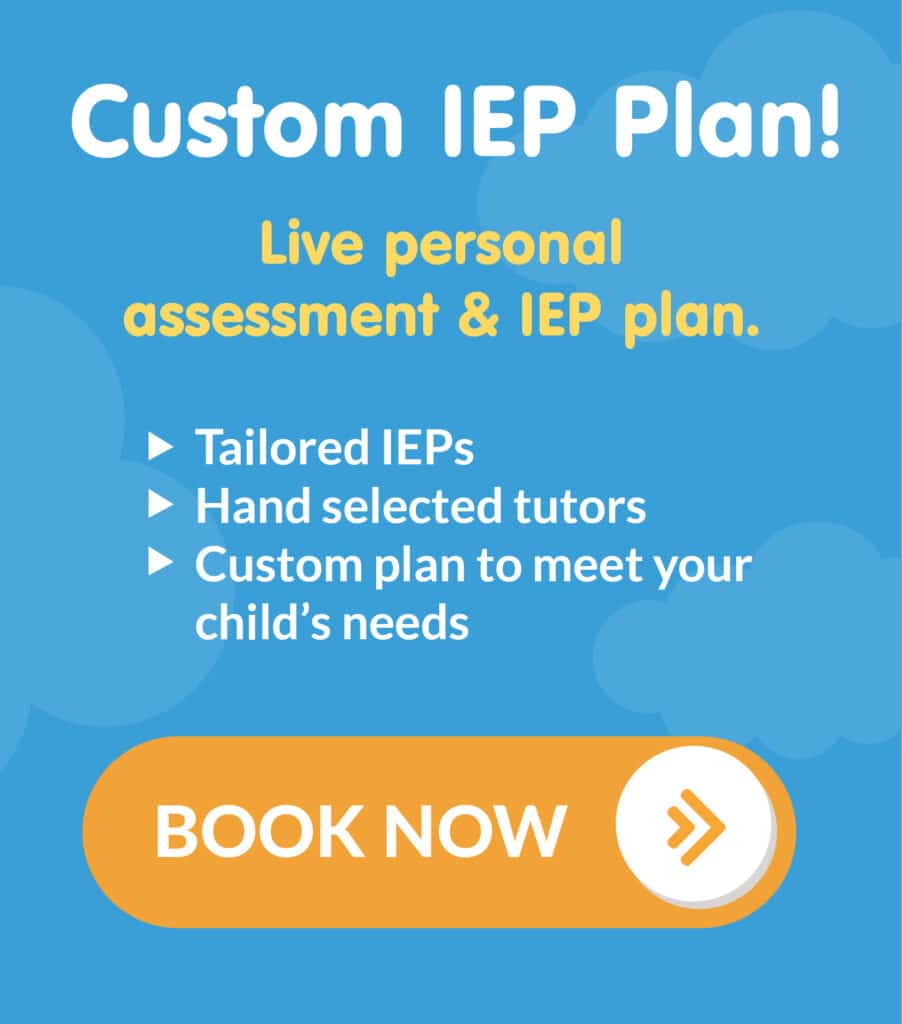
Our Services
- Special Education Tutoring
- IEP Consulting
- Special Needs Advocacy
- Home Schooling

Popular Articles
7 step iep process.
- Creative Writing Activities
- Activities to Help Kids Focus
- Self-Contained Classroom Defined
- 10 Benefits of Special Needs Tutoring
- What is Cognitive Behavioral Therapy for Children?
- Classroom Accommodations for Executive Function Disorder
- 45 Executive Functioning Activities for Kids 5-12
- What is Nonverbal Learning Disorder (Signs of NVLD)
- What is Executive Function Disorder in Children?
- 105 Creative Spring Writing Prompts for Kids and Teens
Think Differently About Education. We Believe…

We assess your child’s learning style, personality, and interests to pair them with the ideal special ed tutor based on their individual needs.

Through technology and one on one learning, their future path to success can be made clear again.
Are you ready to see confident progress in your child?
Get started with a no-obligation consultation today!

There are hundreds of resources found on our website, SpecialEdResource.com, and on our YouTube channel that were created to help parents JUST LIKE YOU understand the cryptic language of special education.
Important Links
Copyright © 2024 SpecialEd Resource – Design by DeskTeam36 0
- Terms & Conditions
- Privacy Policy
- Join Your Trial Class
- Book FREE Trial Now


Top 15 Problem Solving Activities for Kids [2022 List]
As they get older, children have countless opportunities to learn about the world. They do, however, face issues daily, whether it be peer pressure, complex mathematical computations, or arguments with their peers.
The advantages of problem-solving abilities for children are vast, and they may help them deal with such circumstances efficiently.
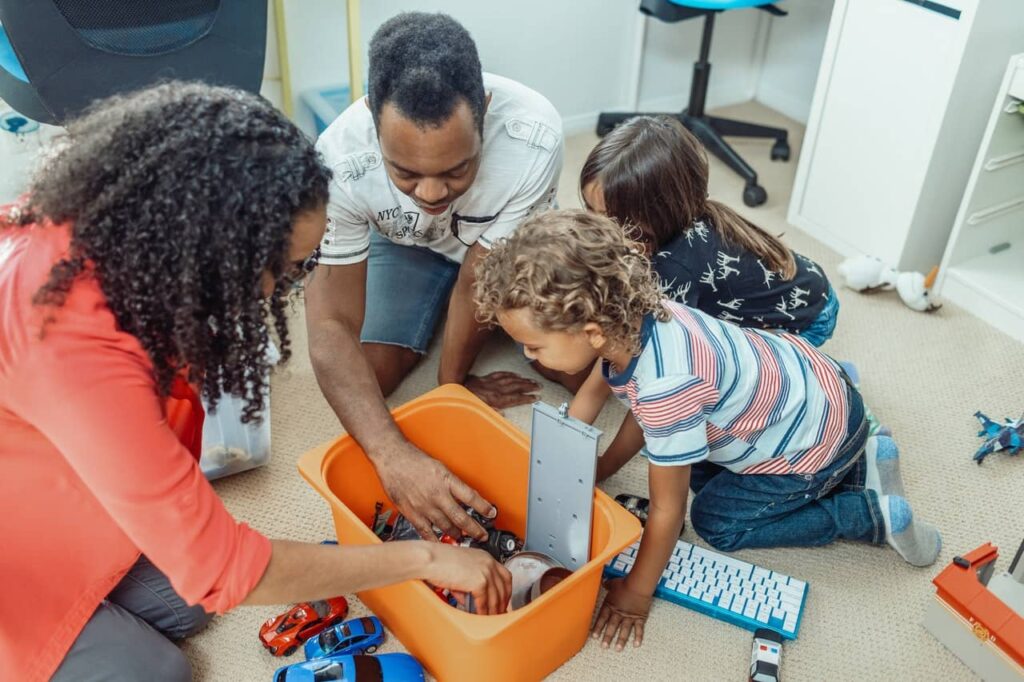
They will learn to develop practical answers on their own, without the assistance of an adult. Furthermore, when faced with challenges, students will be more confident in their abilities to use problem-solving skills and generate unique solutions on their own.
Read on to learn about the importance of problem-solving abilities in children, how to install this talent in them, and some activities to help them develop this important skill.
Table of contents
- The Importance of Problem Solving Skills in Children
- How to Teach Children Problem-Solving Skills?
- 15 Problem Solving Activities for Kids
The Importance of Problem Solving Skills in Children
Children gain from problem-solving in a variety of ways. It is beneficial to them.
- Deal with problems in regular life.
- Make sound judgments.
- Along the way, learn additional skills including teamwork, critical thinking, and collaboration.
- Problems should be solved without being broken down.
- Consider thinking beyond the box.
- Develop your independence.
How to Teach Children Problem-Solving Skills?
Here are a few ideas for encouraging your child to use their problem-solving abilities.
- Put it to the Test!
Encourage your youngster to accept the challenge when they are confronted with a problem. If the outcomes are unsuccessful, they might try different strategies.
Your child will be able to think about a subject from several angles as a result.
- Seek Counsel
Decision-making is a tough task. For example, you could have difficulty deciding what to prepare for supper or what to wear to the movies. Asking your children for assistance in decisions is an excellent choice.
When you approach them for guidance, they believe that they are not alone in their struggles. When you appreciate their ideas, they will gain the confidence to tackle challenges on their own.
- Take a Long, Deep Breath.
Maintaining your calm in difficult situations is one of the first steps toward effective problem-solving. Even among children, when their emotions run wild, it is difficult to think sensibly, and the temptation to make rash judgments increases.
It is critical to encourage your youngster to take deep breaths whenever they feel out of control of their emotions. They can better appraise the problem once they are calm.
- State the Issue Verbally.
Your child should openly express how they feel and what they are going through when they have calmed down. It provides them with a distinct perspective and facilitates the generation of alternate solutions.
- Do not give “The Solution”
It is not a good idea to provide immediate solutions to children’s problems. Instead, provide them with advice to assist them in solving the problem on their own. This will help them to think about solutions that are beneficial to them.
- Set a Good Example
Children quickly absorb knowledge like sponges. Therefore, when you approach an issue and find a workable solution, children will be inspired by your strategy and want to follow you.
- Allow the Natural Consequences to Play out.
Allowing a situation to take its course is sometimes the best approach to dealing with it. So, if your child encounters a challenge, let them be.
Assume your child spent their entire weekly allowance in a day or two; allow them to go the entire week without receiving any money. This will position them to make better decisions in the future.
15 Problem Solving Activities for Kids
There is no better way to learn than by playing. The following exercises are enjoyable and challenge youngsters to demonstrate their problem-solving abilities.
- Riddles
Riddles for kids are fantastic games for problem-solving. They come at various levels of difficulty. The appropriate one may be chosen based on your child’s age.
If you give children a puzzle, they will learn to consider the issue or question, generate potential answers, and select one.
Additionally, the practice will help students improve their hand-eye coordination, gross motor skills, and critical thinking. Also, if your kids have a way with words then what better than to engage them in wordle for kids !
- Scavenger Quest
Scavenger hunts are an instructive activity that every parent should offer to their children. It is a low-cost, easy, and entertaining activity that can be practiced both inside and outside and just requires materials you already have at home.
The activity encourages youngsters to think beyond the box. They are pleasantly acquiring problem-solving skills without even realizing it.
- Storybooks
The advantages of reading are countless. Problem-solving is one of them. While reading, children are introduced to several characters and their roles. They frequently connect with these figures. Undoubtedly, stories for kids are great resources to stimulate their minds!
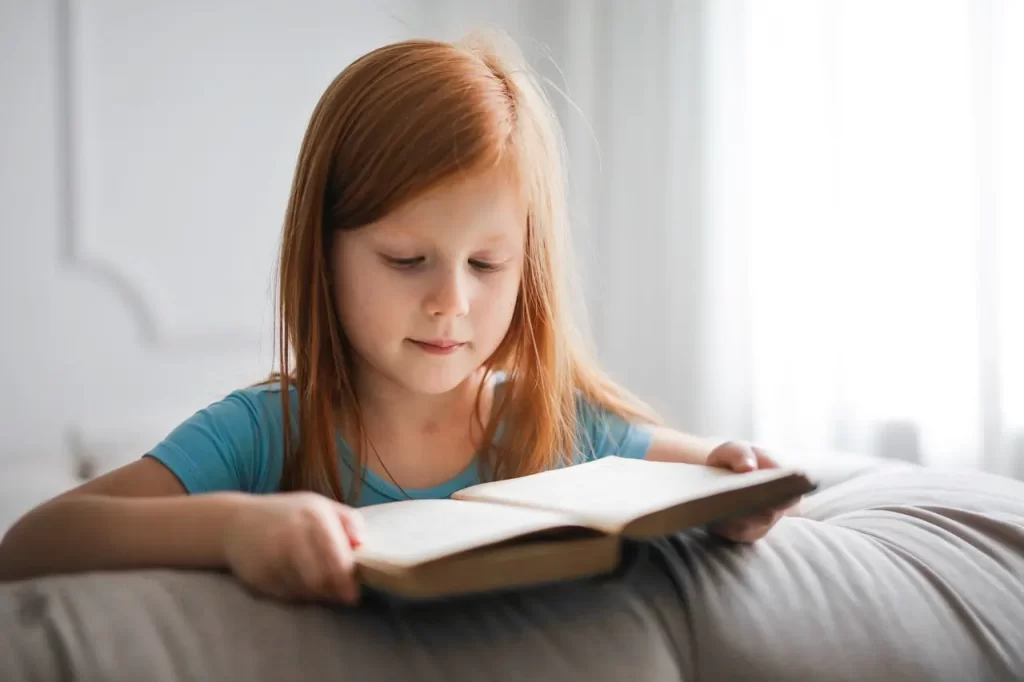
So, if kids encounter an issue, ask them how their favourite character would solve it. Encourage them to produce as many options as they can and discuss the results of each.
- Arts and Crafts
Another fantastic technique to educate youngsters about problem-solving abilities is via arts and crafts. Give your child a variety of things from around the house. Allow them to create fantastic creations or repair damaged devices or toys. Also checkout art hub for kids that can provide an immersive experience to your little ones!
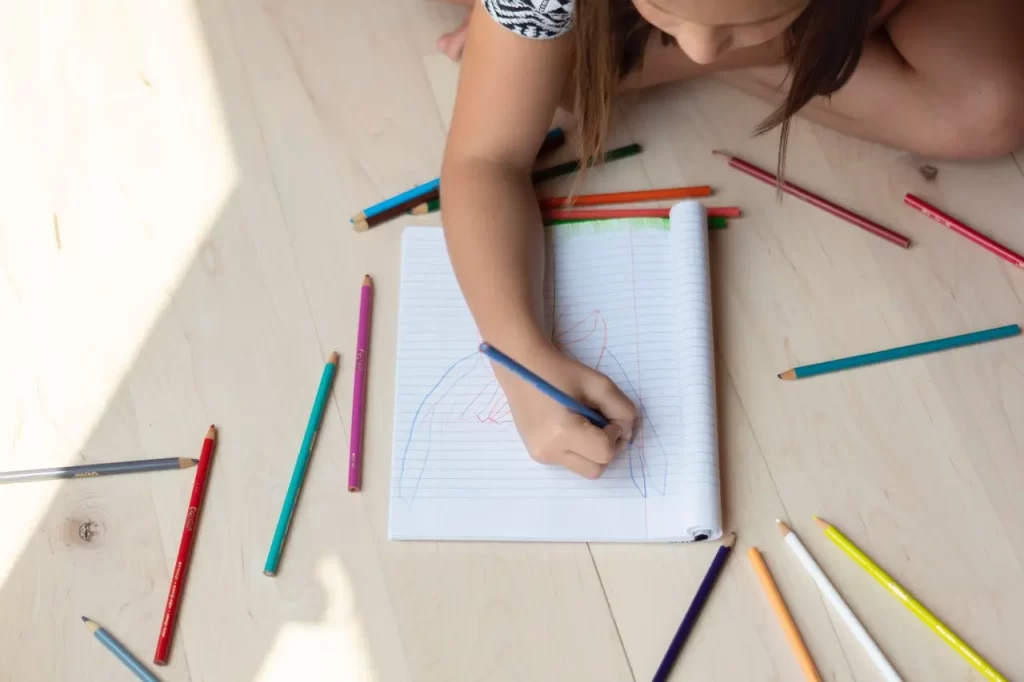
Give them complete freedom to do their task and only offer guidance when they are running out of ideas. And if your kids like to be more hands-on then check out crafts for kids !
- Free-Form Questions
Asking open-ended questions is an excellent method to help your child think creatively and critically and develop their problem-solving abilities.
As there are no right or wrong answers to these questions, and the answer extends beyond a simple “no” or “yes,” they must give some consideration to their responses.
The questions mentioned in the image above are some examples of open-ended questions.
- Maze
Mazes are enjoyable and safe for people of all ages. Working on mazes forces them to think. The practice also helps them strengthen their motor skills, observation skills, sense of direction, and problem-solving abilities.
Think beyond book mazes. There are other maze games available on the internet. They will get better at finding their way out with practice. You may eventually give them increasingly difficult mazes to solve.
- A Little Treasure Quest
The whole family can enjoy a treasure hunt. If they believe they will succeed, you can maintain their concentration on the task at hand.
Give them tips that encourage them to use their imaginations and resolve issues to win the prize.
- Toy Construction
Give your kids building materials like LEGO, wood blocks, engineering blocks, etc., and let them construct anything they want.
Toy construction requires your child to consider what to make, how to assemble the parts, and produce creative solutions to make sure the design is functional.

You can occasionally ask them to build something challenging, like a monster with three arms or two buildings joined by a bridge. Watch as they struggle to come up with a structure.
- Woollen Web
Each child should be given a piece of colorful yarn, and they should be told to construct a circle. The yarn ball is passed from one person to the next by wrapping their finger around it.
Once everyone got an opportunity to hold the ball and wrap the yarn around their finger, a web would begin to grow. Now, blindfold one person and instruct them to unwind the web by following the vocal directions of the others.
To figure out a way out, this group exercise requires collaboration, attention, patience, coordination, concentration, and problem-solving abilities.
- The Human Knot
It is a simple game, but very entertaining. A group of youngsters is required for this game. Form a circle with the youngsters and have them raise their hands.
Begin with one player, who must use their right hand to grasp a player’s hand from across the circle and their left hand to grasp someone else’s hand. Examine whether everyone has held both hands with various players.
They must now detangle themselves without breaking the circle. When everyone’s hands are free and they are back in the circle, the challenge is over.
- Improvised Skits
Form teams out of the players. On pieces of paper, write out several scenarios, such as coping with bullying at school or resolving a quarrel between siblings, folding them, and arranging them in a bowl.
Each team or participant chooses a chit and executes the scenario. You may give them a deadline to get ready. These impromptu activities help kids see a problem, come up with a solution, and implement it.
- Group Drawing
Another excellent team-building activity for developing children’s problem-solving skills is group sketching. Form groups of three youngsters.
Each of the team’s three members has a certain function to play. The teacher comes next. The instructor is the one who offers the drawer verbal directions on how to draw a certain design.
The spectator examines the design. However, they are not permitted to speak and must interact with the instructor by using gestures. When the viewer is happy with the drawer’s image, you have a winner. Allow the kids to take turns playing various parts.
- Give me a Hint!
Clue Me In is an entertaining detective game that promotes cognitive growth, critical thinking, and problem-solving skills.
Begin by choosing five to six target responses, such as a prominent figure, an animal, a historical event, a societal trend, or a career. Collect five to ten objects related to each goal answer. They might also be images from the Internet.
Sort them into various bags. Determine how many hints a child can select before making a guess. If there are two, let the youngster choose two clues from a bag and make their first guess. See who can respond the fastest.
- Survivor Case Studies
Here is another game where no items are required. In this game, you must construct pretend-play scenarios for youngsters to solve, and they must analyze and think creatively to do so.
For example, tell them, “You’re stranded on an island, and you know aid won’t arrive for two days” or “How will you build a shelter for yourself out of the materials around you?”
Kids are encouraged by this to think of many scenarios and come up with solutions to the problem. There are many programs for kids .
- Ethical Quandary
Children are frequently put in challenging circumstances. This simple game will help children deal with these situations without them even being aware of them.
Write down several difficulties on pieces of paper, such as “The cashier handed me $1 more in change; what should I do?” or “I watched my friend harassing someone at school.” Should I intervene or let them go? Fold it up and put it in a bowl.
Give each child the opportunity to select one piece of paper, read it aloud, and provide creative solutions to the problem at hand.
Are you interested to know more about kids coding languages ? Checkout here!
Problem-solving is a crucial skill to have. Guiding kids in this decision-making skill not only enhances their thinking and creative ability but also trains them to face problems in the future and figure out good decisions.
The above-mentioned activities for kids are some of those, that will help them develop decision-making skills.
To learn more about problem-solving activities for kids, check out the fun yet amazing articles on the BrightCHAMPS blog.
Frequently Asked Questions (FAQs)
Children are believed to have learned the basics of problem-solving by the age of three. However, it is not perfected since it is hampered by a short attention span and trouble grasping problems on its own. Children grow better at solving problems as they get older.
The three most prevalent problem-solving techniques are: ● Trial and error: trying several solutions to an issue until it is solved. ● Algorithm: The process of solving a problem by following a step-by-step formula. ● Following a problem-solving framework, such as breaking it down into steps, is a heuristic.
These games can help you improve your problem-solving, planning, multitasking, and pattern-identification skills. ● Crossword puzzles. ● Sudoku puzzles. ● Jigsaw puzzles. ● Chess. Board games. ● Computer games. ● List games.
Creative problem-solving is a technique that employs imagination and invention. This technique encourages the creative aspect of issue resolution and allows for the generation of fresh ideas in novel ways. It also makes the process more enjoyable and fosters teamwork. To get your hands on more educational and free resources on coding for kids , robotics for kids, financial education for kids , etc., do check out the BrightCHAMPS Page now!
Team BrightChamps

Email Address

Free Kids Coding Resources 📕
Receive a copy of our Top 10 FREE Resources for your Kids
Success🎉 Check your email for more info!
Get a talent discovery certificate after trial class.
100% Risk-Free. No Credit Card Required

Related Articles

Navigating Parenthood: Simple Tips for Dealing with Behavioral Challenges in Kids
by admin | Apr 9, 2024
Parenting is a journey filled with joys, but it also comes with its fair share of challenges. One of the most common challenges parents face is...

Easing the Burden of Anxiety: Practical Tips for Parenting Anxious Teens
by Team BrightChamps | Feb 15, 2024
The adolescent years are a time of profound growth and change, marked by the pursuit of identity, independence, and the navigation of social...

Ready, Set, School! Simple Advice for Parents on School Readiness
by Team BrightChamps | Feb 13, 2024
Preparing children for school is like laying the foundation for a sturdy building. Just as a solid foundation ensures a structure's stability,...
Trending Articles

Financial Literacy Activities for High School Students: Engaging and Practical Learning
by Team BrightChamps | Apr 10, 2024
As young adults step into the world of independence and responsibility, the importance of financial literacy cannot be overstated. Equipped with the...

Online Learning Platforms for Kids: A Comprehensive Guide
Over the past few years, online learning platforms for kids has seen a significant rise in popularity. This trend has been fueled by various...

10 Simple Activities to Teach Your Preschooler Problem Solving
By: Author Tanja McIlroy
Posted on Last updated: 15 May 2024
Categories Activities for Preschoolers & Kindergarteners
During the first years of a child’s life, an important set of cognitive skills known as problem-solving abilities are developed. These skills are used throughout childhood and into adulthood.
Find out what problem solving is, why it’s important and how you can develop these skills with 10 problem-solving games and activities.
What is Problem Solving in Early Childhood?
So, what exactly is problem solving? Quite simply, it refers to the process of finding a solution to a problem .
A person uses their own knowledge and experience, as well as the information at hand to try and reach a solution. Problem solving is therefore about the thought processes involved in finding a solution.
This could be as complex as an adult working out how to get out of a financial crisis or as simple as a child working out how two blocks fit together.
Problem Solving Skills for Kids
Problem-solving skills refer to the specific thinking skills a person uses when faced with a challenge. Some problems require the use of many skills, while others are simple and may only require one or two skills.
These are some examples of problem-solving skills for preschoolers , as listed by kent.ac.uk .
- Lateral thinking
- Analytical thinking
- Decision-making skills
- Logical reasoning
- Persistence
- Communication skills
- Negotiation skills
The Importance of Developing Problem-Solving Skills in Early Childhood
Problem solving is a skill that would be difficult to suddenly develop as an adult. While you can still improve a skill at any age, the majority of learning occurs during the early years.
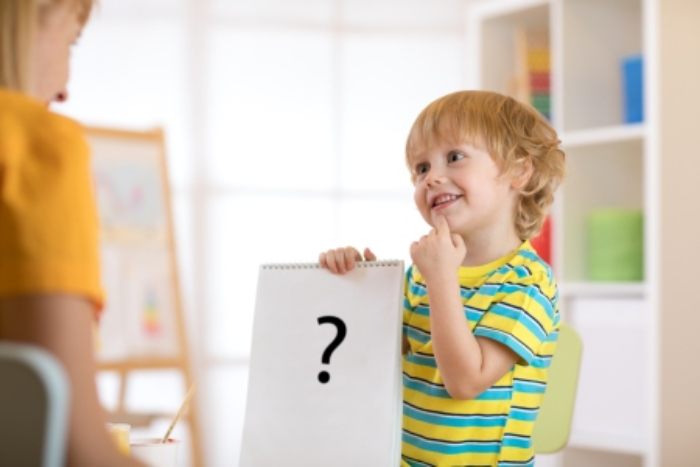
Preschool is the best time for a child to learn to problem solve in a fun way. The benefits of learning early will last a lifetime and the beauty of learning anything at a young age is that it is effortless .
It is like learning to play an instrument or picking up a new language – it’s just much easier and more natural at an early age.
Of all the many things preschoolers need to learn , what makes problem solving so important?
There aren’t many situations in life, at work or at school that don’t require some level of problem resolution.
Child’s play itself is filled with opportunity upon opportunity to solve all kinds of tricky situations and come up with solutions to challenges.
Problem Solving in Preschool
During the foundational years, children are constantly solving problems as they play .
Here are just a few examples of problem solving in early childhood :
- Resolving a fight over the same toy
- Reaching a ball that’s stuck in the tree
- Forming a circle while holding hands
- Making a bridge to connect two block towers
- Tying or untying a shoe
- Making up rules for a new game
- Trying to get the consistency of a mud cake right so it stops falling over
The more creative play opportunities and challenges children are given, the more they get to exercise their problem-solving muscles.
During free play , there are non-stop experiences for this, and parents and teachers can also encourage specific problem-solving skills through guided activities .
Problem Solving for Older Children
During the grades, children experience problems in many forms, some of which may be related to their academic, social and emotional well-being at school. Problems may come in the form of dealing with life issues, such as:
- Problems with friendships
- Struggling to understand something during a lesson
- Learning to balance the demands of sport and homework
- Finding the best way to study for a test
- Asking a teacher for help when needed
Problems will also form a large part of academic life as teachers will be actively developing this skill through various activities, for example:
- Solving a riddle or understanding a work of literature
- Working on projects with a friend
- Finding solutions during science experiments
- Solving mathematical problems
- Solving hypothetical problems during lessons
- Answering questions and completing exam papers
Children who have had practice during preschool will be a lot more capable when facing these challenges.
Solving Problems in Mathematics
Mathematics needs to be mentioned separately as although it is part of schooling, it is such a huge part and it depends heavily on a child’s ability to solve problems.
The entire subject of mathematics is based on solving problems. Whether you are adding 2 and 3, working out how many eggs will fit into each basket, or solving an algebraic expression, there is a problem in every question.
Mathematics is just a series of problems that need to be solved.
What we refer to as problem solving in Maths is usually answering word problems .
The reason many children find these so difficult to answer is that the question is presented as a problem through a story, rather than just numbers with symbols telling you what operation to use (addition, division, etc.)
This means a child is forced to think carefully, understand the problem and determine the best way to solve it.
These problems can involve various units (e.g. mass, capacity or currency) as well as fractions, decimals, equations and angles, to name a few. Problems tend to become more and more complex over the years.
My experience in the classroom has shown that many, many children struggle with solving word problems, from the early grades right into the senior years.
They struggle to analyze the question, understand it, determine what information they’ve been given, and what exactly they are required to solve.
The good news is that exposing a child to regular problem-solving activities and games in preschool can greatly help him to solve word problems later on in school.
If you need one good reason to do these kinds of activities, let it be for a smoother experience in mathematics – a subject so many children unnecessarily fear.
Problem Solving in the Workplace

Adults in the workplace seldom thrive without problem-solving skills. They are required to regularly solve problems .
As adults, employees are expected to independently deal with the frequent challenges, setbacks and problems that are a big part of every working environment.
Those who can face and solve their own problems will go further and cope better than those who seek constant help from others or cannot show initiative.
Some career websites even refer to problem solving as a universal job skill. They also mention that many employees are not good at it.
Again, although it may seem far removed, learning this skill at a young age will help a child cope right into adulthood and in the working world.
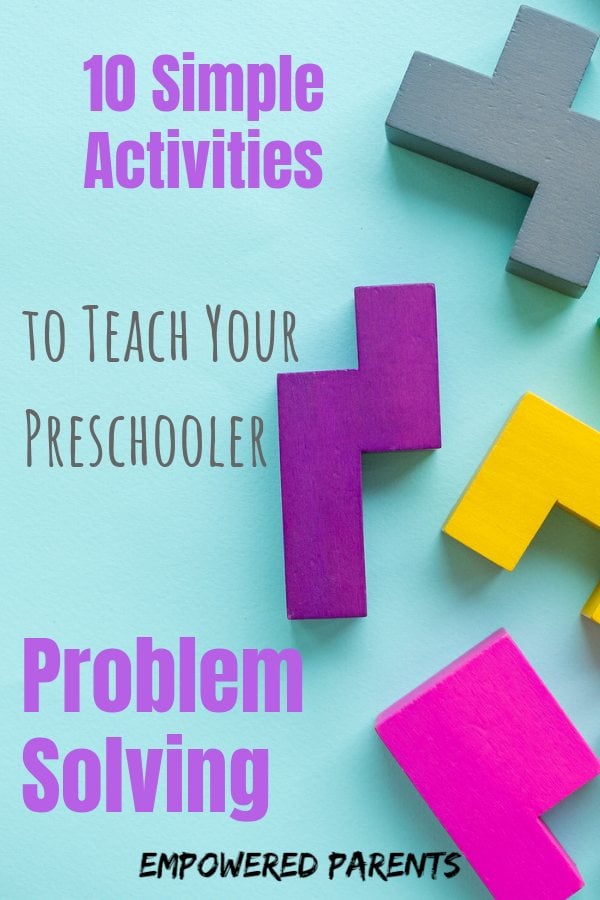
How to Teach Children Problem-Solving Skills
If early childhood is the best time to grow these skills in your young children, then how does one go about teaching them to toddlers, preschoolers and kindergarteners?
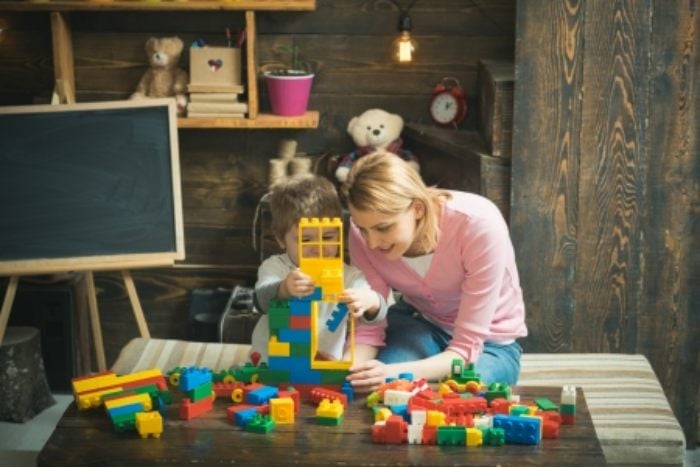
Problem solving can be taught in such a way that you expose your child to various opportunities where they will be faced with challenges.
You would not necessarily sit your 3-year-old down and tell or “teach” him all about fixing problems. Instead, you want to create opportunities for your child to grow this skill .
Using the brain to think and find solutions is a bit like working a muscle over time. Eventually, your muscle gets stronger and can handle more “ weight. ” Your child will learn to problem solve in two ways:
- Incidentally – through free play
- Through guided opportunities provided by a parent or teacher
If you make a point of encouraging thinking through games and activities, your child will develop stronger skills than if you let it all happen incidentally.
Problem-Solving Strategies and Steps
If we take a look at the steps involved in solving a problem, we can see that there are many layers involved and different types of skills. Here are the problem-solving steps according to the University of Ken.
Step 1: Identify the problem
Step 2: Define the problem
Step 3: Examine the options
Step 4: Act on a plan
Step 5: Look at the consequences
Therefore, activities at a preschool level need not present complicated high-level problems.
- A simple activity such as identifying differences in a picture can work on the first skill needed – identifying a problem.
- Playing with construction toys can develop a child’s ability to try various solutions and examine the options when faced with a problem such as trying to find the best way to build something.
- Playing Tic-Tac-Toe would make a child predict the consequences of placing their mark in a particular square.
The most basic of activities can work on all these skills and make children competent solution finders.
How to Teach Problem Solving with Questions
The language you use around your child and your questioning technique will also greatly affect their understanding of a problem or challenge as merely something waiting for a solution to be found .
While your child is playing or when she comes to you with a problem, ask open-ended questions that will guide her in finding a potential answer independently. Use the steps listed above to formulate your questions.
Here are some examples of questions:
- What do you think made the tower of blocks fall down?
- If we build it again, how can we change the structure so that it won’t fall down next time?
- Is there a better way we can do it? If you think of a different way, we can both try it and see which works better.
- Did that work? The tower fell again so let’s try another solution.
Resist the temptation to fix every one of your child’s problems, including conflict with friends or siblings. These are important opportunities for children to learn how to resolve things by negotiating, thinking and reasoning.
With time, your child will get used to seeing a problem, understanding it, weighing up the options, taking action and evaluating the consequences.
Problems will be seen as challenges to be faced logically and not “problems.”
10 Problem-Solving Activities for Preschoolers
Here are 10 simple, easy games and problem solving activities for kids at home or at school. Many of them are the kinds of activities children should have daily exposure to.
Puzzles are one of the best thinking activities out there. Each puzzle is basically one big set of muddled-up things to be sorted out and put back together again. Find out why puzzles are important for development .
Children should have regular exposure to puzzles. They are great for developing thinking skills.
The best types to choose are sturdy, wooden puzzles with a board. They last longer and the frame provides a structure to guide children when building.
2. Memory games
Memory games will develop your child’s memory and attention to detail.
Use pairs of matching pictures and turn them all face down, shuffled, on a table. Take turns choosing any two cards and turning them face up on the table. If you turn over a matching pair you keep the cards and if the pair doesn’t match, turn the cards back over until it is your turn to try again.
Encourage your child to concentrate and pay attention to where the pictures are and try to find a matching pair on each turn.
(Get your own set of printable memory card games here!)
3. Building with Construction Toys
Construction toys such as engineering blocks, a proper set of wooden blocks or Legos (shown below) should be a daily staple in your home.
Everything your child builds is a challenge because it requires thinking about what to build and how to put the pieces together to get a design that works and is functional.
Leave your child to construct freely and occasionally set a challenge and ask him to build a specific structure, with conditions. For example:
- Make two towers with a bridge joining them together
- Build a creature that stands on its own and has 3 arms.
Then watch your child wracking his brain until he finds a way to make his structure work.
4. Activity Books
These activity books are really fun and develop a child’s ability to identify problems and search for information.
5. Following Patterns
This simple activity can be played with a set of coloured blocks, shapes or counters.
Simply make a pattern with the blocks and ask your child to continue it. Vary the pattern by changing the colours, shapes or sizes.
This activity will train your child to analyse the given information, make sense of it, recognise the pattern and re-create it.
6. Story Time Questions
Get into the habit of asking questions during your daily story time that develop higher-order thinking skills . Instead of just reading and your child passively listening, ask questions throughout, concentrating on solving problems.
Here are some examples:
- Why do you think the bear did that?
- Do you think his friend will be happy? Why?
- What would you do if you were the monkey?
- How do you think Peter can make things better with his friend?
- If the crocodile had decided not to eat the rabbit, how could the story have ended?
7. Board Games
Board games are an excellent way to develop problem-solving skills.
Start off with simple games like Ludo and Snakes and Ladders to teach the skill of following rules and moving in a logical sequence.
Card games like Go Fish are also great for teaching young children to think ahead and solve problems.
8. Tic-Tac-Toe
This is a perfect game to teach decision-making skills , thinking before acting and weighing up the possible consequences.

Use a Tic Tac Toe Board or d raw a simple table like the one above on paper or a chalkboard.
Take turns to add a nought or a cross to the table and see who can make a row of three first.
Your child will probably catch on in no time and start thinking carefully before placing their symbol. This game can also be played with coloured counters or different objects.
9. Classifying and Grouping Activities
This activity can be done with a tin of buttons or beads or even by unpacking the dishwasher. The idea is to teach the skill of classifying and categorizing information by learning with physical objects. Here are some other ideas for categorizing:
- Separate the washing – mom’s clothes, dad’s clothes, etc; or socks, tops, shorts, etc.
- Empty out the cutlery drawer for cleaning, mix all the utensils up and then sort into knives, tablespoons, teaspoons, etc.
- Classify and sort out the toys in your child’s bedroom together – all books, construction toys, soft toys, etc.
- Play category games .
Here are more button activities for kids .
10. Building a Maze
This activity is lots of fun and suitable for any age. It is also going to be way more fun than doing a maze in an activity book, especially for younger children.
Draw a big maze on the paving with sidewalk chalk . Make passages, including one or two that end in a dead-end. Teach your kids to find their way out .
As your child gets better at figuring out a route and finding the way out, make the maze more complex and add more dead-end passages.
Are you a preschool teacher or working in Early Childhood Education? Would you like to receive regular emails with useful tips and play-based activity ideas to try with your children? Sign up for the newsletter!
This site uses Akismet to reduce spam. Learn how your comment data is processed .
Friday 3rd of June 2022
hi maam , This Is Uma from India,Can i get this in pdf format or a book. Thank You
Tanja Mcilroy
Monday 6th of June 2022
Hi Uma, thanks for your message. These articles are not available in PDF, but you are welcome to copy and paste them from the website, as long as you add the reference: https://empoweredparents.co/problem-solving-activities-preschoolers/ Thanks for reading!
Wednesday 20th of May 2020
Very very useful content. Good work. Thank you.
Friday 22nd of May 2020
Thanks Ann.
Tuesday 19th of May 2020
Would like to download the free activity pack please.
Hi Kelly, Please download the activity pack on this page: www.empoweredparents.co

Problem Solving for Kids: How-To Guide, Activities & Strategies
Children need to be able to solve their own problems. In daily life, kids face a lot of set of social circumstances and challenges. Whether they’re trying to figure out how to make friends, deal with bullies, or solve academic problems, they need strong problem-solving skills to be successful.
Problem-solving is a critical life skill that all kids need to learn. By teaching them how to identify and solve problems on their own, you’ll be setting them up for success in school and in life.
What are Social Problem-Solving Skills?
Social problem-solving skills are a skill set that involves behavioral and cognitive processes which allow an individual to find adaptive and positive ways of handling problematic situations that can arise in the social environment in our daily life. These skills comprise an understanding of emotions, empathy, self-awareness, prosocial behavior, anger management, perspective-taking, establishing positive relationships, and so on.
Why It’s Important for Children to Learn the Skills to Problem-Solve
Social problem-solving skills are important for kids to learn because they allow them to cope with the various challenges they face in their social environments, such as peer pressure, bullying, and exclusion from social groups. In addition, these skills can help them resolve conflicts effectively and build positive relationships with others.
How to teach Problem-Solving skills
There are many ways to develop social problem-solving skills in kids . One way is to provide them with opportunities to practice these skills through different activities and games.
There are a few key things that parents and educators can do to help kids develop strong problem-solving skills:
Teach Children to Identify the Problem
One of the most important steps in solving any problem is being able to accurately identify what the problem is. This can be tricky for kids, especially if they’re feeling emotional about the situation. Help them by teaching them how to take a step back and look at the problem objectively.
Help Kids Brainstorm Solutions
Once kids can identify the problem, it’s time to start brainstorming possible solutions. This is where creativity and out-of-the-box thinking come in handy. Encourage kids to think of as many possible solutions as they can, no matter how far-fetched they might seem.
Help Kids Weigh the Pros and Cons
After Children can come up with a few potential solutions, it’s time to help them figure out which one is the best option. This is where critical thinking comes in. Teach kids how to weigh the pros and cons of each solution and make a decision based on logic, not emotions.
Help Kids Implement the Solution
The final step is helping kids actually implement the solution they’ve chosen. This might involve role-playing different scenarios, practicing what they would say or do, or writing out a plan. Whatever the case, be sure to provide support and guidance every step of the way.
Praise Kids
It’s essential to praise your child when they demonstrate social problem-solving skills. This will help him feel confident in his abilities and encourage him to continue using these skills.
Also, proper guidance and opportunities to practice problem-solving skills should be provided for kids to be efficient enough to solve problems on their own. In addition to providing opportunities for practice, it is also important to model problem-solving skills for your child.
By following these tips, you can help your child develop strong social problem-solving skills that will serve him well throughout his life.
Problem-solving in Child Development
Most children go through similar phases of problem-solving as they develop. However, the timing may vary depending on the child’s individual temperament and circumstances.
Here are some common milestones:
- Ages 2-3: During the age of 2-3 years, kids begin to understand that problems can be solved. They also start to develop a sense of self-control and can begin to use words to express their emotions.
- Ages 3-4: By 3-4 years old, kids are usually better at problem-solving and can use more logical thinking. They’re also beginning to understand other people’s feelings and perspectives.
- Ages 4-5: Around 4-5 years old, kids can usually think of multiple solutions to a problem. They’re also starting to understand the concept of cause and effect.
- Ages 5-6: By 5-6 years old, most kids can apply problem-solving skills in their everyday lives. They’re also able to understand complex emotions and empathize with others.
- Ages 6-7: Around 6-7 years old, kids are usually able to understand even more complex emotions. They’re also starting to see the world from other people’s perspectives and can use this knowledge to solve problems.
- Ages 7-8: By 7-8 years old, kids are often able to solve problems quickly and efficiently. They’re also able to think abstractly and see the world from multiple perspectives.
- Ages 8-9: Around 8-9 years old, kids are usually able to solve problems independently. They’re also beginning to understand the concept of time and how it can be used to solve problems.
- Ages 9-10: By 9-10 years old, kids are often able to solve complex problems. They’re also able to think abstractly and see the world from multiple perspectives.
- Ages 10-11: Around 10-11 years old, kids are usually able to solve problems independently. They’re also beginning to understand the concept of time and how it can be used to solve problems.
- Ages 11-12: By 11-12 years old, kids are often able to solve complex problems. They’re also able to think abstractly and see the world from multiple perspectives.
- Ages 12-13: Around 12-13 years old, kids are usually able to solve problems independently. They’re also beginning to understand the concept of time and how it can be used to solve problems.
As children get older, they should be able to solve more complex problems. If you’re concerned about your child’s problem-solving abilities, talk to their doctor or a child development specialist.
Social Problem-Solving Strategies
There are several strategies that can help children of primary age to solve problems. Some of them are as follows:
- Encouraging children to take turns and share. This strategy helps children to be more patient and to understand that other people have feelings too. It also allows them to share their own feelings and thoughts more openly.
- Helping children to understand and express their emotions. This strategy helps children to identify and understand their own emotions , as well as the emotions of others. It also allows them to express their emotions in a more positive way.
- Teaching children how to compromise. This strategy helps children to understand that sometimes it is necessary to give up something in order to get something else. It also teaches them how to negotiate and how to reach an agreement with others.
- Encouraging children to think about other people’s perspectives. This strategy helps children to understand that other people have different points of view. It also allows them to see the world from another person’s perspective and to empathize with others.
- Helping children to understand and follow rules. This strategy helps children to understand that there are certain rules that must be followed in order to maintain order and peace. It also teaches them how to respect the rules of others.
- Teaching children how to improve their skills to problem-solve. This strategy helps children to understand that there are many ways to solve a problem. It also teaches them how to think creatively and to come up with their own solutions.
These are just a few of the social problem-solving strategies that can help children of primary age to solve problems. For more information, please talk to your child’s doctor or a child development specialist.
Social Problem-Solving Skills Activities
Games and activities for socialization are an excellent way for children for learning how to behave in social surroundings such as school or in the community.
It is essential for children to learn how to take turns, share, cooperate and resolve conflicts.
Here are some activities to improve social problem-solving skills for children of different age groups:
Social Problem-solving Activities for Preschoolers
Preschoolers are very young and need a lot of help to learn social problem-solving skills. The following activities are fun and will help them develop problem-solving skills.
- Circle Time: This is a great activity for kids to learn how to take turns and share. Give each child a turn to be in the center of the circle and share something about themselves such as their favorite color, food , animal, etc.
- Simon Says: This classic game is a great way for kids to listen and follow instructions. It also helps with problem-solving skills as they have to figure out what Simon is saying.
- Role-Playing: This is a great activity for kids to learn how to resolve conflicts. Have kids act out different scenarios such as sharing toys or taking turns. After each scene, discuss what happened and how the conflict could have been resolved.
Social Problem-solving Activities for Kindergarteners
Kindergarteners are still very young. So, they may need assistance when it comes to social problem-solving skills.
The following activities will give them a chance to practice these skills in a safe and fun environment.
- Cooperative Building: Have the kids work together in small groups to build towers or houses out of blocks or Legos. This activity will help them learn to share, take turns, and cooperate with others.
- Role-Playing: Act out different social situations with puppets or toys. For example, one child can be the customer in a store and the other children can take turns being the salesperson. This activity will help kids learn how to handle different social situations.
- Feelings Matching: Cut out pictures of people with different facial expressions from magazines or newspapers. Ask the kids to match the pictures with the corresponding feeling words (e.g., happy, sad, mad, etc.). This activity will help kids learn to identify and understand different emotions.
Social Problem-solving Activities for School-Aged Kids
As kids get older, they become more independent and are able to handle more complex social situations.
The following activities will help them practice their social problem-solving skills.
- Brainstorming: This activity can be done individually or in a group. Give your child a scenario and have them come up with as many solutions as possible. For example, “Your best friend just cancelled your play date. What are three things you could do?”
- Exercising empathy: It’s important for kids to be able to empathize with others and see things from their perspective. When they’re struggling to solve a problem, help them think about how the other person is feeling. For example, “Your friend might be feeling upset too. Maybe you can talk to her about why she cancelled the play date.
- Problem Solving Games: Games are a fun way to teach children the skills of solving problems. Try playing some classic board games like Chutes and Ladders or Candyland, which require players to make decisions and strategize. There are also many great online games, like Mission to Mars and Robot City, that help kids practice problem-solving.
- Discussing Problem-Solving Skills: As a family, discuss different problem-solving strategies. For example, “If you’re ever feeling overwhelmed or don’t know what to do, take a deep breath and think about what would be the best thing to do in that situation.”
- Model Good Problem-Solving Skills: As a parent, you are your child’s biggest role model. So, it’s important to model good problem-solving skills yourself. Whenever you’re faced with a problem, talk aloud about how you’re going to solve it. For example, “I’m having trouble finding my keys. I think I’ll check the couch first and then look in the car.”
- Encourage positive thinking: Help your child look on the bright side by encouraging them to think of the positive outcomes of a situation. For example, “Even though your play date was cancelled, you now have some free time to do something else you enjoy.
- Practice: It’s important to give kids opportunities to use their problem-solving skills in everyday life. When they’re faced with a social challenge, take a step back and let them try to figure it out on their own. Of course, be there to support them if they need help.
Social Problem-solving Activities for High-School Students
High-school students often face a variety of social problems. They may have difficulty making friends, fitting in with classmates, or dealing with bullies.
Some students may also struggle with more serious issues, such as gangs, drugs, or violence.
There are a number of activities that can be used to help high-school students with improving their social problem-solving skills. These are as follows:
- Peer Mediation: This activity involves two or more students who are in conflict with each other. The mediator(s) helps the students to communicate with each other and find a resolution to the problem.
- Role-Playing: This is a great activity for helping high-school students to understand different perspectives. Students can take on the role of the person they are in conflict with, and then discuss how they would feel in that situation.
- Problem-Solving Groups: These groups usually consist of 4-6 students who meet to discuss a particular problem. The group leader(s) helps the students to brainstorm solutions and come up with a plan of action.
- Attending Debates: Debates can be a great way for high-school students to learn about different perspectives on social issues. Students can also practice their own argumentative and problem-solving skills by participating in debates.
- Service Learning: This is a type of community service that helps high-school students to understand and address social problems. Students typically work with organizations that focus on issues such as poverty, homelessness, or hunger.
Cultivating Resilience in Children
Developing resilience in children is a key aspect of nurturing their emotional health and equipping them to face life’s challenges head-on. It involves helping them understand that difficulties and setbacks are a normal part of life, and they can grow stronger from overcoming them.
By fostering a secure and loving environment, and by being role models of resilience ourselves, we can instill in children the ability to adapt to change and cope with stress.
One effective method to cultivate resilience in children is by encouraging them to express their feelings and thoughts openly.
Providing a safe space where they feel heard and understood helps them to understand their emotions better, which is a crucial step in resilience building. It’s important to validate their feelings, not minimize them, as it teaches them that it’s normal to experience different emotions, and it’s okay to discuss them.
Another significant way to build resilience is by teaching problem-solving skills. Guiding children through the process of identifying a problem, brainstorming possible solutions, choosing the best one, and reflecting on the outcome can equip them with valuable life skills.
As they practice, they will become more adept at facing challenges, whether big or small, and this boosts their confidence and self-efficacy. The beauty of resilience is that it isn’t an inherent trait; it’s a skill that can be learned and cultivated, one challenge at a time.
Teaching social problem-solving skills can help high-school students learn how to handle these types of situations. These skills can also help them in other areas of their lives, such as dealing with family conflict or managing their emotions.
Through these activities, high-school students can learn important problem-solving skills that will help them in their everyday lives.
There are many different activities that you can do to help your child develop problem-solving skills. Choose activities that are appropriate for your child’s age and interests.
And, most importantly, have fun!
Tips, D. (2022). Developing Problem-Solving Skills for Kids | Strategies & Tips | Kodable Blog. Retrieved 6 June 2022, from https://www.kodable.com/learn/problem-solving-skills-for-kids/
How to Teach Problem-Solving Skills to Children and Preteens. (2022). Retrieved 6 June 2022, from https://biglifejournal.com/blogs/blog/how-teach-problem-solving-strategies-kids-guide#:~:text=Allow%20your%20child%20to%20choose,the%20process%20of%20problem%2Dsolving .
Teaching Kids How to Solve Their Own Problems and Make Good Decisions. (2022). Retrieved 6 June 2022, from https://www.verywellfamily.com/teach-kids-problem-solving-skills-1095015
(2022). Retrieved 6 June 2022, from https://www.werockthespectrumkidsgym.com/social-skills-activities-that-teach-kids-problem-solving/
srivastava, m., & srivastava, m. (2022). 12 Problem-Solving Activities For Toddlers And Preschoolers. Retrieved 6 June 2022, from https://www.momjunction.com/articles/problem-solving-activities-for-toddlers_00795607/
20 Evidence-Based Social Skills Activities and Games for Kids. (2022). Retrieved 6 June 2022, from https://www.positiveaction.net/blog/social-skills-activities-and-games-for-kids
The ReadyKids App is an innovative platform that makes Occupational Therapy affordable, accessible, and fun.
With daily resource recommendations, this intuitive app combines efficacy and fun in children's therapy.
- Developed By Registered Occupational Therapists
- New Resources Released Weekly
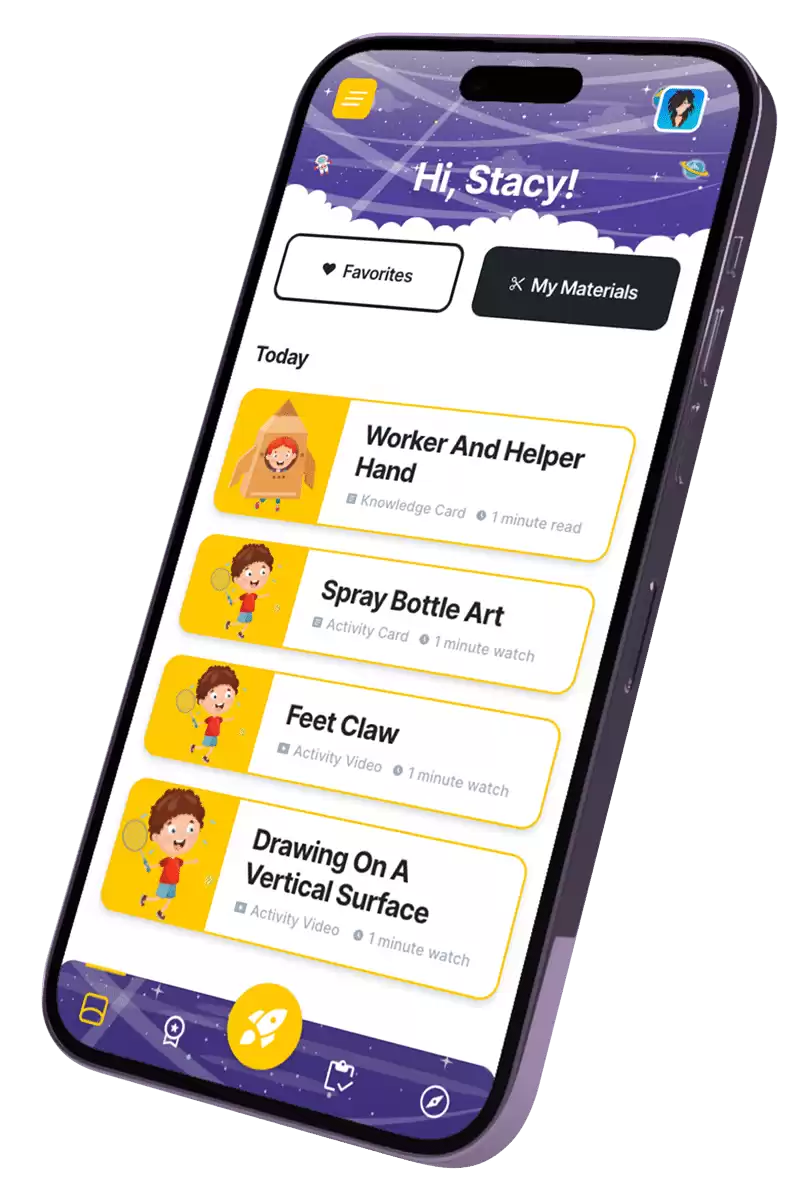
Share This Post
More To Explore

What Are Social Stories? (Benefits for Children with Autism)

Fun & Educational Tongue Twisters for Kids – Improve Speech Skills

Educational Guide: How to Get Slime Out of Clothes – Occupational Therapy Tips

11 Best Visual Timers for Kids With Autism
Sign up to our.
2 Week Parent Support Program
Calling all overwhelmed parents of children with additional needs! Our two-week Parent Support Program is here to provide you with the tools and support you need. Don’t wait, give your child the exceptional care they deserve. Enrol in our program now!
- 1:1 session with a Registered OT (Valued @ $110)
- Interactive Q & A Session (Valued @ $193)
- Access to VIP Community (Can't be valued)
- Customised 2-week plan (Valued @ $110)
Total Value of $413
Today's Price: FREE
Still Need Help?
The readykids app helps kids develop skills at home.
- Prodigy Math
- Prodigy English
- Is a Premium Membership Worth It?
- Promote a Growth Mindset
- Help Your Child Who's Struggling with Math
- Parent's Guide to Prodigy
- Assessments
- Math Curriculum Coverage
- English Curriculum Coverage
- Game Portal
45 Fun and Clever Brain Teasers for Kids with Answers!

Written by Laney Kennedy
Reviewed by Sarah Tino, M.Ed.
Engage and motivate your students with our adaptive, game-based learning platform!
- Game-Based Learning
- What brain teasers are
- The benefits of brain teasers for kids
Math brain teasers for kids
Sometimes keeping your students engaged during a (long) school day feels like a losing battle. How do you gain their full attention while teaching the skills they need to succeed? How do you turn tough and intimidating concepts into fun, entertaining lessons that actually spark life in the classroom?
Brain teasers for kids are a great form of game-based learning that not only entertain children but also inspire some creative thought in the classroom. People of all ages can indulge in these playful — yet challenging — activities.
And some examples of when teachers might want to use brain teasers are on a bulletin board in the classroom, as a partnered activity to start a new concept or lesson, or during a rainy day indoor recess box.
We’ve gathered 45 examples of brain teasers for kids with answers, organized by category:
Table of Contents
Language brain teasers for kids :
Riddles ; Language associations ; Lateral thinking problems.
Math brain teasers for kids :
Math riddles ; Pattern problems ; Prodigy.
Visual brain teasers for kids :
Spot the difference ; Rebus puzzles ; Optical illusions ; Stroop effect test.
Use the list below to find the perfect brain teaser for your class!
What are brain teasers?
Before you explore our examples, you might be wondering what brain teasers actually are.
Cambridge Dictionary defines a brain teaser as “a problem for which it is hard to find the answer, especially one which people enjoy trying to solve as a game.”
Brain teasers are a type of puzzle — and as the list below reveals, they come in many different forms. Often presented as a riddle, question or activity, brain teasers require a little extra brainpower to solve.
It's important to note that if you have any English language learners in your class, brain teasers for kids might pose a challenge for them. If that's the case, they might need you to walk them through the brain teaser more closely, or you can find ones that better suit their language level.
Brain teasers for kids differ from other complex or abstract problems because they’re usually done for fun. Although you can use them to analyze problem-solving and critical thinking skills, they’re often used as an amusing activity to encourage logical and lateral thinking , or thinking “outside the box.”
45 Brain teasers for kids
We’ve compiled a list of language, math and visual brain teasers to get your students thinking. Get inspired by the examples below — including answers!
Language brain teasers for kids
When you hear the term “brain teaser,” a riddle is likely the first thing that comes to mind. Riddles are perplexing — sometimes misleading — questions or statements that require creative thought to solve.
Riddles are usually fun, and plenty of them can add some humour to your classroom.
Enjoy our list of riddles for kids below!
a) Billy’s mother had five children. The first was named Lala, the second was named Lele, the third was named Lili, the fourth was named Lolo. What was the fifth child named?
b) Choose the correct sentence: “The yolk of the egg is white” or “the yolk of the egg is white.”
c) It’s as light as a feather, but the strongest person can’t hold it for more than five minutes. What is it?
d) The more there is, the less you see. What is it?
e) What gets more wet while it dries?
f) You can find it in Mercury, Earth, Mars, Jupiter and Saturn, but not in Venus or Neptune. What is it?
g) It likes food, but water kills it. What is it?
h) What’s full of holes but can still hold water?
i) Which is heavier, a pound of feathers or a pound of rocks?
j) How far can a dog run into the woods?
k) You’re driving a city bus. At the first stop, three women get on. At the second stop, one woman gets off and a man gets on. At the third stop, two children get on. The bus is blue and it’s raining outside in December. What colour is the bus driver’s hair?
l) There are three houses. One is red, one is blue and one is white. If the red house is to the left of the house in the middle, and the blue house is to the right of the house in the middle, where’s the white house?
m) It’s at the center of gravity and you can find it in Venus, but not Mars. What is it?
n) What goes on four feet in the morning, two in the afternoon and three in the evening? (This is from the classic myth, Oedipus and the Riddle of the Sphinx )
o) What travels faster: heat or cold?
p) A man was walking in the rain in the middle of nowhere without a coat or an umbrella. He got soaked, but not a single hair on his head was wet. How can this be?
q) A cowboy rode into town on Friday. He stayed in town for three days and rode back out on Friday. How is this possible?
b) Neither. Egg yolks are yellow, not white!
f) The letter “R”
h) A sponge
i) Neither. Both weigh a pound!
j) Halfway. Once it reaches halfway, it’s running out of the woods.
k) Whatever colour your hair is. Remember, you’re driving the bus!
l) In Washington, D.C.
m) The letter “V”
n) A human. The times of day represent stages of human life. At the beginning of life, a baby crawls on four “feet.” As a person gets older, they walk on two feet. Later in life, a person will walk on three “feet” (two feet, plus a cane to help them walk).
o) Heat travels faster because you can catch a cold!
p) He was bald.
q) The horse’s name was Friday.
As a bonus, use these riddles to challenge preconceived notions and get students thinking about natural bias .
a) Two boxers are in a match scheduled for 12 rounds. (Pure boxing only - no kicking, UFC takedowns, or anything else). One of the boxers gets knocked out after only six rounds, yet no man throws a punch. How is this possible?
b) A father and son have a car accident and both are very injured. They are taken to separate hospitals for treatment. When the boy is taken in for an operation, the surgeon says, “I can’t do this surgery…. this boy is my son!” How is this possible?
a) The two boxers are women.
b) The surgeon is the boy’s mother.
2. Language associations
These brain teasers for kids explore the complexities of the English language. Use them to boost student knowledge of sounds, words, spelling, categorization and more.a) Word association : find a word that associates with the following sets of words.
- Cake, swiss, cottage
- Glasses, screen, day
- Cream, cube, cap
- Knife, fly, cup
b) Find the mystery word . Replace the third letter of each word with a new letter to create a different word. When read vertically, the new letters will reveal the mystery word.
For example, the word MA K E could become MA R E, MA L E, MA T E and so on. It’s your job to figure out which one works to create the mystery word.
Hint: It’s something you’ll find outside.
c) Find rhyming pairs . Unscramble the words below so that each pair of words rhymes.
- RBAE & HREAS
- WNROED & UTRHNDE
- TUGHAT & HBTUGO
- ODULC & ODOG
Mystery word: FLOWER
- BEAR (or BARE) & SHARE
- WONDER & THUNDER
- TAUGHT & BOUGHT
- COULD & GOOD
You can also use printable brain teasers for kids like this one:
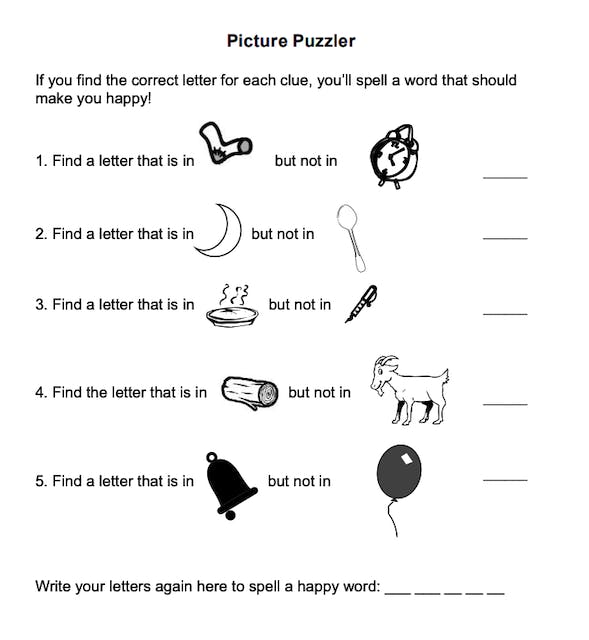
Image source: Spelling Words Well
Answer: The “happy word” is SMILE.
3. Lateral thinking problems
Lateral thinking problems require creative thinking with an indirect approach.
These questions require logic and careful thought to solve. The most notable example of a lateral thinking problem is the classic Monty Hall problem .
Here are two examples of lateral thinking problems kids can try to solve.
a) The river crossing problem

Image source: Popular Mechanics
A farmer is travelling with a fox, a goose, and a bag of beans. During his journey, he comes across a river with a boat to cross it.
The farmer can only fit one thing in the boat with him at a time. If left alone together, the fox will eat the goose or the goose will eat the beans. How does the farmer get everything across the river safely?
b) The light bulb problem

There are three light switches outside of a room-- labeled number one, number two, and number three. The door to the room is closed and you can’t see in. All three switches are off.
You need to figure out which switch belongs to which bulb. You can use the switches however you want to, but can only enter the room once. How do you do it?
a) Here’s the step-by-step solution:
- The farmer brings the goose across the river first (if he leaves the goose alone, it will either eat the beans or be eaten by the fox).
- The farmer brings either the fox or the beans across and leaves the other one alone.
- Now the farmer has two items on the other side of the river, including the goose. If he leaves the goose again, the same problem will occur. So, the farmer must bring the goose back to the other side.
- The farmer brings the other item back (either the fox or the beans) and leaves the goose alone again. The fox and the beans are now on the other side of the river.
- The farmer returns and brings the goose across the river again.
b) Turn on the first switch and leave it on. Turn on the second switch for a few minutes, and then turn it off again. When you enter the room, one light bulb will be on. You’ll know it goes with switch one because you turned it on. Another bulb will be hot. You’ll know that goes with switch two because it was on for a little while. The bulb that’s off and cold goes with switch three because you didn’t touch it.
Like math puzzles , these brain teasers for kids can increase engagement with math content and inspire your students to work on math concepts and problems outside of regular lessons.
1. Math riddles
These riddles are just as amusing as the ones above, but they’re math-focused . Use them to give students some extra math practice and encourage resourceful thinking.
Math riddles
a) Divide 30 by ½ and add 10. What’s the answer?
b) A clerk at the butcher shop is six feet tall and wears size 10 shoes. What does he weigh?
c) A farmer has 19 sheep on his land. One day, a big storm hits and all but seven run away. How many sheep does the farmer have left?
d) Your sock drawer only contains 18 white socks and 18 blue socks. How many times do you need to reach inside the drawer and take out a sock to guarantee a matching pair?
e) You planted sunflower seeds in your back garden. Every day, the number of flowers doubles. If it takes 52 days for the flowers to fill the garden, how many days would it take for them to fill half the garden?
f) Using only addition, how can you use eight eights to get the number 1,000?
g) When Ashley was 15, her mother was 37. Now, her mother is twice her age. How old is Ashley?
a) It's 70. You’re dividing 30 by ½, not by two. Thirty divided by ½ is the same thing as multiplying it by two, which is 60. Plus 10 makes 70!
b) Meat. He works at the butcher shop, so he weighs meat for a living.
c) Seven. The riddle says all but seven run away, meaning there are seven left who didn’t.
d) Three times. On the third time, you’ll get either a white or a blue sock to match with one of the other two you’ve already grabbed.
e) It would take 51 days. If the number of flowers doubles every day, half the garden would be full the day before, on the 51st day.
f) 888 +88 +8 +8 +8
g) Ashley is 22. Her mother is 22 years older, so when Ashley is 22, she’s now half her mother’s age.
2. Pattern problems
These questions require students to identify a pattern before they can answer a particular question. Kids must use creative and logical thinking to find the answers.
4 + 4 = 168
5 + 5 = 2510.
b) What makes this number unique: 8,549,176,320?
c) Solve the pattern puzzle below. Find the missing number to replace the question mark.
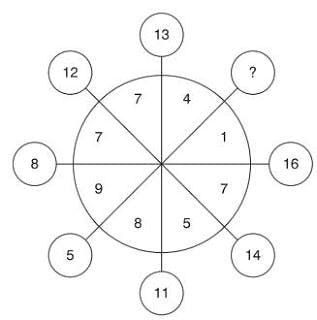
Image source: Genius Puzzles
d) Solve the following:
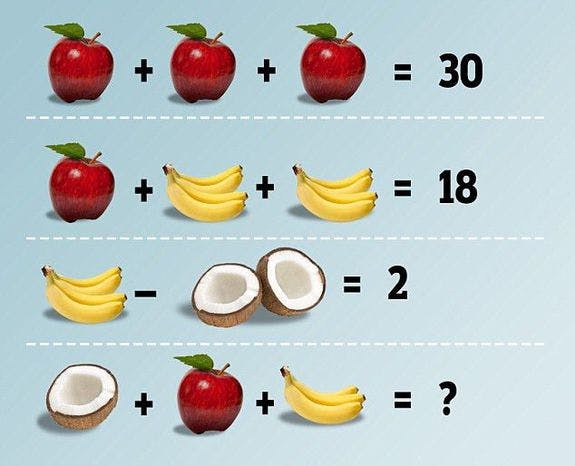
Image source: AOL
a) The missing number is 3612. The answer is the number multiplied by itself and then the number added to itself. Six multiplied by six is 36, and six plus six is 12.
b) It contains each one-digit number, zero through nine, listed in alphabetical order.
c) The missing number is 17. Each number in the circle is the sum of the numbers in the opposite quadrant. In this case, the numbers are eight and nine — added together makes 17.
d) The answer is 14 (or 16), if you’re on the other side of the debate .
3. Prodigy Math Game
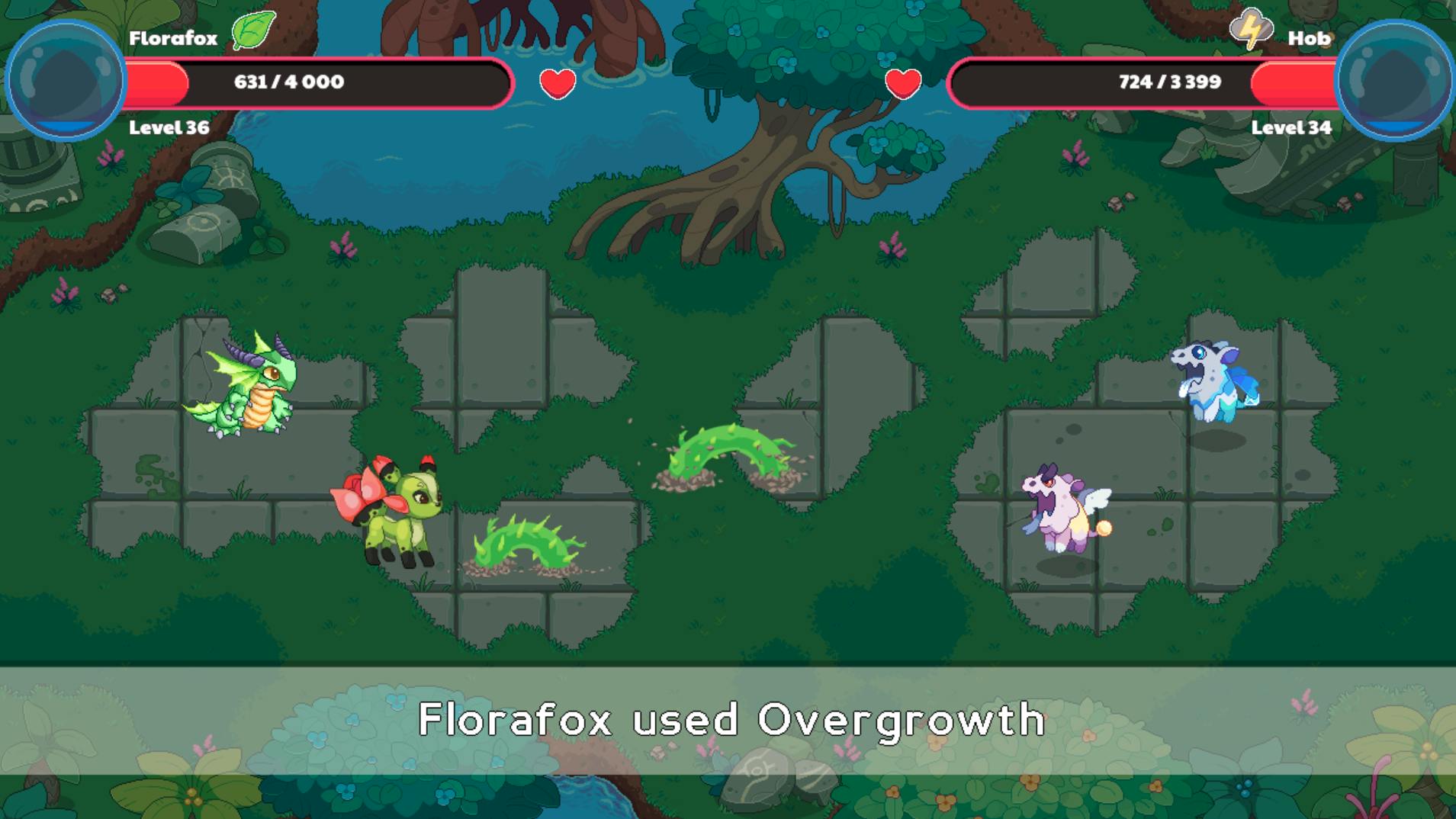
This math activity is a bit different from others on the list. It’s not a traditional brain teaser, but it can also be used as a fun, skill-building alternative to traditional math class.
Prodigy is a game-based learning platform that takes your students on an online fantasy adventure while they answer standards-aligned math questions. It’s engaging and effective at teaching necessary skills.
Prodigy's free teacher tools help you differentiate learning, send assessments in-game and even collect student insights!
Visual brain teasers for kids
1. spot the difference.
This ever-popular activity might remind you of your own childhood — and kids still love it! Spot the difference puzzles require lots of deduction and attention to detail.
Here’s an example of a printable spot the difference activity.
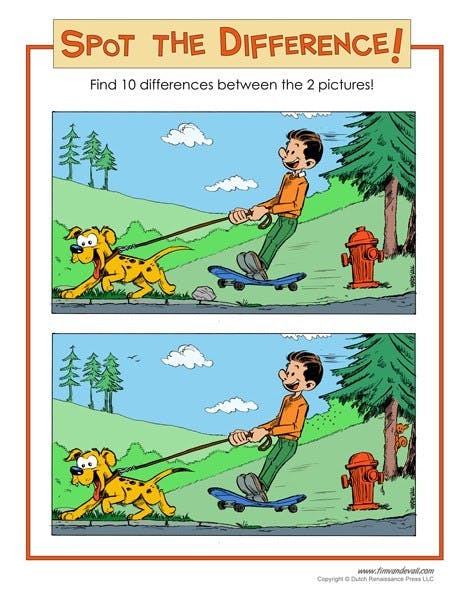
Image source: Tim’s Printables
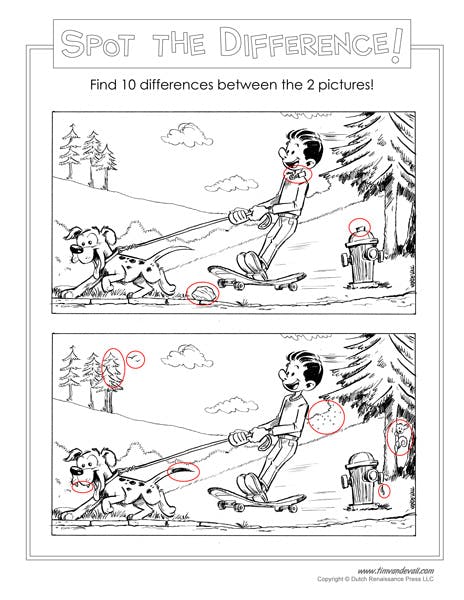
2. Rebus puzzles
A rebus is a visual word puzzle that uses lateral thinking to find its intended meaning. The word or phrase is depicted with a visual illustration, including letters and words. Students must think creatively to figure out the meaning from the clues they’re given.

Image source: Wikipedia

Image source: Stack Exchange
a) Top secret
b) Think outside the box
Visit the link below if you want more fun rebus puzzles for your students:
3. Optical illusions
Get tricky with your students! Optical illusions use visual tricks that alter the perception of what you’re really seeing. Students will love trying to figure out what’s really going on in these examples.
a) How many legs does the elephant have?

Image source: Optics For Kids
b) Are the two squares different colours?
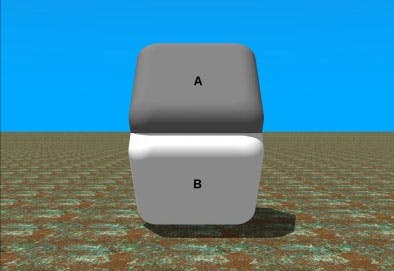
Image source: Brain Den
b) They’re exactly the same colour. If you place your finger over the spot where the squares meet, you can see they’re the same. Try this impossible paper puzzle if you want a more hands-on optical illusion. You can make one to show your class, then have students make their own as a fun brain teaser to show friends and family.
4. Stroop effect test
The Stroop effect was discovered in the 1930s by John Ridley Stroop. During the test, you’re given a list of colour names, with each word being a different colour than what they describe.
The test involves saying the colour of a word, rather than reading the word itself. Your mind must process the two conflicting pieces of information, which slows down reaction speed and requires careful thought to get through.
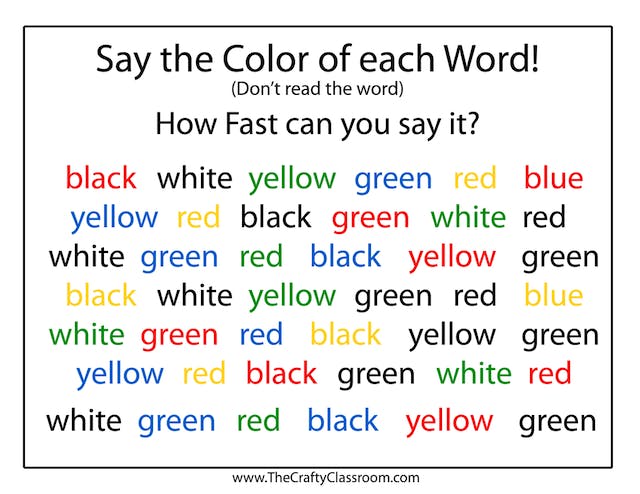
Image source: The Crafty Classroom
Benefits of brain teasers for kids
You know your students enjoy them, but did you know there are plenty of additional reasons to make brain teasers a regular activity in the classroom?
A study on the attention spans of six-year-olds found children who were given brain teasers were more attentive than those who were not — showing brain teasers were effective at boosting children’s attention spans.
Brain teasers for kids can also:
- Strengthen problem solving and critical thinking skills
- Encourage lateral thinking and build new perspectives
- Improve cognitive abilities like memory and processing speed
- Inspire teamwork and communication
- Engage students and motivate them to learn
- Provide necessary breaks from traditional class work
How to use brain teasers in the classroom
In addition to their many learning advantages, brain teasers are a great way to break up the day and engage your students. Here are just a few ways you can use brain teasers for kids as a teaching strategy and maximize the benefits in your classroom:
- Engagement-boosting activity before or after lessons
- Bonus questions in assignments and tests
- Optional “free time” activity
- Encourage team building — split students into groups to solve them together
- Supplement lessons — choose brain teasers about the subject you’re teaching
Final thoughts on brain teasers for kids
No matter what subject or skill you want to focus on, a brain teaser is a great addition to traditional teaching methods. Plus, it’s something students will actually be excited to do.
Remember that brain teaser are designed to be fun for kids. it’s not about finding the right answer, but the mental exercise they get from trying to find the solution.
Use any of the brain teasers in this list whenever you need a boost of energy in your classroom. Bonus points if you can stump any adults!
Create or log in to your free teacher account on Prodigy – a game-based learning platform for math that’s easy to use for educators and students alike. Aligned with standards across the English-speaking world, it’s used by more than a million teachers and 90 million students.
- Grades 6-12
- School Leaders
Free end-of-year letter templates to your students 📝!
50 STEM Activities for Kids of All Ages and Interests
Inspire the innovators of tomorrow.
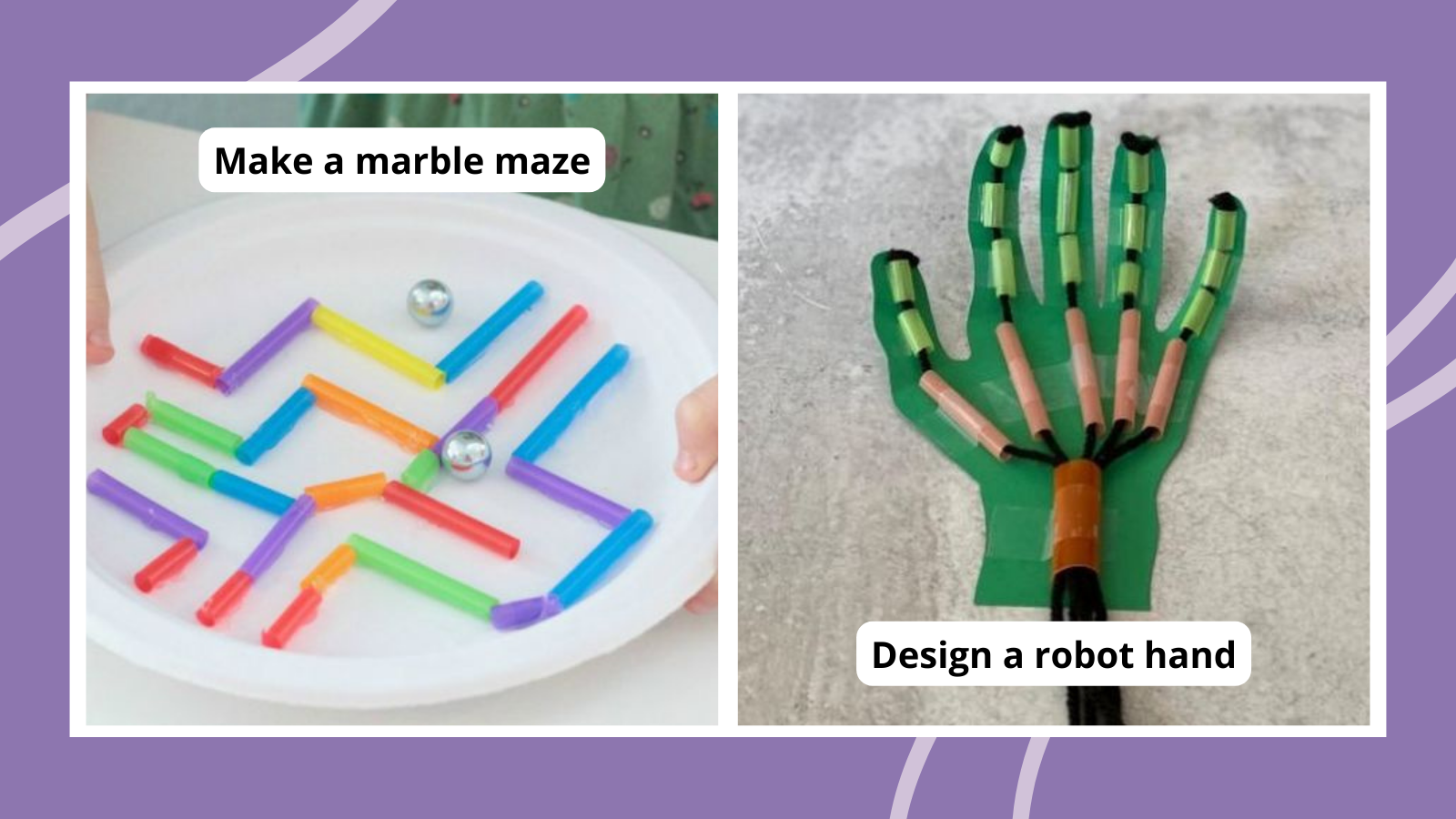
These days, STEM learning is more important than ever. Science, technology, engineering, and math are the keys to many modern careers, so a good grounding in them from an early age is a must. The best STEM activities for kids are hands-on, leading students to cool innovations and real-world applications . Here are some of our favorites, with challenges and experiments that will really get kids thinking about how STEM plays a part in their everyday lives.
Want some quick challenges to try with elementary students? Get free printable stem challenge cards for grades K-5:
- Kindergarten STEM Challenges
- First Grade STEM Challenges
- Second Grade STEM Challenges
- Third Grade STEM Challenges
- Fourth Grade STEM Challenges
- Fifth Grade STEM Challenges
For more STEM activities for kids across a range of subjects, take a look at these ideas.
1. Add STEM bins to your classroom
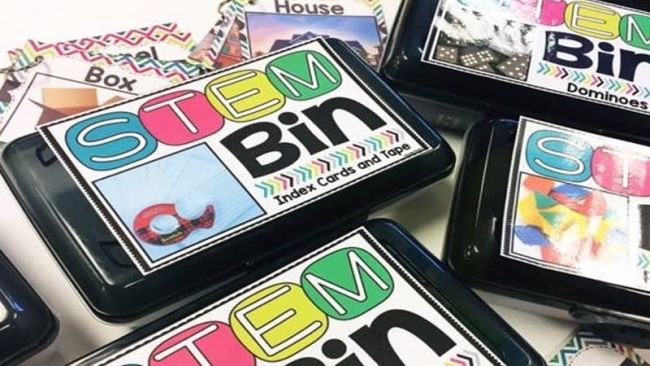
STEM Focus: Science, Technology, Engineering, Math
Prepare for a wide variety of STEM activities for kids with these cool bins. Incorporate them into literacy centers, create a makerspace, and offer early finishers fun enrichment ideas. Learn how to create and use STEM bins.
2. Conduct an egg drop
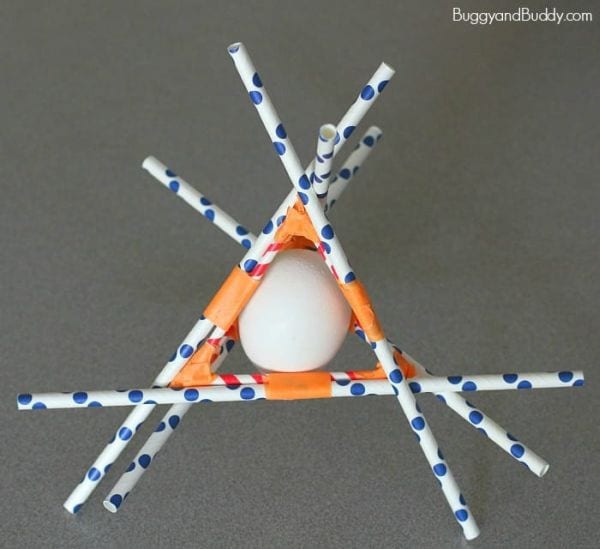
STEM Focus: Engineering
This is one of those classic STEM activities every kid should try at least once. Kids can do it at any age, with different materials and heights to mix it up.
Learn more: Egg Drop at Buggy and Buddy
3. Engineer a drinking straw roller coaster
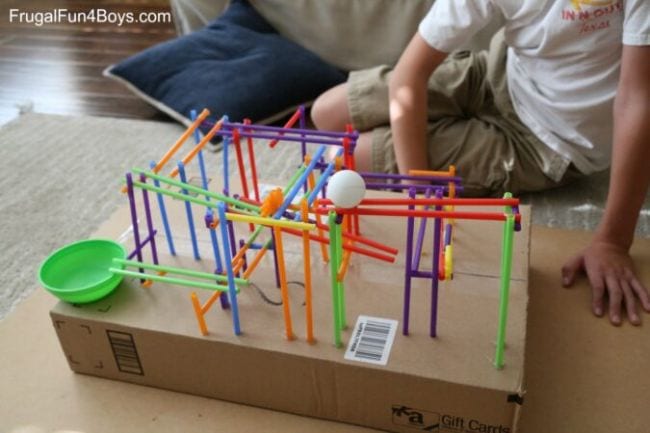
This is such a fun way to encourage engineering skills! All you need are basic supplies like drinking straws, tape, and scissors.
Learn more: Straw Roller Coaster at Frugal Fun for Boys and Girls
4. Find ways to slow soil erosion
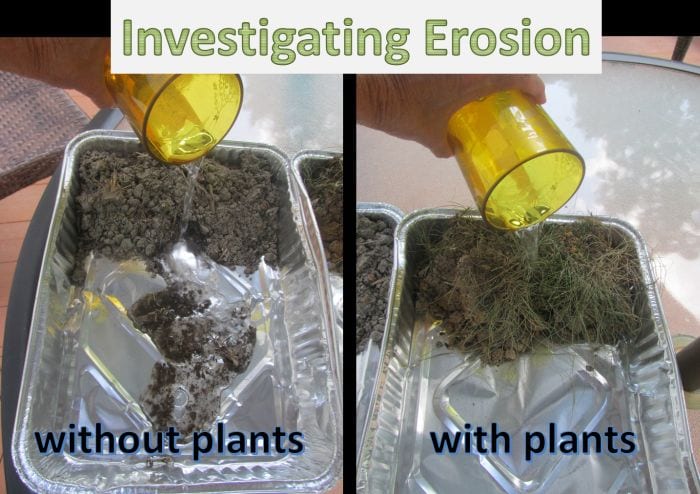
STEM Focus: Science (Ecology), Engineering
Compare the effects of “rain” on hills of bare soil vs. those covered with grass. Have your 3rd grade science students predict which they think will stand up to erosion better and then test their hypotheses.
Learn more: Erosion Experiment at Third Grade Thinkers
5. Simulate an earthquake
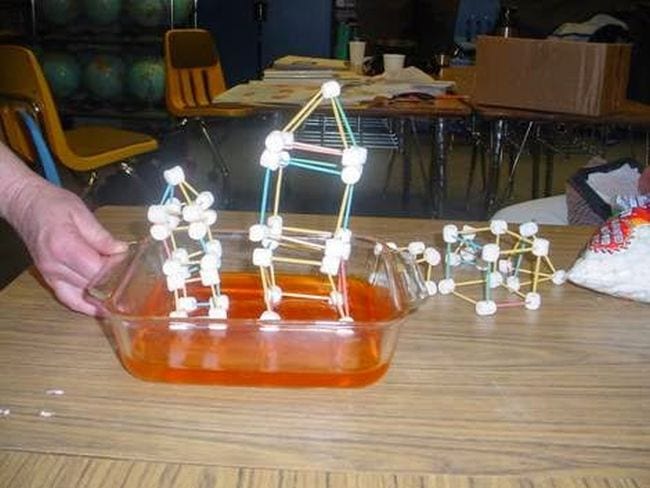
The ground under our feet may feel solid, but an earthquake changes that pretty quickly. Use Jell-O to simulate the earth’s crust, then see if you can build an earthquake-proof structure.
Learn more: Earthquake Science at Teaching Science
6. Stand up to a hurricane

In a hurricane zone, houses must be able to stand up to strong winds and possible flooding. Can your students design houses that make it safer to live in these dangerous areas?
Learn more: Hurricane Houses at Carly and Adam
7. Create a new plant or animal
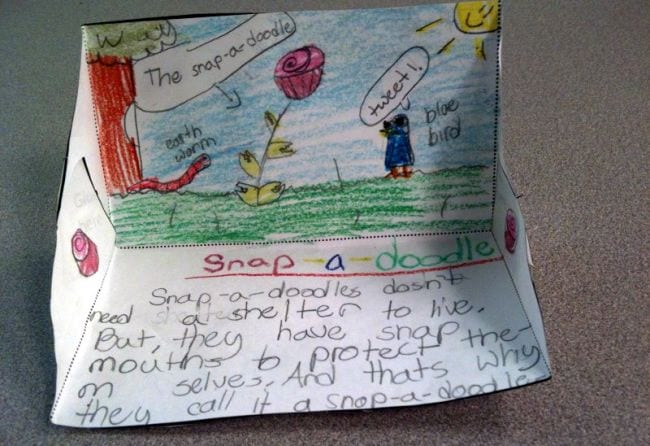
STEM Focus: Science (Biology)
Kids will really get into this project, indulging their creativity as they invent a plant or animal that’s never been seen before. They’ll need to be able to explain the biology behind it all, though, making this an in-depth project you can tailor to any class.
Learn more: Create a Creature at I Love 2 Teach
8. Design a helping hand
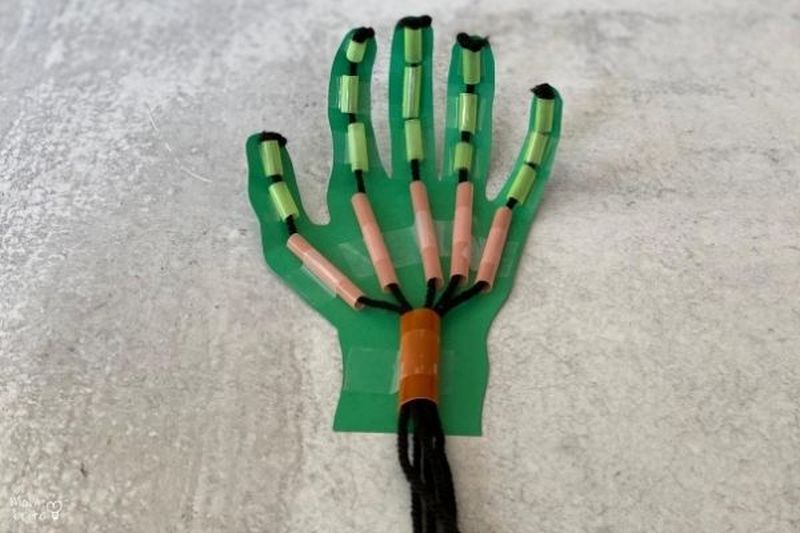
STEM Focus: Technology, Engineering
This is a great group science project. Students hone their design and engineering skills to make a working model of a hand. For a more advanced activity, challenge students to build a robotic hand that can be controlled remotely.
Learn more : Model Hand at Mombrite
9. Understand the impact of non-renewable resources
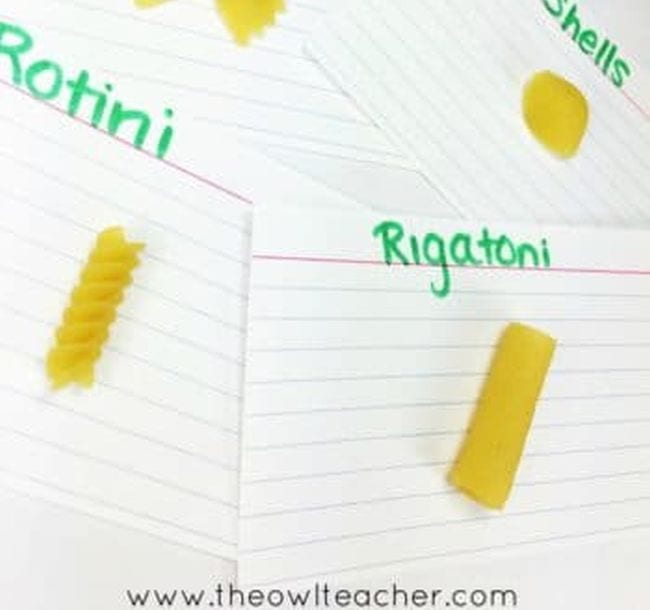
STEM Focus: Science (Environmental Science)
Discuss the differences between renewable and non-renewable resources, then have your class form “companies” to “mine” non-renewable resources. As they compete, they’ll see how quickly the resources are used. It’s a great tie-in to energy conservation discussions.
Learn more: Energy Resources at The Owl Teacher
10. Devise an amazing marble maze
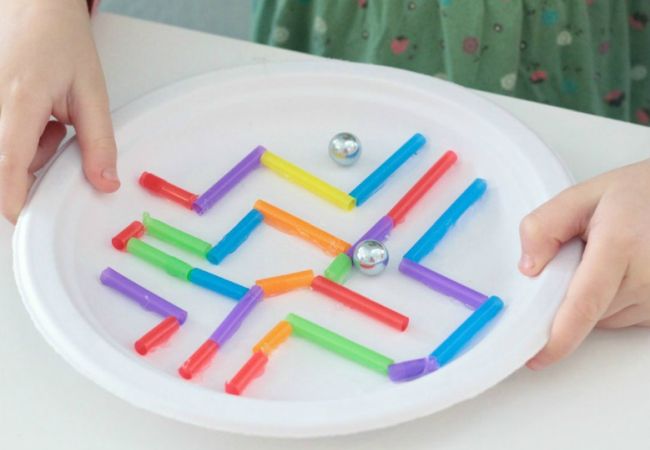
Marble mazes are one of students’ favorite STEM activities! You can provide supplies like straws and paper plates for their project. Or let them use their imaginations and create marble mazes from any materials they can think of.
Learn more: Marble Maze on Raising Lifelong Learners
11. Fly clothespin airplanes
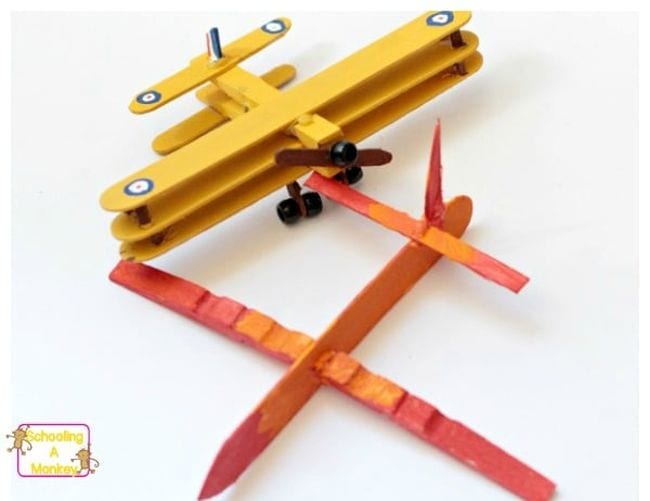
STEM: Engineering
Ask students what they think the airplane of the future might look like. Then, provide them with clothespins and wood craft sticks, and challenge them to build a new kind of airplane. Bonus points if it can actually fly!
Learn more: Clothespin Airplane at STEAMsational
12. Launch a catapult cannon
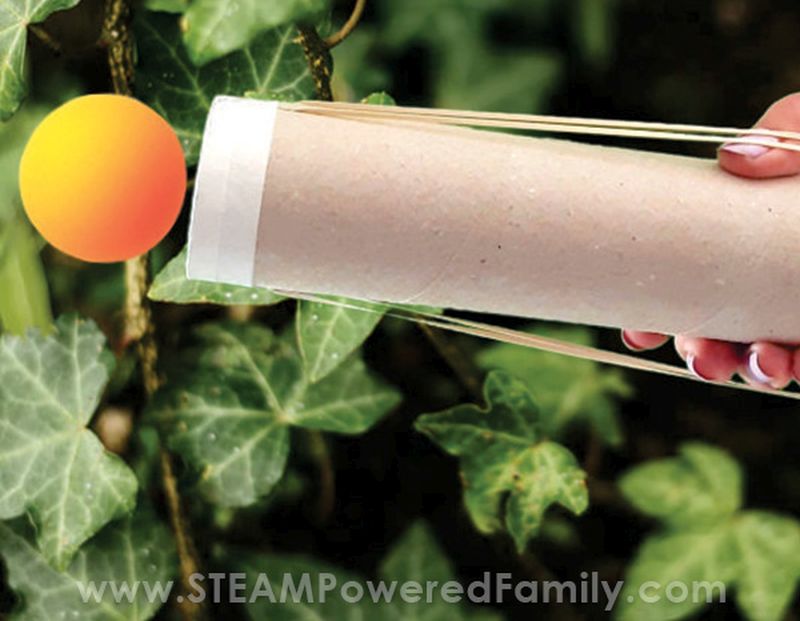
Catapult STEM challenges are always fun, but this one adds a new twist that allows kids to launch objects much farther than the usual wood craft stick version!
Learn more: Catapult Cannon and STEAM Powered Family
13. Bounce on a trampoline
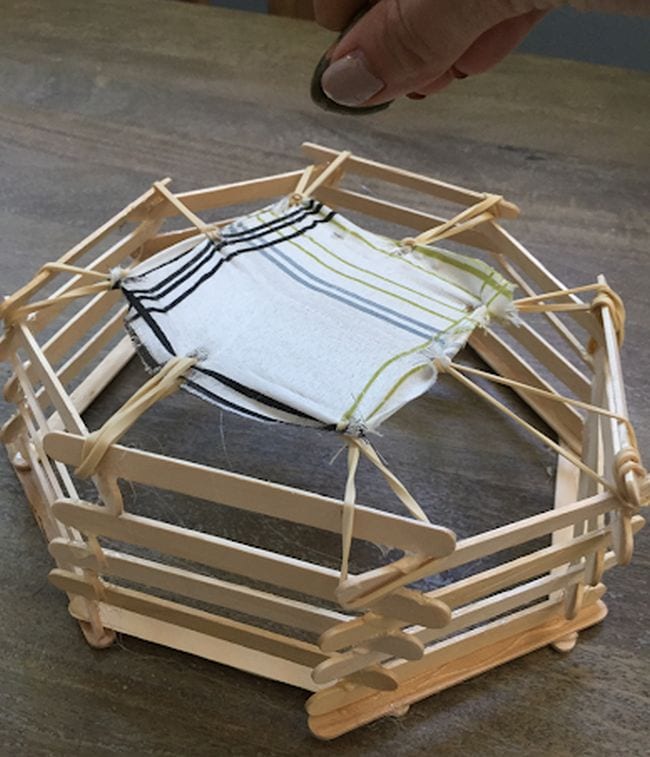
Kids love bouncing on trampolines, but can they build one themselves? Find out with this totally fun STEM challenge.
Learn more: Trampoline Challenge at Student Savvy
14. Build a solar oven
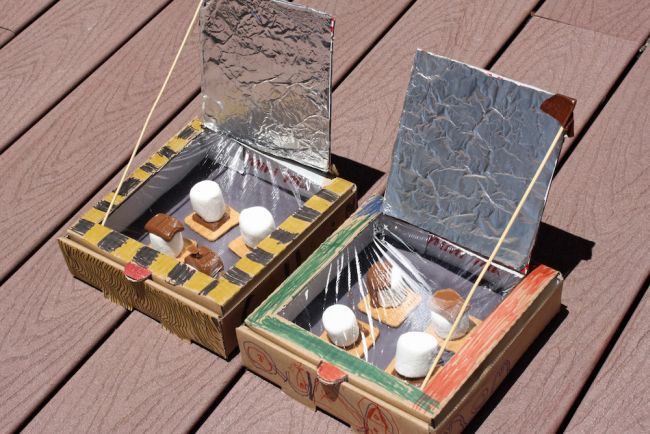
STEM Focus: Science, Engineering
Learn about the value of solar energy by building an oven that cooks food without electricity. Enjoy your tasty treats while discussing ways we can harness the energy of the sun and why alternative energy sources are important.
Learn more: Solar Oven at Desert Chica
15. Build a snack machine
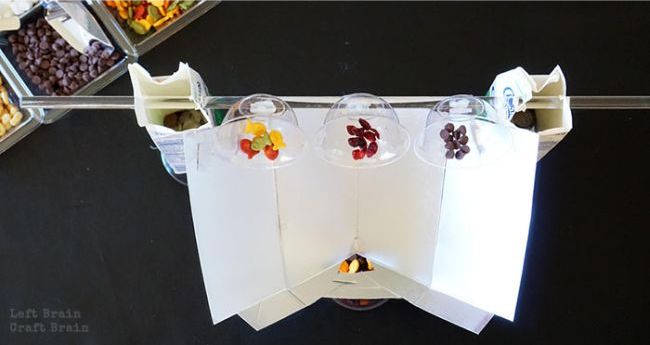
Incorporate everything students learn about simple machines into one project when you challenge them to build a snack machine. Using basic supplies, they’ll need to design and construct a machine that delivers snacks from one location to another.
Learn more: Snack Machine at Left Brain Craft Brain
16. Recycle newspaper into an engineering challenge

It’s amazing how a stack of newspapers can spark such creative engineering. Challenge students to build the tallest tower, support a book, or even build a chair using only newspaper and tape.
Learn more: Newspaper STEM Challenges at STEM Activities for Kids
17. Design a biosphere
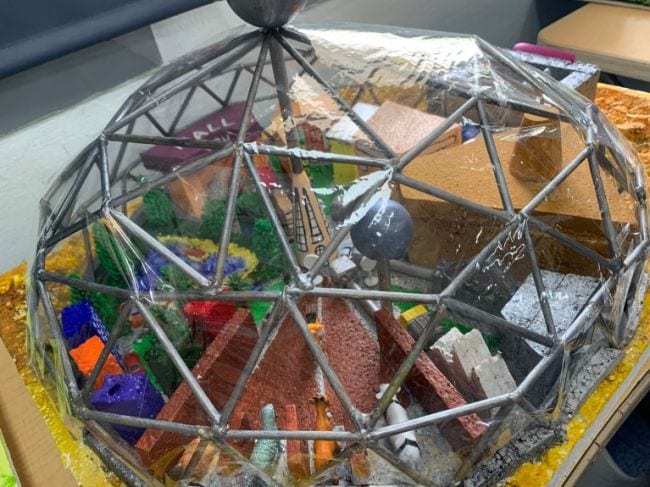
This project really brings out kids’ creativity and helps them understand that everything in a biosphere is really part of one big whole. You’ll be overwhelmed by what they come up with!
Learn more: Biosphere Project at Laney Lee
18. See the effects of an oil spill
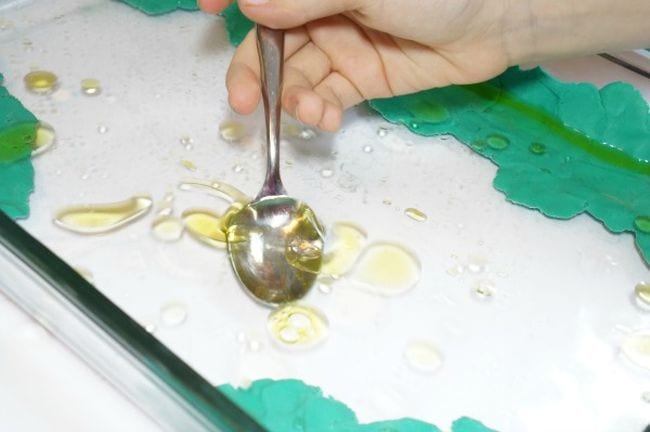
Learn why an oil spill is so devastating for wildlife and the ecosystem with this hands-on activity. Kids experiment to find the best way to clean up oil floating on water and rescue the animals affected by the spill.
Learn more: Oil Spill Cleanup at Kitchen Counter Chronicle
19. Assemble a steady-hand game

STEM Focus: Engineering, Technology
This is such a fun way to learn about circuits. It also brings in a bit of creativity, adding the “A” for STEAM.
Learn more: Steady Hand Game at Left Brain Craft Brain
20. Use cabbage to test pH

STEM Focus: Science (Chemistry)
Teach kids about acids and bases without needing pH test strips! Simply boil some red cabbage and use the resulting water to test various substances—acids turn red and bases turn green.
Learn more: Cabbage pH at Education Possible
21. Engineer a craft stick bridge
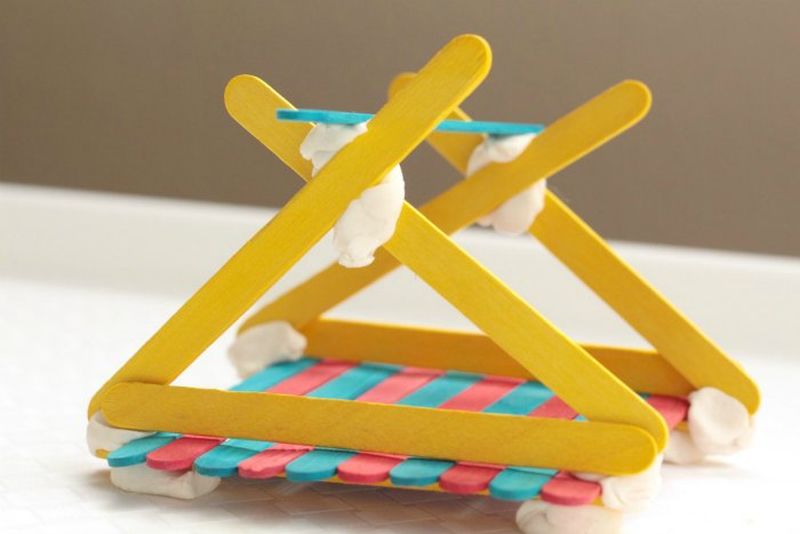
Here’s another one of those classic STEM activities that really challenge kids to use their skills. Build a bridge with Popsicle sticks and other materials, then compete to see which can bear the most weight.
Learn more: Bridge Challenge at Mommy Evolution
22. Forage and build a bird nest

STEM Focus: Science (Biology), Engineering
Birds build incredibly intricate nests from materials they find in the wild. Take a nature walk to gather materials, then see if you can build a sturdy, comfy nest of your own!
Learn more: Build a Bird Nest at Kids Craft Room
23. Drop parachutes to test air resistance
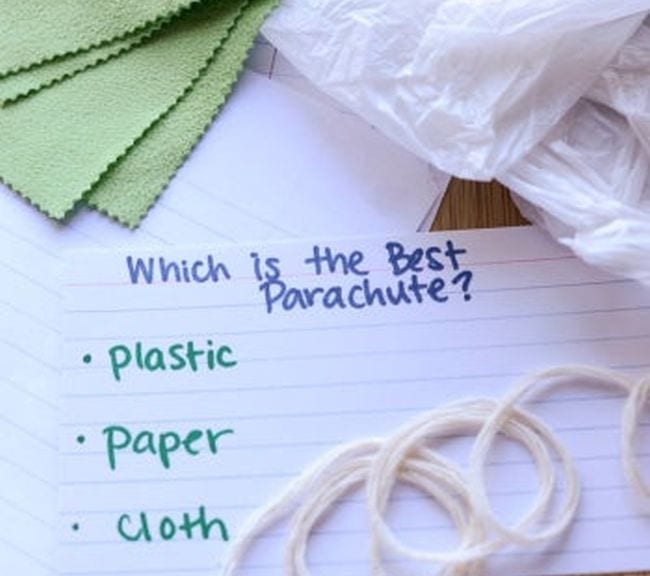
Use the scientific method to test different types of material and see which makes the most effective parachute. Your students also learn more about the physics behind air resistance.
Learn more: Parachute Challenge at Education.com
24. Find the most waterproof roof
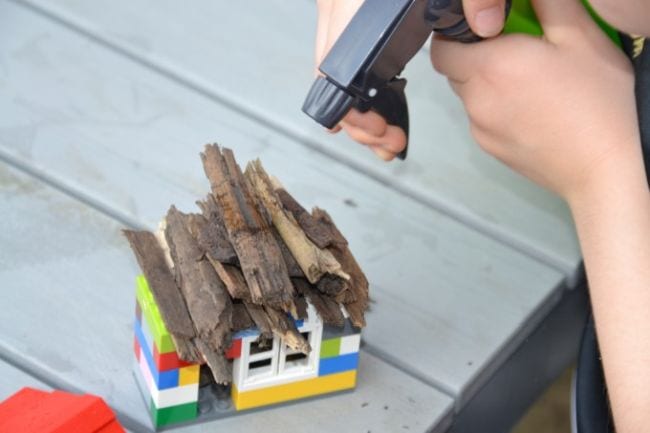
Calling all future engineers! Build a house from LEGO, then experiment to see what type of roof prevents water from leaking inside.
Learn more: Waterproof Roof at Science Sparks
25. Build a better umbrella
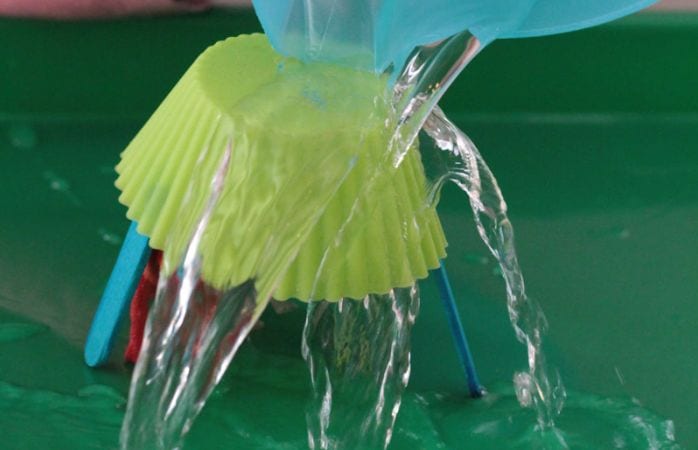
Challenge students to engineer the best possible umbrella from various household supplies. Encourage them to plan, draw blueprints, and test their creations using the scientific method.
Learn more: Better Umbrella at Raising Lifelong Learners
26. Go green with recycled paper
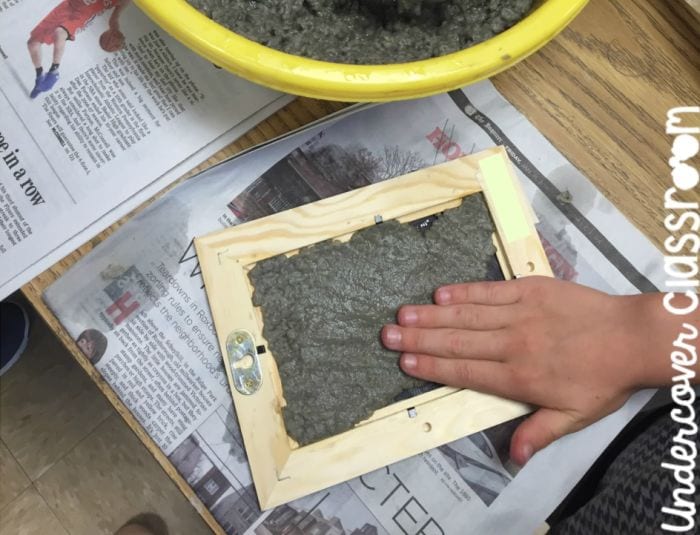
STEM Focus: Science (Ecology)
We talk a lot about recycling and sustainability these days, so show kids how it’s done! Recycle old worksheets or other papers using screen and picture frames. Then, ask kids to brainstorm ways to use the recycled paper.
Learn more: Recycled Paper at Undercover Classroom
27. Brew up your own slime
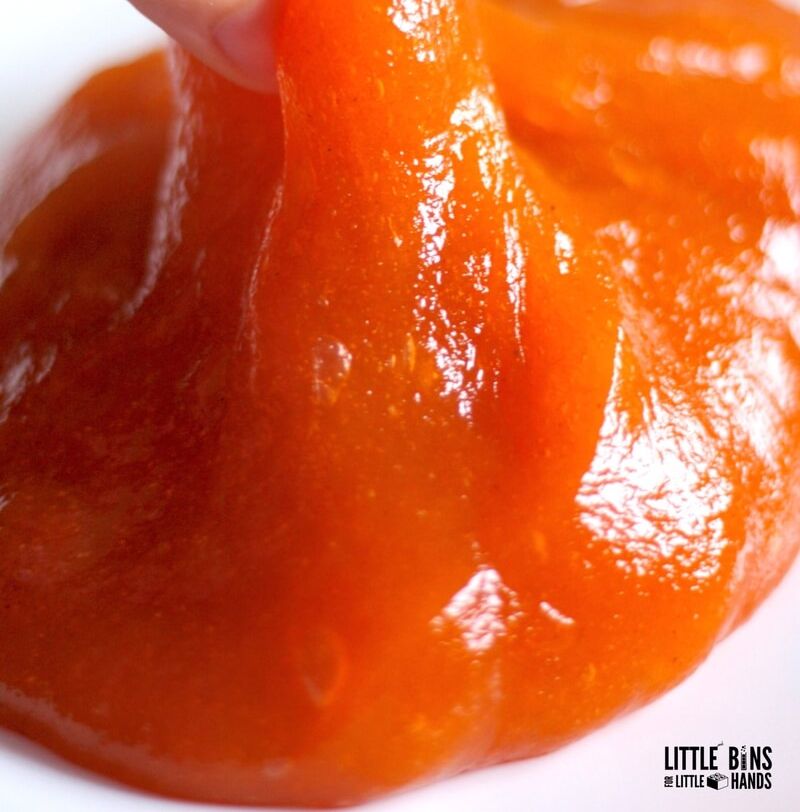
Chances are good your students already love making and playing with slime. Turn the fun into an experiment by changing the ingredients to create slime with a variety of properties—from magnetic to glow-in-the-dark!
Learn more: Slime Experiments at Little Bins for Little Hands
28. Create a taxonomy system
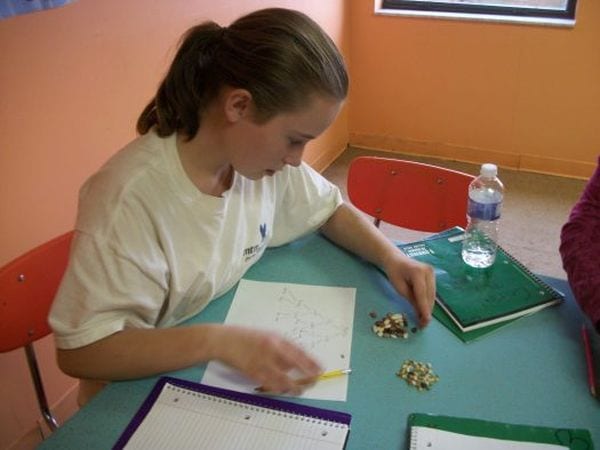
Students can step into Linnaeus’ shoes by creating their own system of taxonomy using a handful of different dried beans. This is a fun science project to do in groups, so students can see the differences between each group’s system.
Learn more: Classification Systems at Our Journey Westward
29. Find out which liquid is best for growing seeds
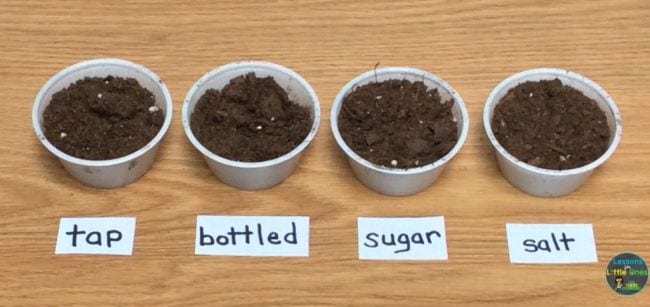
As you learn about the life cycle of plants , explore how water supports plants’ growth. Plant seeds and water them with a variety of liquids to see which sprout first and grow best.
Learn more: Plants and Liquids at Lessons for Little Ones
30. Create giant bubbles
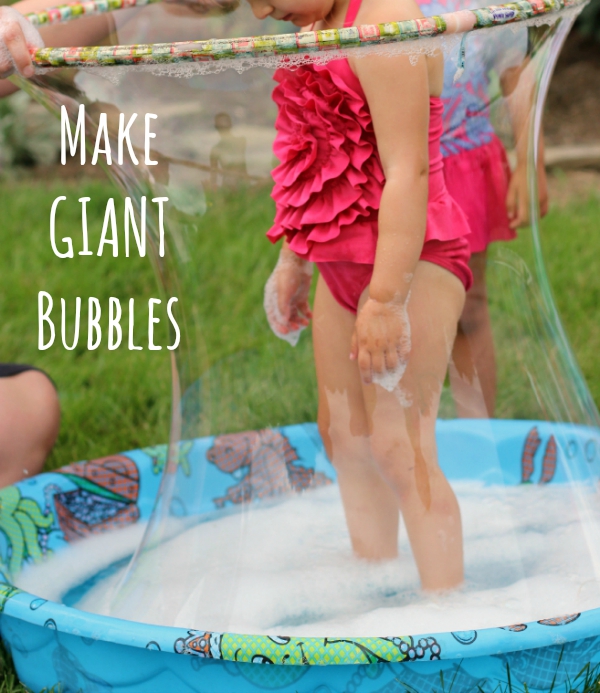
It’s easy to mix your own soap bubble solution with just a few ingredients. Let kids experiment to find the best proportion of ingredients to create giant bubbles, long-lasting bubbles, and other variations.
Learn more: Giant Soap Bubbles at Make and Takes
31. Make compost in a cup

This is an easy science activity, and you can turn it into a science fair project by experimenting with different mixtures, layering, and conditions for your compost cups.
Learn more: Compost Cups at The Happy Housewife
32. Help monarch butterflies
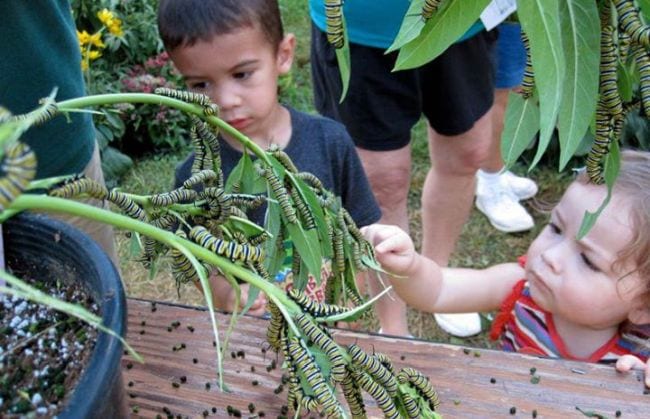
You may have heard that monarch butterflies are struggling to keep their population alive. Join the fight to save these beautiful bugs by planting your own butterfly garden, monitoring monarch populations, and more. Get all the info you need at the link.
Learn more: Monarch Education at Monarch Watch
33. See water pollution in action
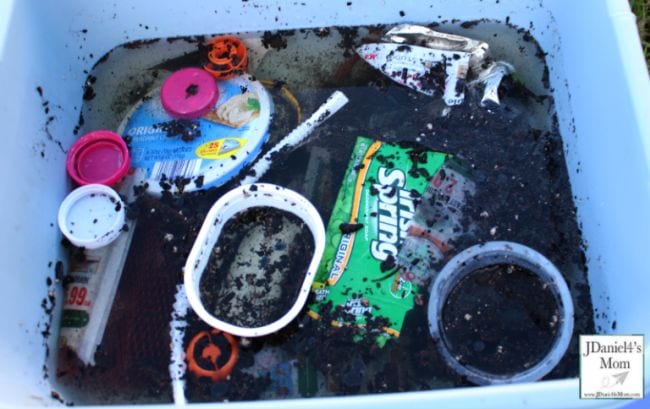
STEM Focus: Science (Environmental Science, Chemistry, Biology)
Learn about the challenges of cleaning up polluted water sources like rivers and lakes with this interesting outdoor science activity. Pair it with a visit to a local water treatment plant to expand the lesson.
Learn more: Water Pollution at JDaniel4’s Mom
34. Test your local water quality
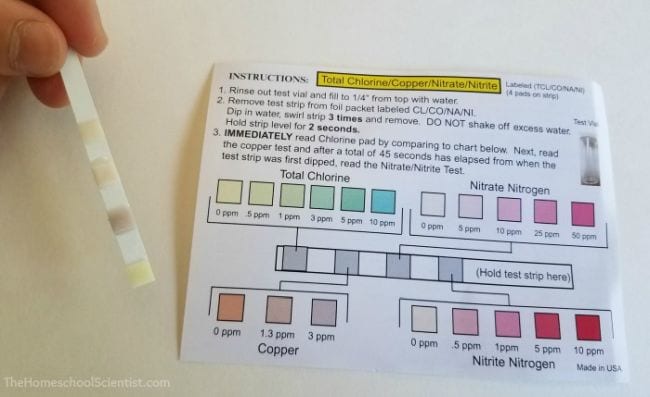
STEM Focus: Science (Chemistry, Environmental Science)
Once you’ve “cleaned up” your water, try testing it to see how clean it really is! Then head out to test other types of water. Kids will be fascinated to discover what’s in the water in their local streams, ponds, and puddles. Student water-testing kits are readily available online.
Learn more: Water Quality Experiment at The Homeschool Scientist
35. Explore with an edible Mars Rover
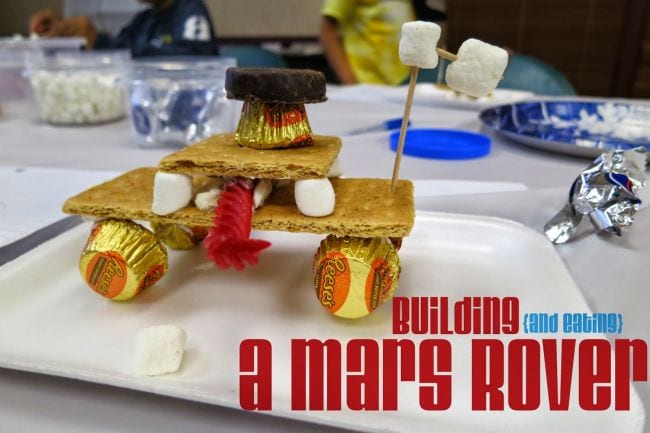
STEM Focus: Science (Space), Engineering
Learn about the conditions on Mars and the tasks the Mars Rover will need to complete. Then, give kids supplies to build their own. (Add to the challenge by making them “buy” the supplies and stick to a budget, just like NASA!)
Learn more: Edible Mars Rover at Library Makers
36. Bake the best potato
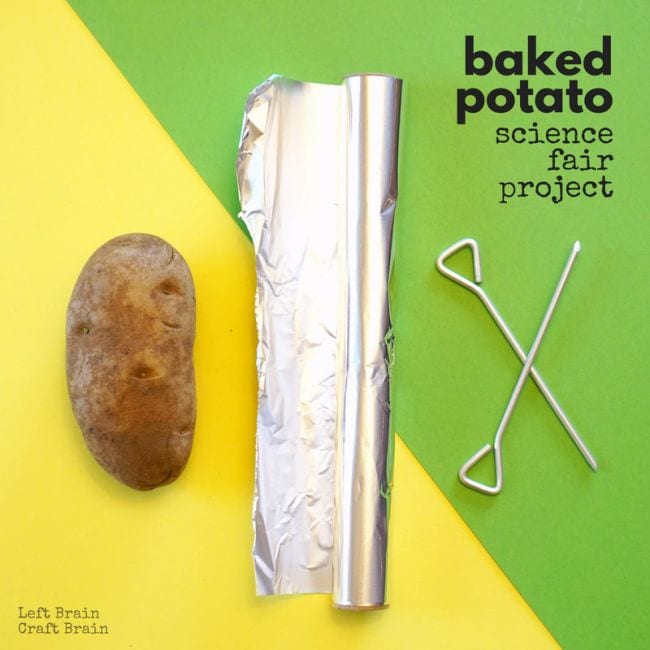
STEM Focus: Science (Physics)
This edible science project is a nutritious way to explore the scientific method in action. Experiment with a variety of methods for baking potatoes—microwaving, using a traditional oven, wrapping them in foil, using baking pins, etc.—testing hypotheses to discover which works best.
Learn more: Potato Science at Left Brain Craft Brain
37. Waterproof a boot
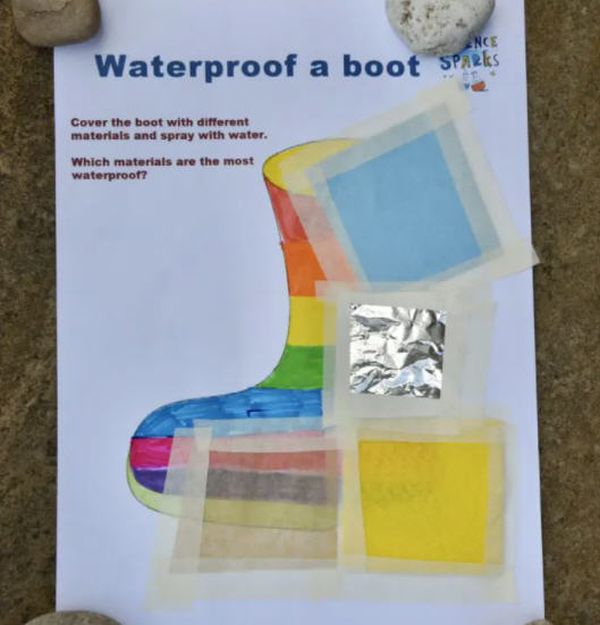
Ask kids to select various materials and tape them over the free boot printable. Then, test their hypotheses to see which ones work best.
Learn more: Waterproof a Boot at Science Sparks
38. Determine the best way to melt ice
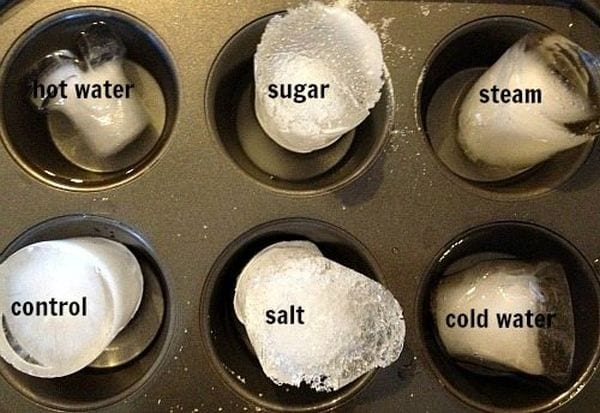
Conventional wisdom says we sprinkle salt on ice to melt it faster. But why? Is that really the best method? Try this science experiment and find out.
Learn more: Melting Ice at The Chaos and the Clutter
39. Don’t melt the ice
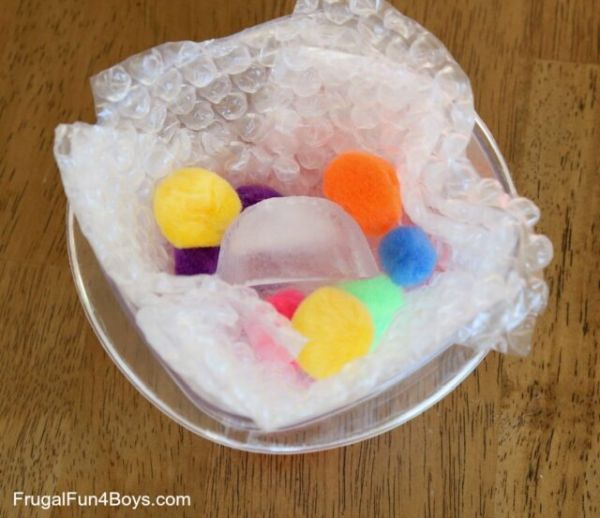
We spend a lot of time in winter trying to get rid of ice, but what about when you don’t want the ice to melt? Experiment with different forms of insulation to see which keeps ice frozen the longest.
Learn more: Ice Insulation at Frugal Fun for Boys and Girls
40. Build a straw house
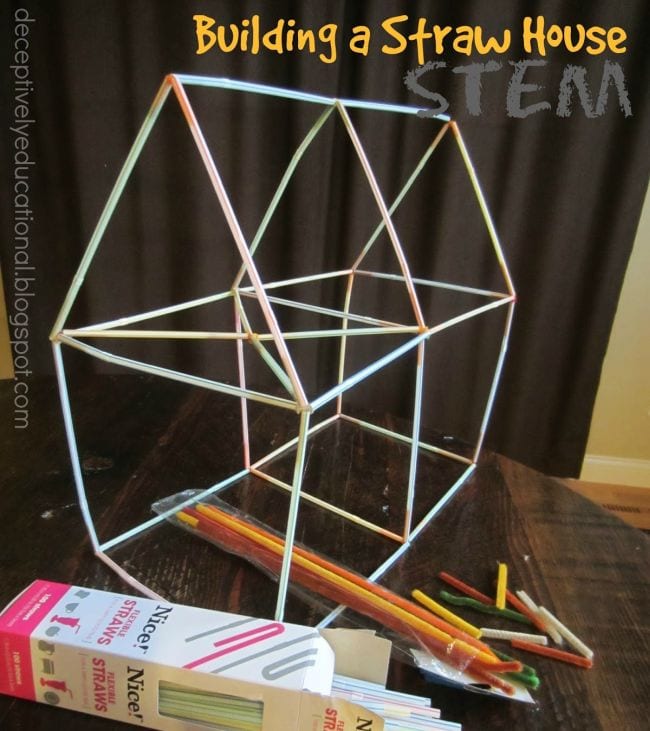
Grab a box of straws and a package of pipe cleaners. Then task kids with designing and building their dream house, using only those two items.
Learn more: Building a Straw House at Deceptively Educational
41. Design a balloon-powered car
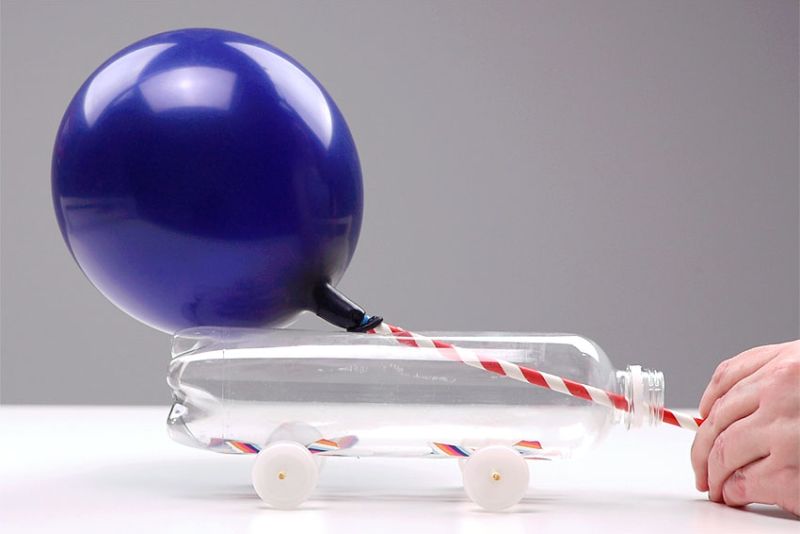
Explore the laws of motion and encourage creativity when you challenge students to design, build, and test their own balloon-powered cars. Bonus: Use only recycled materials to make this project green!
Learn more: Balloon-Powered Car at One Little Project
42. Learn map skills by designing an amusement park
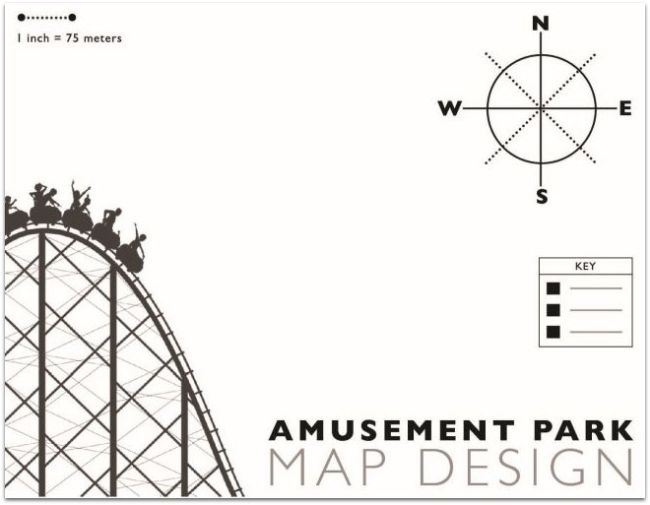
STEM Focus: Science (Physics), Technology, Engineering, Math
For this cross-curricular activity, students investigate the parts of a map by creating an amusement park. After they create their map, they do a detailed drawing and write about one of their ride designs. Then they design an all-access park pass. So many STEM activities in one! Find out more about it here.
43. Reach for the ceiling
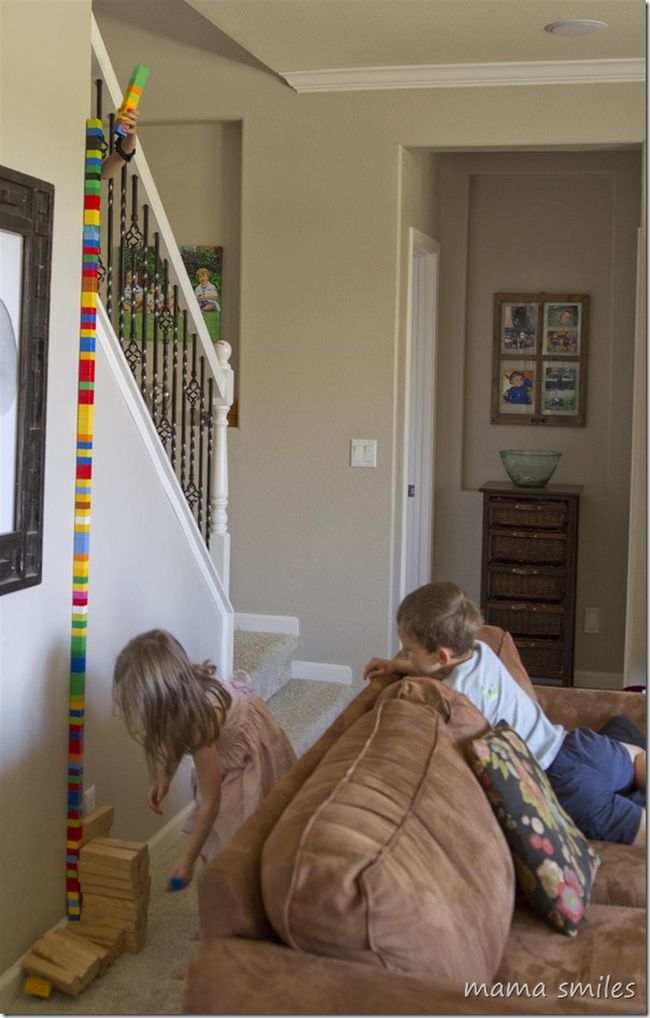
Round up all your building blocks and try this whole-class project. What will students need to do to be able to construct a tower that reaches all the way to the ceiling?
Learn more: Block Tower at Mama Smiles
44. Cast a tall shadow
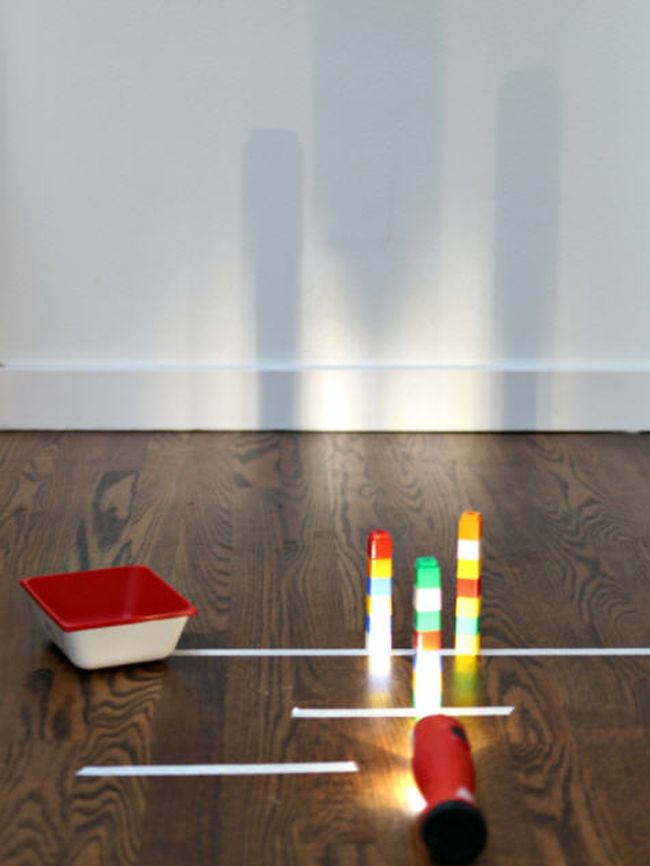
STEM Challenge: Science (Physics)
Here’s another tower-building challenge, but this one’s all about shadows! Kids will experiment with the height of their tower and the angle of their flashlight to see how tall of a shadow they’re able to cast.
Learn more: Shadow Towers at No Time for Flash Cards
45. Devise a recycled toy bot
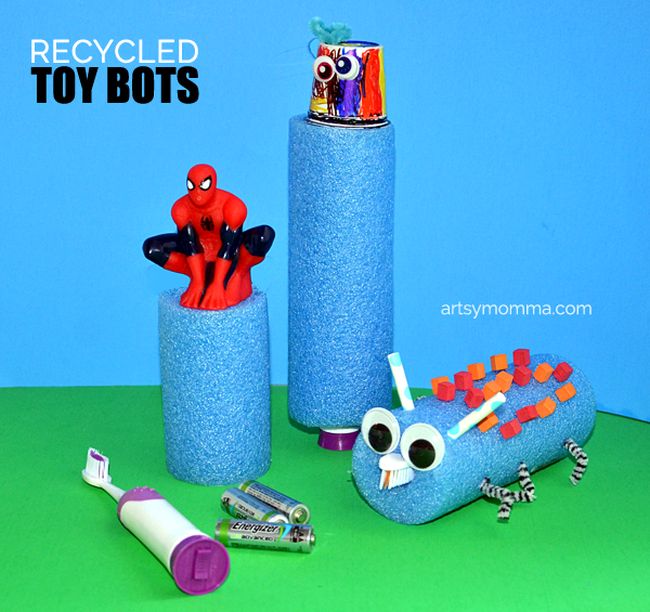
These adorable toy bots are made from pool noodles and recycled electric toothbrushes. So clever! Kids will have fun designing their own, plus they can tweak this idea to make other fun wiggling toys.
Learn more: Recycled Toy Bot at Artsy Momma
46. Link up the longest paper chain
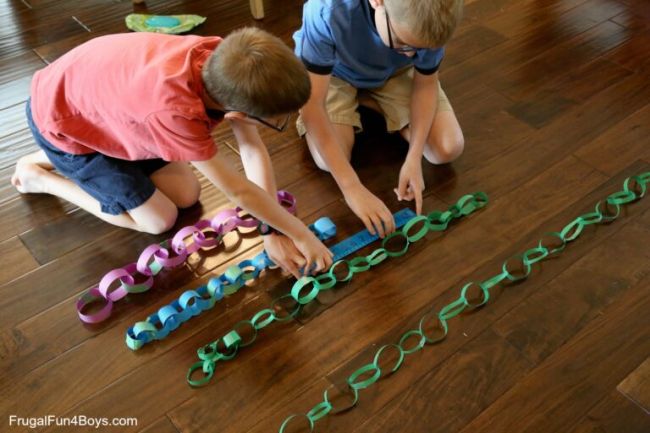
This incredibly simple STEM activity really gets kids thinking. The challenge? Create the longest-possible paper chain using a single piece of paper. So simple and so effective.
Learn more: Paper Chain Challenge at Frugal Fun for Boys and Girls
47. Find out what you can make from a plastic bag
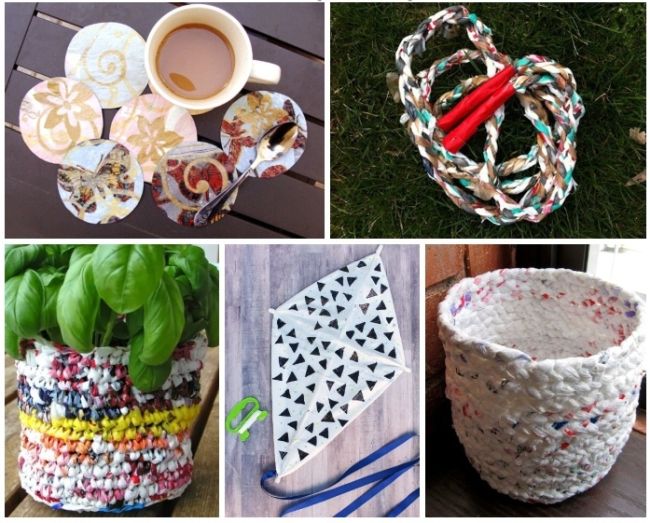
STEM Focus: Science (Environmental Science), Engineering
Plastic bags are one of the most ubiquitous items on the planet these days, and they’re difficult to recycle. Give each student a plastic bag and ask them to create something new and useful. ( These ideas from Artsy Craftsy Mom offer some inspiration. )
48. Start a school robotics team
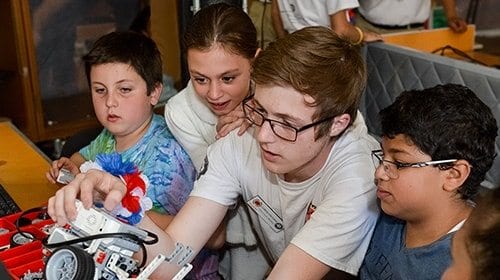
STEM Focus: Technology
Coding is one of the most valuable STEM activities you can include in your classroom plans. Set up a school robotics club and inspire kids to embrace their newfound skills! Learn how to set up your own club here.
49. Embrace the Hour of Code
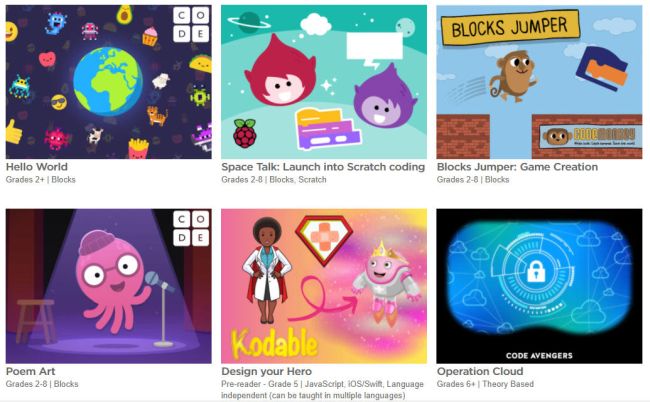
The Hour of Code program was designed as a way to get all teachers to try just one hour of teaching and learning coding with their students. Originally, the Hour of Code event was held in December, but you can organize yours any time . Then, continue to learn using the huge amount of resources on Hour of Code’s website .
50. Give kids a Maker Cart and a pile of cardboard
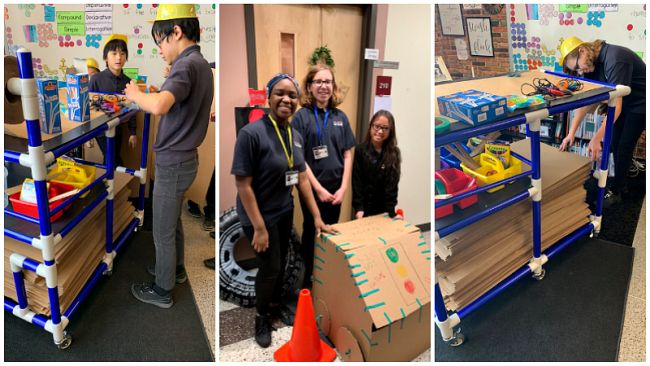
You don’t need a whole lot of fancy supplies to create a STEM Cart or makerspace. Scissors, tape, glue, wood craft sticks, straws—basic items like these combined with a stack of cardboard can inspire kids to create all sorts of amazing projects! See how these STEM activities work here.
What are your favorite STEM activities for kids? Come share in the We Are Teachers HELPLINE group on Facebook .
Plus, get 20+ free stem posters for your classroom .
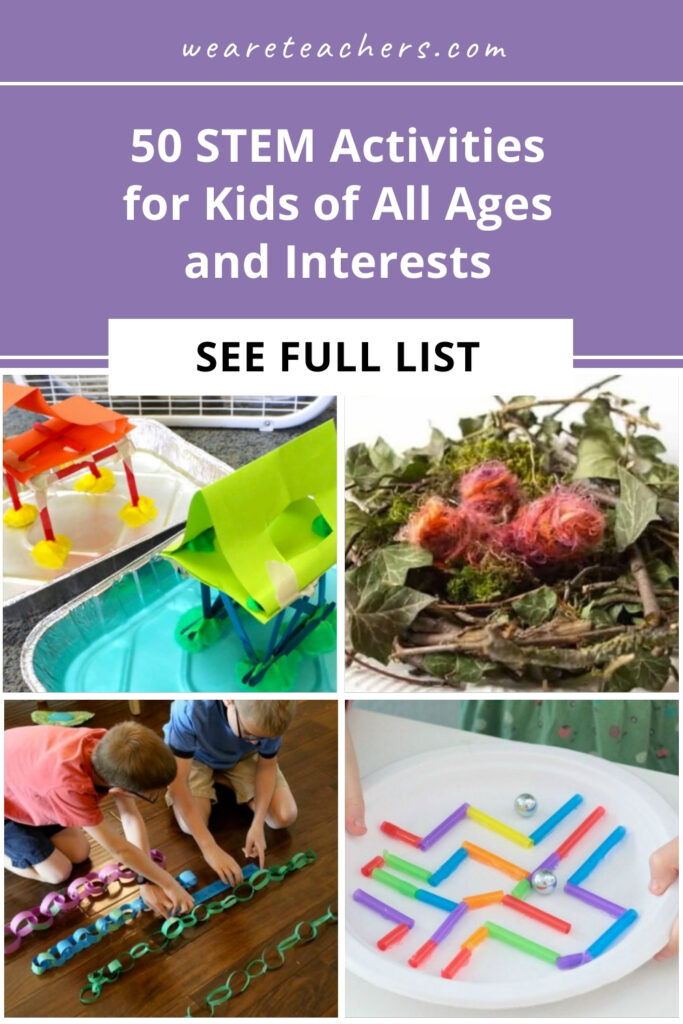
You Might Also Like
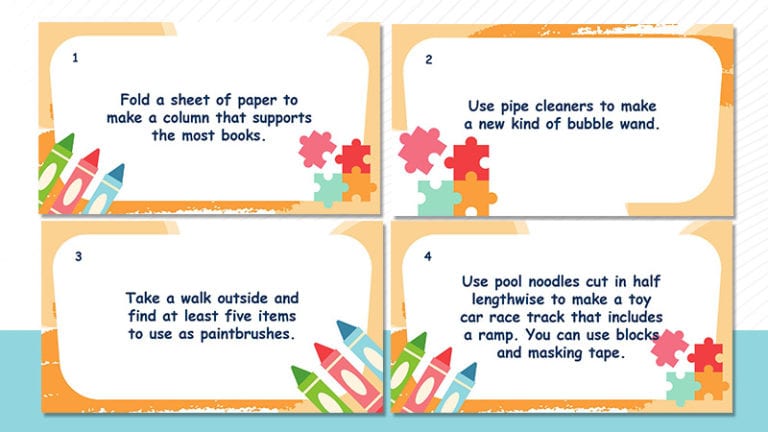
25 Kindergarten STEM Challenges That Little Ones Will Love
They're never too young to create and explore! Continue Reading
Copyright © 2024. All rights reserved. 5335 Gate Parkway, Jacksonville, FL 32256

10 Best Therapy Games for Kids
Growing up can put a lot of pressure on a child—pressure to fit in, succeed academically, and develop their skills. Occasionally, they may have trouble coping or interacting with others. Fortunately, play therapy allows children to overcome issues from earlier developmental stages and enjoy going to therapy. Explore the ten best therapy games for kids of all ages!
What are Therapy Games?
Therapy games aim to help children address emotional and social challenges in fun, engaging, and less intimidating ways. Some games are adapted from classics like Uno or Jenga or mimic popular board games. Others take the form of creative expression, such as painting and coloring, or are emotion-focused.
These games encourage discussions, hone communication techniques, help identify emotions, and find healthy ways for children to express themselves.
Benefits of Therapy Games for Kids
Besides making therapy a more approachable and less daunting activity for children, therapy games also provide the following benefits:
- Safer outlet for emotions. Play therapy provides a safer, more comfortable space for children to identify, express, and manage difficult emotions.
- Healthy coping mechanisms. Young children who struggle with stress, frustration, and negative emotions can benefit from emotional regulation through play therapy. In addition, play therapy can address symptoms during trauma-focused CBT settings [ * ].
- Higher self-esteem. As therapy games help children develop interpersonal skills over time, kids develop higher self-esteem, making decisions with greater confidence.
- Improved problem-solving skills. Some therapy games involve overcoming challenges or working toward a common goal, helping children hone their critical thinking skills.
If you’re looking for new and innovative ways to teach concepts or introduce your child to therapy, consider these therapy games for kids.
1. Feelings Jenga
Feelings Jenga is a twist on the classic game. Players answer prompts on the corresponding blocks by writing a prompt on each block, such as “Name something you were grateful for today” or “Tell us what you think anger looks like.”
2. Trust Fall
Building trust is vital for young children, as it improves communication and cooperative skills [ * ]. This activity involves having the child stand up straight, close their eyes, cross their arms across their body, and fall backward as someone catches them.
The classic trust fall aims to teach children that their partner will catch them safely, but that trust requires courage.
3. Icebreakers
Icebreaker questions aren’t just an excellent getting-to-know-you exercise—they break down barriers and open the floor for discussions about deeper topics.
Simple icebreaker questions might include:
- What is an embarrassing story you haven’t shared before?
- What did you want to grow up to be as a child?
- What is your favorite book and why?
The activity aims to make your child comfortable sharing personal anecdotes, thoughts, and opinions.
Uno is a simple card game that introduces the concept of crafting strategies, matching patterns, developing communication skills, and coping with losing.
Players take turns matching card numbers and colors. They add a card to their hand if they cannot match anything. The aim for each player is to eliminate all their cards.
Uno is available on Amazon for $10.99.
5. Emotion Charades
Young children may struggle to identify and manage intense emotions like fear, disappointment, and frustration. “Gamifying” these experiences through charades can make these emotions more approachable and easier to express.
The instructions are simple—act out an emotion and have your child guess what the emotion is. Then, ask them to act out their interpretation of the emotion.
Use our Exploring Emotions worksheet to debrief after the game and discuss how your child might experience their emotions.
6. Finish the Story
To play Finish the Story, each player takes a turn adding a sentence to the overall story, building on ideas together, and exploring their creative imagination.
Finish the Story is a fun way to improve a child’s language and communication skills, enhance sentence formation, and build vocabulary.
7. Obstacle Course
Obstacle courses are excellent for reinforcing communication and cooperation, as children must work together to overcome the challenges in front of them. Arrange obstacle courses according to age—use pillows and soft surfaces for younger children.
Older children may require more stimulation and challenging obstacle courses that you can set up outdoors.
8. Feelings Bingo
If your child struggles to express their emotions, try playing Feelings Bingo. Create boards using stickers or words to represent happiness, sadness, and anger. To play, call out an emotion and ask your child to mark it on their cards.
Feelings Bingo is excellent for vocabulary building, as you expose children to new feelings and discuss their meanings. You can also use Feelings Bingo to normalize tricky emotions like anger, reinforcing that these emotions are valid.
Our Feelings Wheel can help you put together your bingo board.
9. FEELOPOLY
As its title suggests, FEELOPOLY is a variation on the classic board game Monopoly. Instead of playing against one another, players work cooperatively to “validate” the feelings on the board through example prompts. Some of these prompts might include:
- What might help you feel better when you’re feeling sad?
- Explain how something can cause you to feel angry or frustrated.
- What are some healthy outlets for managing anxiety?
You can find a printable FEELOPOLY board on Etsy for $13.50.
10. DBT Board Game
Like FEELOPOLY, the DBT Board Game is customizable and printable, making reviewing DBT vocabulary and strategies more approachable for young children and teens. The game covers mindfulness, interpersonal skills, distress management, and emotional regulation.
Players must move across the board, answering prompts like:
- Think of a clever way to turn a negative thought into a positive one.
- Describe a rude way to ask for help and turn this into a more compassionate, effective way.
You can find a printable DBT Board Game board on The Counseling Palette for $9.99.
The Bottom Line
Needing therapy can be a challenging thought to accept, especially for a young child. Fortunately, therapeutic games can help your child’s therapy journey become less scary and more exciting!
Pair your play therapy with our Feelings worksheets to inspire your child to discover coping mechanisms that work for them.
- Allen B. “Structured Trauma-Focused CBT and Unstructured Play/Experiential Techniques in the Treatment of Sexually Abused Children.” A Field Study With Practicing Clinicians - Brian Allen, Natalie Armstrong Hoskowitz, 2017.
- Rotenberg KJ, Boulton M. “Interpersonal Trust Consistency and the Quality of Peer Relationships During Childhood.” Social development, 2012.
No articles found...

- Share on Facebook
- Share on Twitter
Leave a comment
Please note: comments must be approved before they are published.
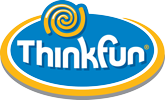
A Mission to Teach
Over 30 years ago, ThinkFun had one mission – to spark creativity, build problem-solving skills and inspire learning through play for children around the world. Today, our passion is even stronger. That’s why we offer free and fun downloadable logic games and brainteasers for every classroom, every teacher and every student.

Building Strategic Thinking
Want to improve your students’ strategic thinking and reasoning skills? It’s as easy as downloading, printing and letting them play these two-player games.
Click here for our free strategy games.

Brainteasers That Tease Their Brains
Brainteasers are the perfect way to stimulate young minds. Download these classic problem-solving games and watch your students’ minds at work.
Click here for our free brainteasers.

Make Math Fun
Addition, subtraction, division and even multiplication – our free, Math Dice teacher resources help teachers implement Math Dice games into their classroom.
Click here for free Math Dice resources.

Driving Logic Skills
One of our best-selling logic games ever can now be played in your classroom. Rush Hour teacher resources provide game ideas and instructions for any classroom.
Click here for free Rush Hour resources.

Thinky the Dragon
Awe students with Thinky the Dragon, an illusion that uses mathematical principals. Our free, downloadable template and videos are designed to teach through play.
Click here to download Thinky.
We want to hear from you
- Customer Feedback Survey
Microsites for our Games
- Robot Turtles
- International Customers
- Replacement Parts
- Instructions
- Media Center
- Education Blog
Subscribe for Updates

50 Simple STEM Activities using 15 Materials
I started doing simple STEM activities with my children at home, and students at school, a few years ago. They all loved it! They were always excited when I brought in materials and gave them a chance to create, problem solve and use their imagination. Because of the learning and engagement I saw every time we did one of this projects, STEM activities have become a regular part of my teaching program.
One of the great things about STEM activities is that they don’t have to be expensive. As a teacher I wanted to find a collection of STEM activities and challenges that didn’t require expensive materials or a lot of prep.
I created this collection of 50 Simple STEM Activities using only 15 materials. Most of the materials are supplies you likely already have on hand, such as paper, elastics and scissors.
STEM activities are a great way to develop Science, Technology, Engineering and Math skills. The more of these skills mixed into the activity, the better.
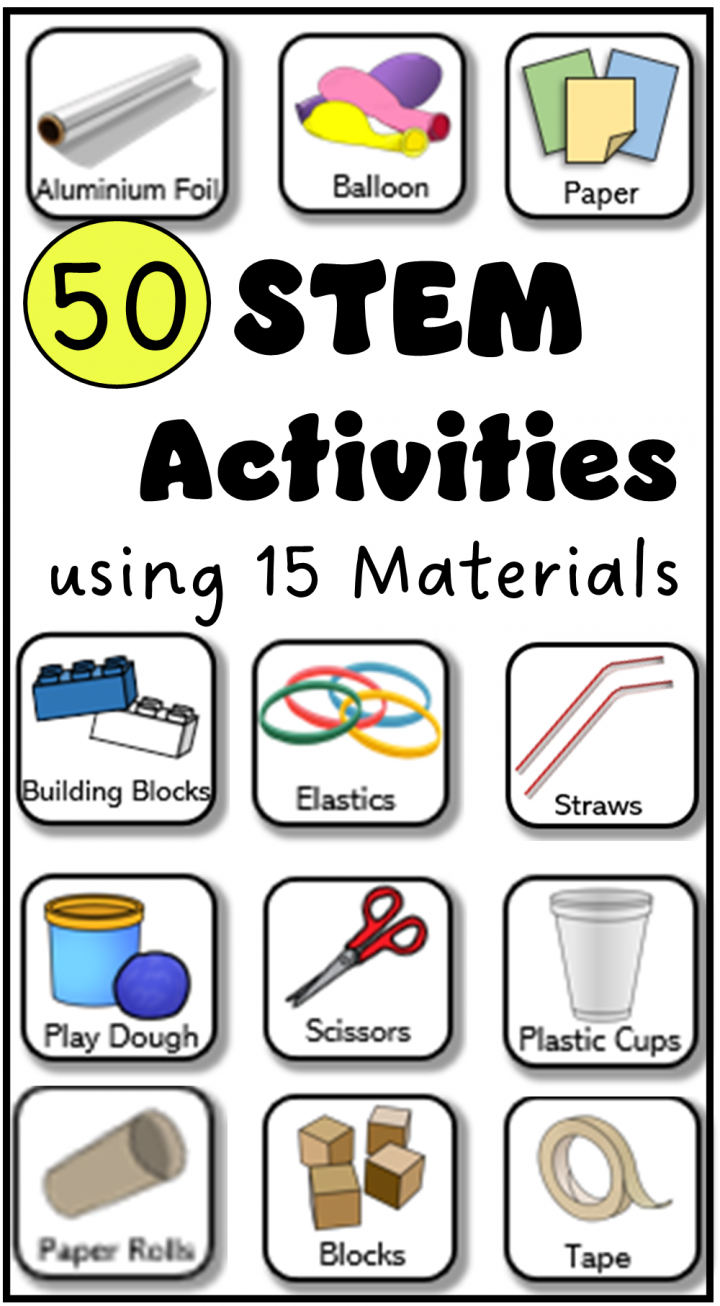
The collection of 50 STEM activities featured below are all hands-on building challenges. They each use, one or several of the 15 materials needed to do all of the challenges.
If you teach a STEM program, or simply want to bring more STEM to your child’s learning, this program is the perfect place to start. Print the activity cards, fill a bin with the 15 materials and you’re ready to go!
For more STEM activities, check out 10 Exciting STEM Activities with 10 Materials and the popular collection of 45+ STEM Challenge Ideas for Kids .
Simple STEM Activities Materials
There are 15 materials you will need in order to do the STEM challenges. The more of each material you can collect, the better. All of the 50 STEM activities in this program use some combination of the materials below. It may look like a lot of supplies, but keep in mind that it is for 50 different activities! You will need:
- Wooden blocks
- Construction paper
- Clothes pins
- Plastic cups
- Plastic building blocks
- Ping pong ball
- Large craft sticks (tongue depressors)
- Paper rolls
- Aluminum foil
Once materials are used for a STEM challenge, hang onto any left over supplies and any other supplies that can be reused for your next STEM challenge. Many of the challenges allow the materials to be recycled and used again and again.
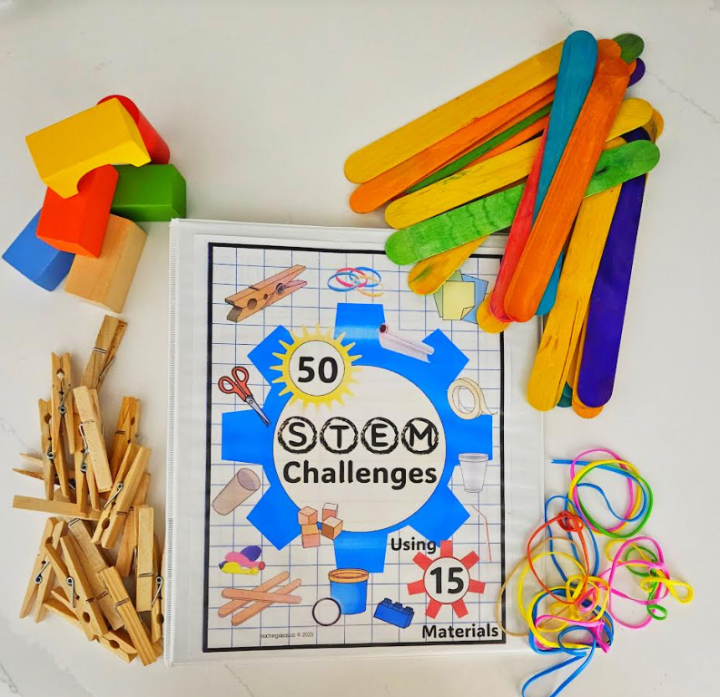
I’ve included an example below of a STEM bin I created in the past full of materials that I pulled from for each STEM challenge.
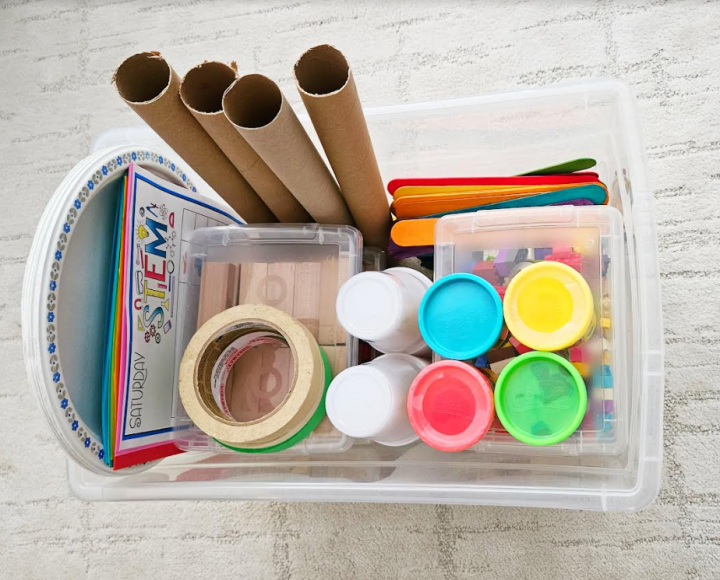
Once you have all of your materials collected, print the activity cards for the challenges.
Benefits of Simple STEM Activities
STEM activities are a great, and fun way to encourage essential skills. These challenges promote critical thinking, creativity, team work, and problem solving. Children learn that the process is as important, if not more important than the final result.
A key part of STEM challenges is trial and error. Encourage children to create and test their solution. If it doesn’t work, have them think about what does work, and what doesn’t and recreate based on what they have learned.
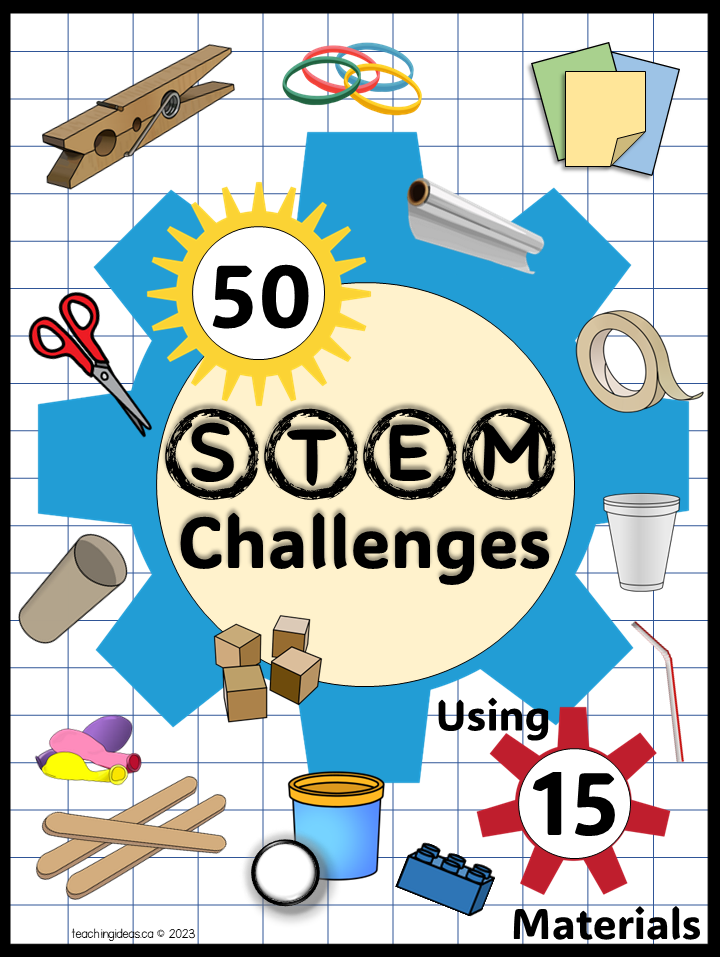
If there is an activity in this collection that you think is going to be too challenging for your group of children, you can always alter the activity, or add more supplies, to make the activity easier. However, avoid helping children as soon as they run into problem. Part of the learning comes when children get stuck. Give them the chance to learn from their mistakes.
STEM Activity Printables
There are 50 activity cards included in the product for the STEM challenges. They are included in the resource in different formats. Print the format that works best for you.
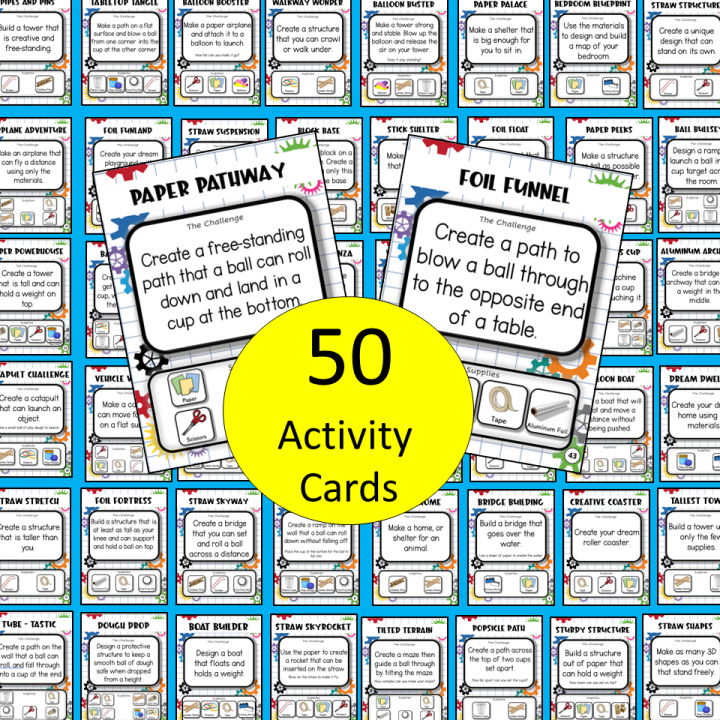
You can print the full page cards, half page or smaller (4 per page) activity cards. Each of the sets are included in black and white and color.
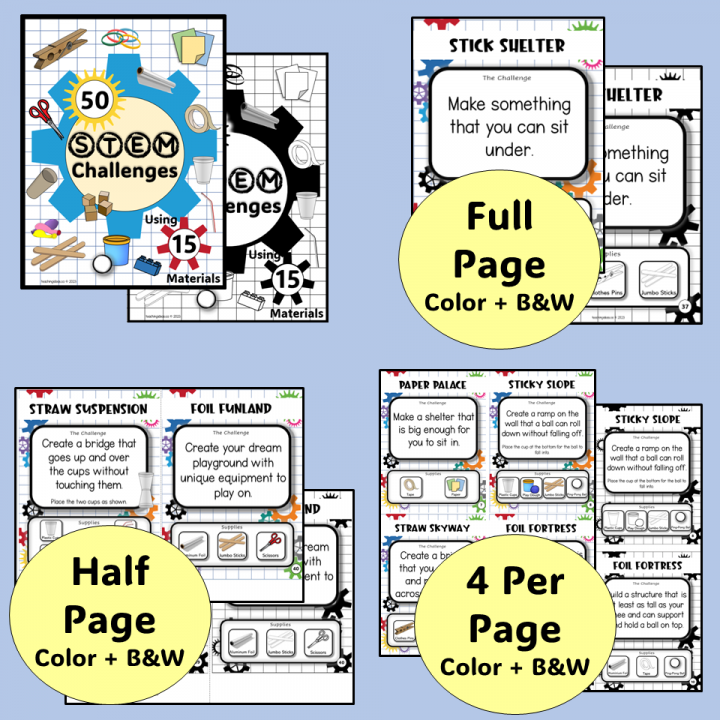
Beyond the activity cards, the resource also includes instructions on how to use the cards, a material list to help keep you organized as you collect materials, and a marking rubric if you are using the resource in a class setting.
Included in the printables, there is also information about STEM education, a student planning sheet, certificates for children upon completing STEM challenge(s) and a list of all of the activities.
If you are just starting your STEM program, these are great sheets and information to make setting up your program easy.
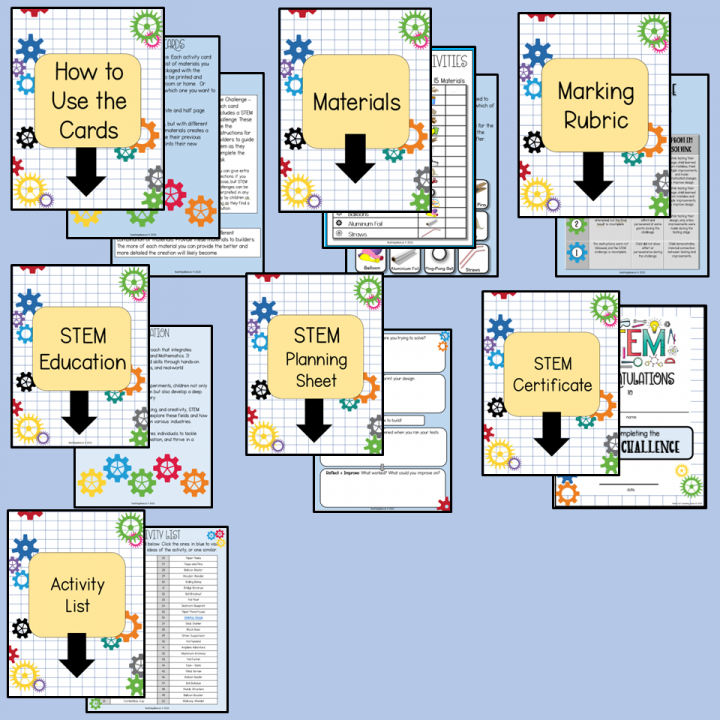
The title of the activity, the challenge as well as the materials needed are all listed on the activity card. A picture of the supplies needed is included to help children know what materials they can use for the challenge.
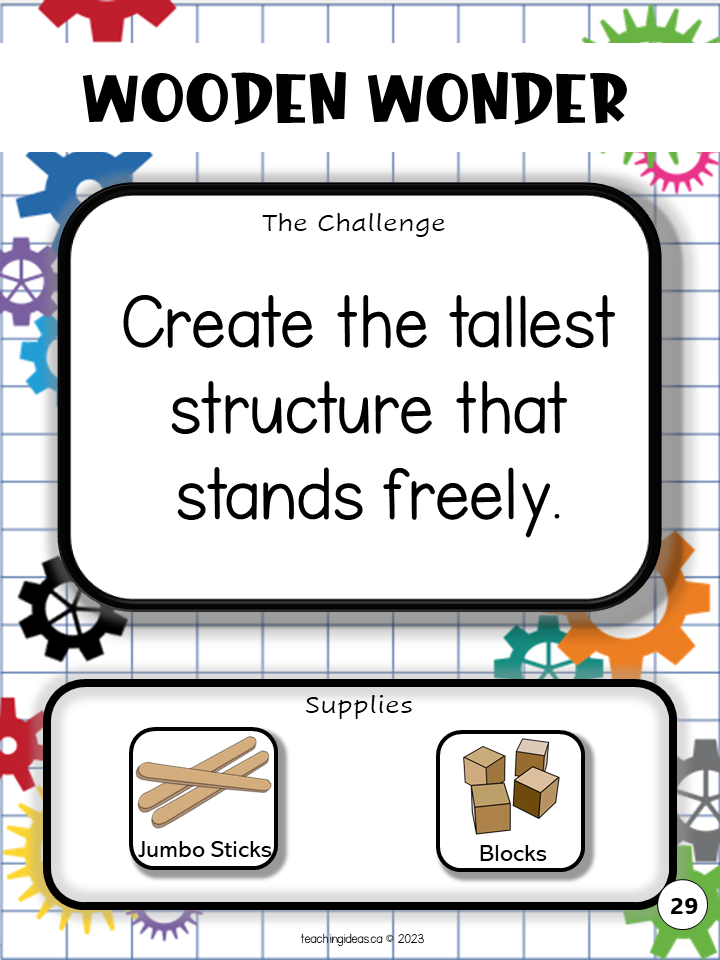
Preparing Your STEM Activities
Whether you use the activities to keep kids busy on rainy days or plan a weekly STEM challenge virtually all year round, this resource is easy to set up and, with the exception of collecting materials, there is no extra prep work involved.
There are lots of different ways you can set up your STEM program. You can print the cover page with the activity cards to create individual packages for children to work through at their own pace, as one option.
Since I have been doing STEM activities in my classroom for several years, I have found that they make great centers!
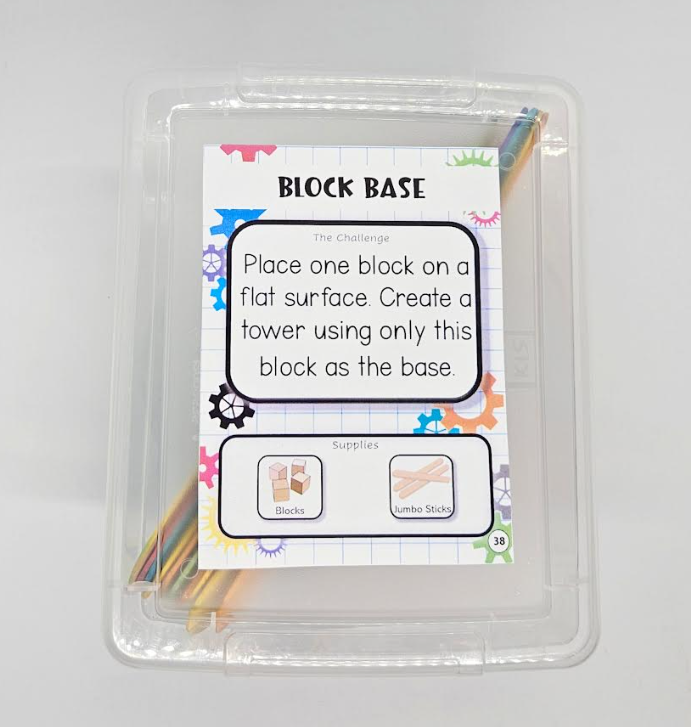
Grab a collection of clear bins, print an activity card and attach the card to the top. Inside the bin, include the materials children need for the challenge.
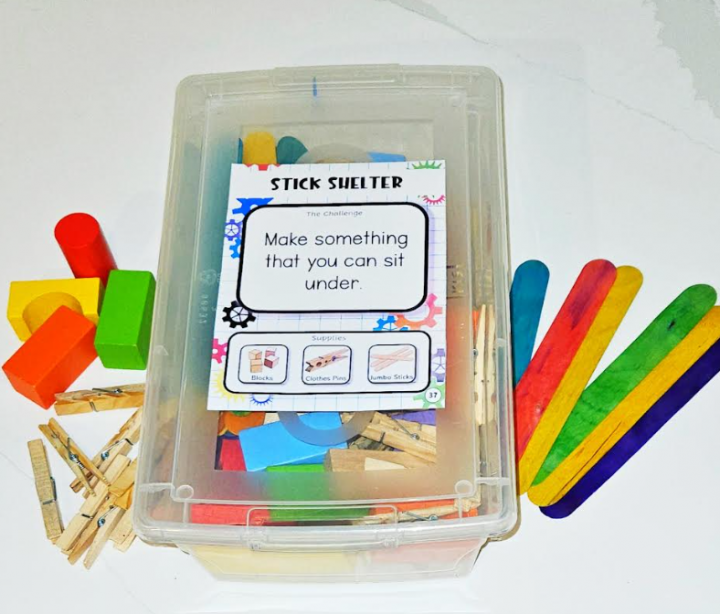
For older children, you can print the smaller activity cards and attach them all with a ring. I laminated my set so that I can use them for many years. Children can choose an activity, and grab the supplies needed and begin creating.
Another way to use the activity cards is to print them and put them in a bag along with the supplies needed for the challenge. These make great kits, or gifts, to give to children to create with at home.
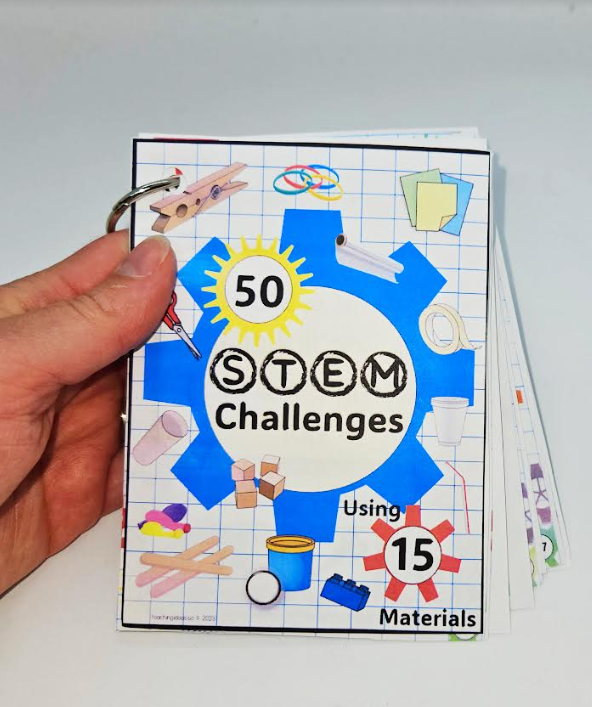
Get your STEM program ready and prepared quickly and easily with the 50 simple STEM activities shown above.
Get all 50 of the activity cards and the other pages featured above in the resource. Click for more information. The program is on sale!
Click the image for more information.
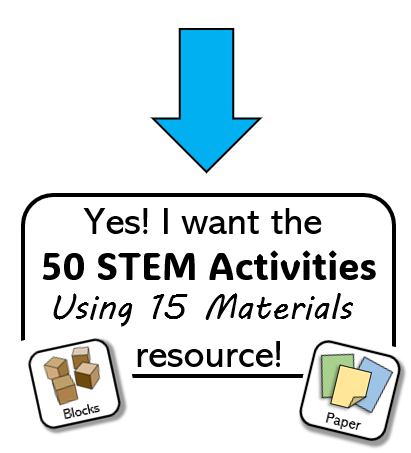
Free Resource Library
Join Hands-On Teaching Ideas to learn about my latest products, promotions and activity ideas. When you subscribe you will also gain access to the Free Resource Library filled with over 100 resources that you can download and use today.
Subscribing is free. Once you subscribe, you will receive a confirmation email. After you confirm you will receive a link to the library.
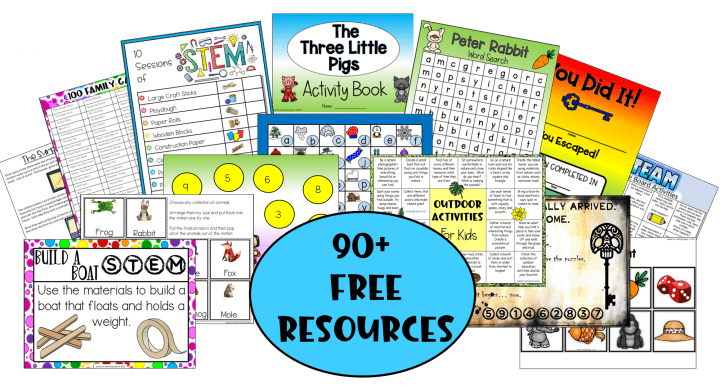
Leave a Reply Cancel Reply
Your email address will not be published.

- Math for Kids
- Parenting Resources
- ELA for Kids
- Teaching Resources

11 Best Multiplication Apps for Kids
How to Teach Number Formation in 5 Easy Steps
13 Best Resources for Math Videos for Kids: Math Made Fun
How to Teach Skip Counting to Kids in 9 Easy Steps
10 Best Math Intervention Strategies for Struggling Students
6 Best Alternatives to Public Schooling: A Guide for Parents
How to Cope With Test Anxiety in 12 Easy Ways
Developmental Milestones for 4 Year Olds: The Ultimate Guide
Simple & Stress-Free After School Schedule for Kids of All Ages
When Do Kids Start Preschool: Age & Readiness Skills
12 Best Ways to Teach Rhyming Words to Kids
How to Teach Letter Sound in 6 Easy Steps
How to Teach Letter Formation to Kids in 9 Easy Steps
15 Best Literacy Activities for Preschoolers in 2024
12 Best Poems About Teachers Who Change Lives
10 Best Game-Based Learning Platforms for Kids
60 Fun Animal Facts for Kids
12 Best Behavior Management Techniques for the Classroom
13 Best Online Teaching Tips for Teachers
How to Teach Kids to Write in 9 Easy Steps

1. SplashLearn
3. coding adventure, 4. national geographic kids, 5. brainpop, 6. pbs kids, 7. adventure academy, 8. lightbot, 9. duolingo, 10. funbrain.
According to a survey, a significant 88% of teachers who use digital games in their classrooms report that it increases student engagement. This statistic highlights the effectiveness of game-based learning platforms in making education enjoyable and engaging. In this blog, we will explore the top 10 game-based learning platforms that combine fun with learning to enhance the educational experience for kids.
SplashLearn: Most Comprehensive Learning Program for PreK-5

SplashLearn inspires lifelong curiosity with its game-based PreK-5 learning program loved by over 40 million children. With over 4,000 fun games and activities, it’s the perfect balance of learning and play for your little one.
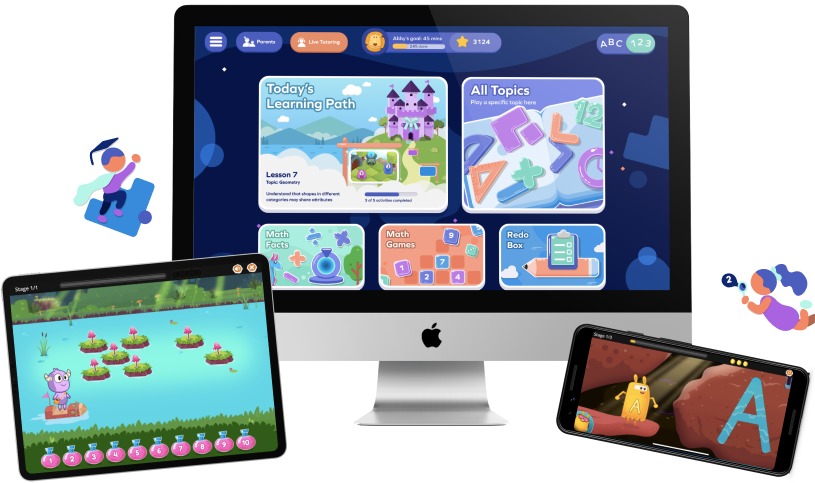
Who is it for: Pre-K to Grade 5
Subjects: Math , ELA , Early Skills
SplashLearn is one of the best game-based learning platforms for kids that excels in making foundational math, and reading skills engaging for kids. It offers interactive games that not only cover essential academic topics but also enhance early skills such as critical thinking, logic, problem-solving, creativity, and motor skills .
Each game is designed to adapt to a child’s learning pace, ensuring they are both challenged and adequately supported. This adaptability helps keep the learning process dynamic and aligned with each student’s needs, promoting a deeper understanding of the subjects.
Why Choose SplashLearn?
- Comprehensive Curriculum: This game-based curriculum covers a wide array of essential early education topics:
- Math: Engages children with topics such as number sense , addition , subtraction , shapes , division , fractions , money , measurement , algebra , decimals , and more.
- Reading Skills: Develops crucial capabilities in reading , writing , grammar, vocabulary, and spelling.
- Early Skills: Introduces children to general knowledge , art & creativity , critical thinking, and motor skills.
- Flexible and Adaptive Learning Path: SplashLearn’s learning path is highly adaptable, allowing it to perfectly align with each student’s individual learning pace and needs.
- Extensive Resource Library: With a vast collection of over 5000 ELA and math games , SplashLearn ensures that learners always have fresh and exciting challenges available.
- Rewards and Motivation: To further engage students, SplashLearn incorporates rewards like coins and access to non-curricular games such as puzzles and quizzes. These games sharpen critical thinking skills and provide a delightful break from traditional learning.
- Multiplayer Games: The platform includes multiplayer games that allow children to compete and cooperate with peers, adding a social element to learning.
- Progress Tracking and Insights : Provides detailed feedback on a child’s progress, helping parents and educators make informed decisions about the next steps in their educational journey.
- Cost-Effective with Free Trial: Offers a free trial period before committing to a subscription, and it is completely free for teachers.
Devices: Accessible on the web , iOS , and Android .
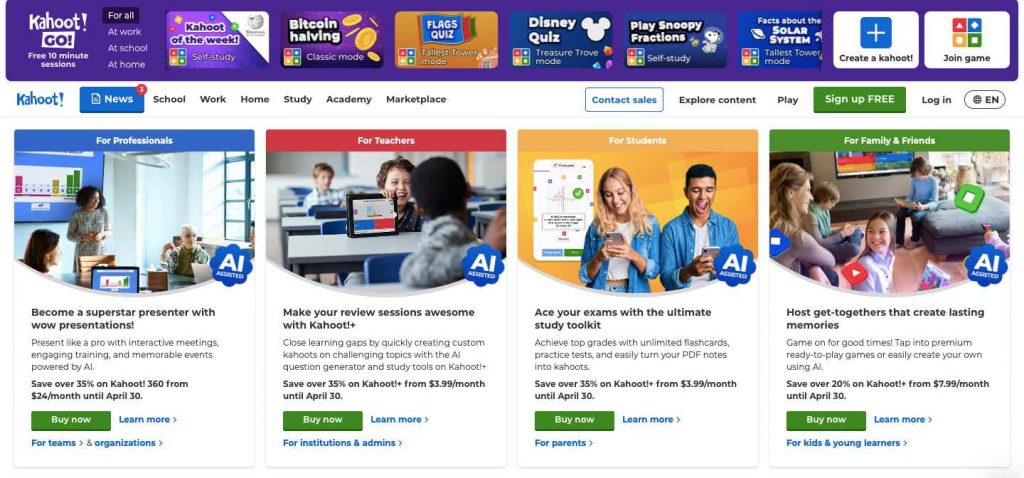
Who is it for: Grades K-12
Subjects: Wide range, including Math, Science, Languages, and Social Studies
Kahoot! is a gamified learning platform that turns quiz-based learning into a fun competition. Teachers can create their own quizzes or choose from millions shared by others, which cover a broad range of subjects. The interactive, game-like format encourages active participation and can be used to review material or introduce new concepts. Its engaging, fast-paced nature makes it a popular choice in classrooms worldwide.
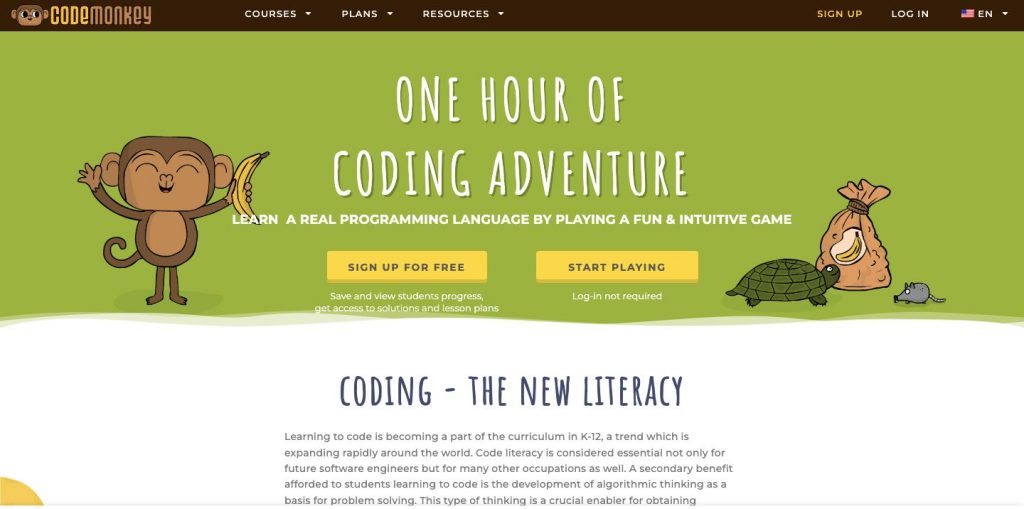
Who is it for: Grades 2-9
Subjects: Computer Programming
Coding Adventure is a standout among gamified apps for education designed to teach kids programming through a series of fun and challenging games. The platform uses a story-based approach, where students help characters solve problems by writing code. It covers basic to advanced programming concepts, helping build logical thinking and problem-solving skills. Features include personalized learning paths and real-time feedback.
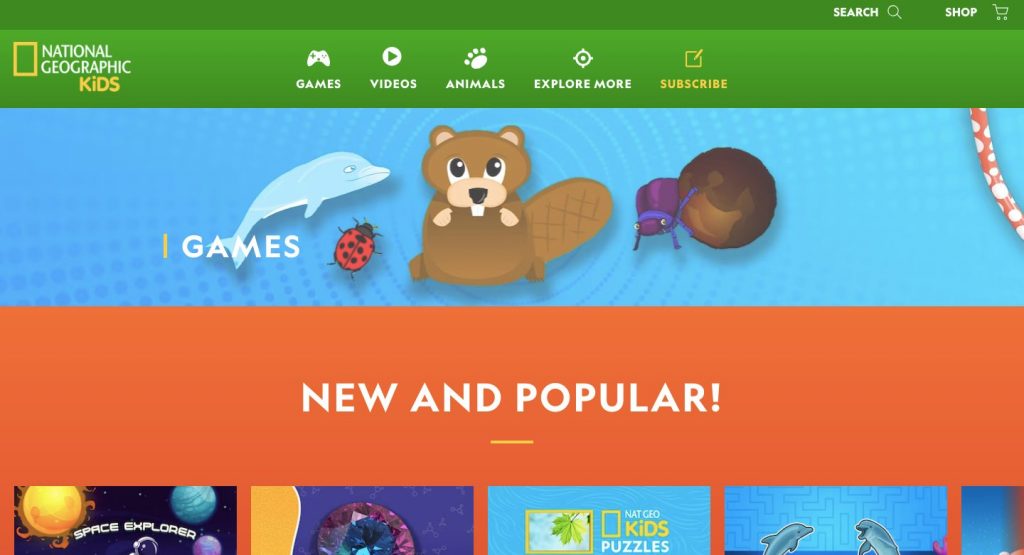
Who is it for: Grades K-6
Subjects: Geography, Science, Social Studies
National Geographic Kids is one of the most fun game-based learning platforms for students that offers a wealth of resources like videos, images, and games focused on the natural world. The content is rich with real-world geographical and scientific information that engages young learners’ curiosity about animals, ecosystems, cultures, and more. The platform is educational yet entertaining, making learning about the Earth enjoyable and memorable.
Devices: Accessible on the web .
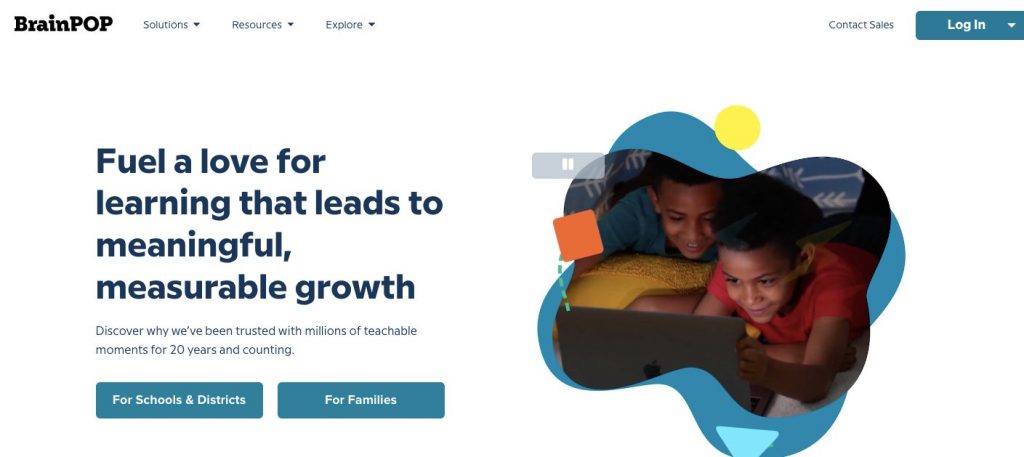
Who is it for: Grades 3-12
Subjects: Science, Math, Social Studies, English, Health, Arts, and Technology
BrainPOP features a variety of animated movies, quizzes, and activities designed to make complex subjects understandable for kids. The content is presented by the engaging robot character, Moby, and his friends. It’s widely used to introduce new topics and deepen knowledge through interactive tools and tailored learning paths. BrainPOP also includes resources for teachers and parents to track learning outcomes.
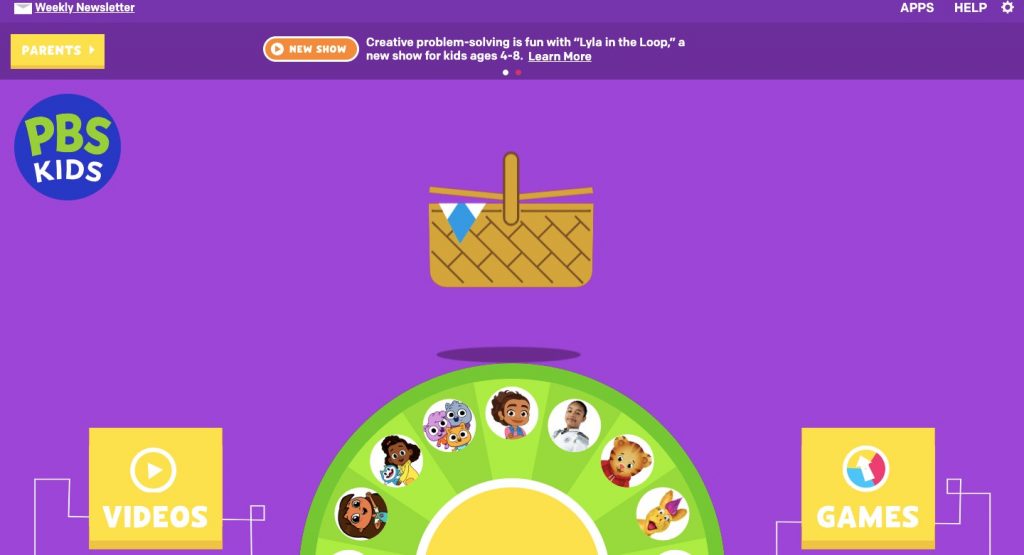
Who is it for: Pre-K to Grade 3
Subjects: Reading, Math, Science, and Social Skills
PBS Kids offers a range of educational games and videos connected to PBS’s children’s television programming. The platform includes characters from beloved shows like ‘Arthur’, ‘Curious George’, and ‘Sesame Street’, making learning familiar and fun. The educational content is developed by experts to enhance children’s creativity and critical thinking.
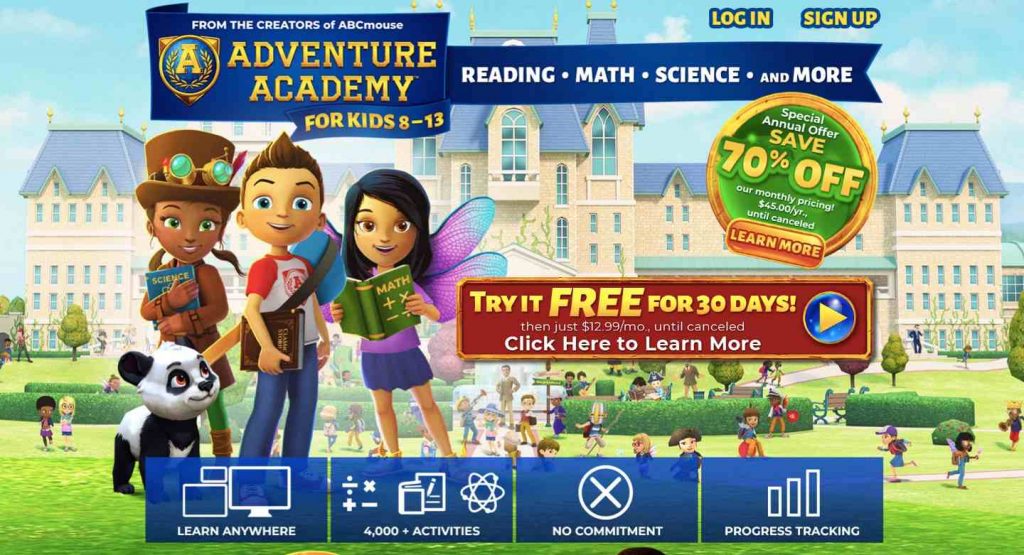
Who is it for: Grades 3-8
Subjects: Math, Reading, Science, and Social Studies
Adventure Academy is a virtual world where kids can explore a wide range of academic subjects through interactive quests and activities. This gamified learning platform combines high-quality educational content with an engaging, multiplayer online experience. It allows children to learn at their own pace in an immersive, adventure-driven environment, which helps to build essential skills in a context that feels more like play than work.
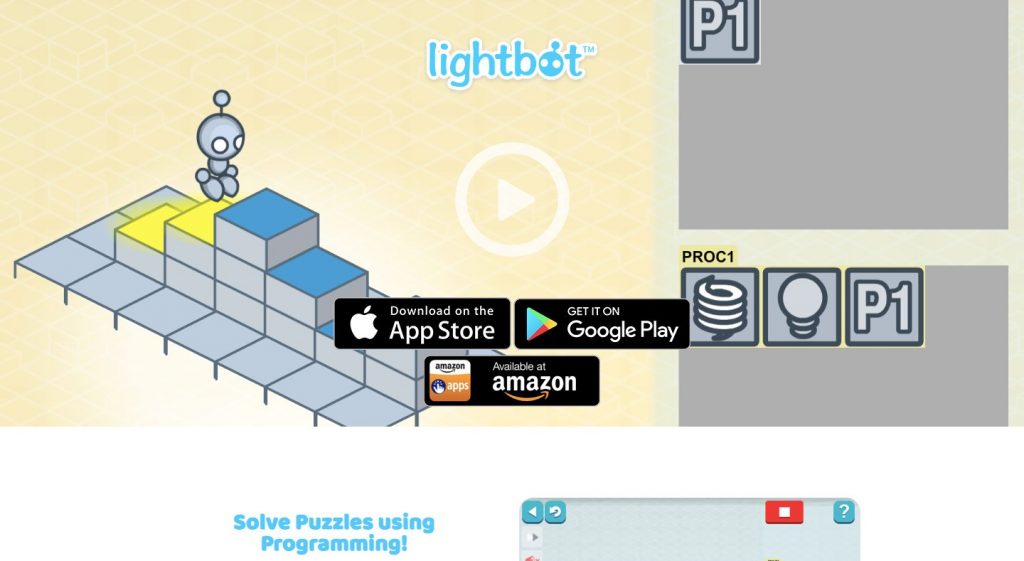
Who is it for: Grades 2-8
Subjects: Computer Science, Programming
Lightbot is one of the best game-based learning apps that introduces children to programming concepts through puzzle-solving gameplay. It teaches basic programming logic, such as sequencing, overloops, and conditionals, all without typing or complex code. By guiding a robot to light up tiles and solve levels, children develop critical thinking and problem-solving skills in a fun, engaging way.
Devices: Accessible on the web , iOS , and Amazon .

Who is it for: All ages (including Grades K-12)
Subjects: Languages
Duolingo is a widely recognized gamified learning platform that teaches languages through short, interactive lessons. The app uses a combination of listening, speaking, reading, and writing exercises to enhance language learning. Its strength lies in its adaptive learning technology, which tailors lessons to the user’s pace and learning style , making language learning accessible and effective for everyone.
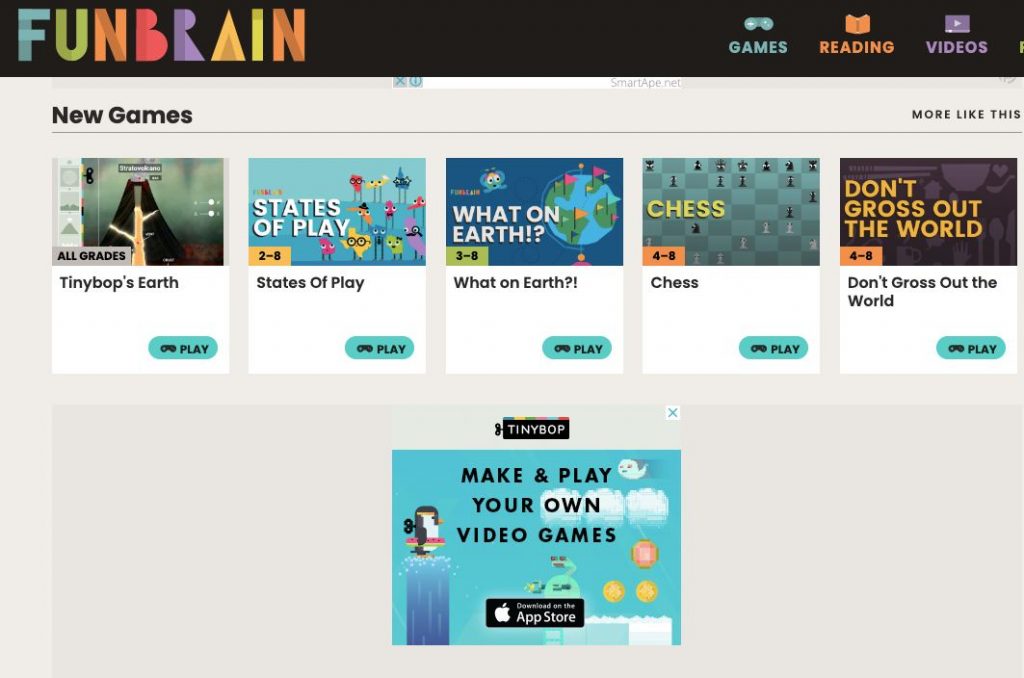
Who is it for: Pre-K to Grade 8
Subjects : Math, Reading, Literacy
Funbrain is a game-based learning platform that offers a variety of educational games, books, comics, and videos designed to develop skills in math, reading, and literacy. Each activity is crafted to be fun and engaging while providing valuable educational content that aligns with curriculum standards. Funbrain’s friendly and intuitive interface ensures that kids enjoy learning and gain confidence in their abilities through interactive play.
Devices: Accessible on the web , and iOS .
Why Choose Game-Based Learning for Your Kids?
- Games naturally capture children’s interest, keeping them engaged longer and making learning feel like play.
- Interactive elements in games encourage active participation, which can lead to deeper understanding and retention of information.
- Most game-based learning platforms provide instant feedback, helping children understand their mistakes and learn from them quickly.
- Many platforms adjust the difficulty levels based on the child’s performance, ensuring they are neither too easy nor frustratingly hard.
- Beyond academic knowledge, these games help develop critical thinking, problem-solving, and decision-making skills.
- Games often include elements like points, levels, and badges that motivate children to set goals and achieve them, enhancing their learning experience.
Game-based learning platforms offer a unique and effective way to engage children in their education. By combining fun with learning, these platforms help students develop a love for knowledge and a deeper understanding of various subjects.
Frequently Asked Questions (FAQs)
What are the two types of game-based learning.
The two types of game-based learning are content-embedded games, where learning objectives are integral to the game mechanics, and content-adjacent games, where the game indirectly supports learning through engagement and critical thinking skills enhancement.
Which is the best educational game site for kids?
One of the best educational game sites for kids is SplashLearn. It not only teachers math and reading but also early skills through interactive games.
What is the game-based learning method of teaching?
The game-based learning method of teaching involves using games to deliver educational content, helping students learn and practice new skills through gameplay. This approach makes learning interactive, enjoyable, and often collaborative, enhancing motivation and retention of information.
How do you implement game-based learning in the classroom?
To implement game-based learning in the classroom, educators can start by identifying suitable games that align with their educational goals . They should integrate these games into the curriculum as supplemental tools, set clear objectives for what students should achieve through gameplay, and provide guidance and support as students engage with the games.
- Pre-Kindergarten
- Kindergarten
Most Popular

15 Best Report Card Comments Samples

117 Best Riddles for Kids (With Answers)

40 Best Good Vibes Quotes to Brighten Your Day
Recent posts.

What is Eclectic Homeschooling & How To Start [Full Guide]
Math & ela | prek to grade 5, kids see fun., you see real learning outcomes..
Watch your kids fall in love with math & reading through our scientifically designed curriculum.
Parents, try for free Teachers, use for free

- Games for Kids
- Worksheets for Kids
- Math Worksheets
- ELA Worksheets
- Math Vocabulary
- Number Games
- Addition Games
- Subtraction Games
- Multiplication Games
- Division Games
- Addition Worksheets
- Subtraction Worksheets
- Multiplication Worksheets
- Division Worksheets
- Times Tables Worksheets
- Reading Games
- Writing Games
- Phonics Games
- Sight Words Games
- Letter Tracing Games
- Reading Worksheets
- Writing Worksheets
- Phonics Worksheets
- Sight Words Worksheets
- Letter Tracing Worksheets
- Prime Number
- Order of Operations
- Long multiplication
- Place value
- Parallelogram
- SplashLearn Success Stories
- SplashLearn Apps
- [email protected]
© Copyright - SplashLearn

Make learning a game for your students
Unlock endless learning fun with 14,000+ games & activities, 450+ lesson plans, and more—free forever.
Teachers, Use for Free

Can Storytelling and Stuffed Animals Boost Your Child’s Emotional Intelligence and Creativity?
P arents are constantly trying to find engaging ways to nurture growth and development in their children. Among the treasure trove of educational toys and activities available, storytelling and stuffed animals hold a unique place. They are not just tools for entertainment but also potent aids in developing emotional intelligence and creativity in young minds. How can these seemingly simple activities make a significant impact? Let's evaluate six ways through which the art of storytelling and the charm of stuffed animals, like a Dragon lovey, can enhance these essential skills in children.
Building Empathy Through Character Exploration
When children listen to stories, they are plunged into diverse worlds, far beyond their immediate experiences. These narratives, filled with characters from various backgrounds and with different personalities, offer children a chance to understand and empathize with situations unlike their own.
For instance, when a child hears a story about a lion who is misunderstood by his peers, they learn to feel the lion’s sadness and isolation. This vicarious experience builds empathy. Pairing these stories with a stuffed animal that represents a character from the story can deepen this connection. Holding a lion plush while hearing about the character's trials and triumphs can make the emotional experience more tangible, thereby enhancing empathy.
Enhancing Problem-Solving Skills and Executive Function
Stories are more than just sequential events; they are problems to be solved. Whether it's figuring out how to save a magical kingdom or helping a lost puppy find its way home, each story presents a problem and leads children through the maze of solving it.
This process is crucial in building strong executive function as it teaches children to plan, organize, and execute solutions. When a child plays out these stories with their stuffed animals, they are not just playing; they are testing out scenarios that teach them to navigate challenges. This playtime becomes a safe and controlled environment for them to explore the consequences of different actions and learn from them.
Encouraging Expression and Language Skills
Engaging with stories and stuffed animals provides children with a playground for linguistic exploration. As children narrate what their stuffed animal might be feeling or thinking, they practice putting their thoughts into words, often mimicking the narrative style of the stories they’ve heard.
This act of storytelling helps in expanding their vocabulary and refining their language skills, which are critical components of emotional intelligence. It enables children to express themselves clearly and confidently in social situations, thereby improving their interactions and relationships.
Fostering Creativity With a Dragon Lovey and Themed Stories
Creativity is not just about producing art; it’s about thinking in new and innovative ways. One of the most effective tools to stimulate this skill is through themed storytelling combined with a symbolic stuffed animal. Imagine a child being given a Dragon lovey (a.k.a Dragon “snuggler” or Dragon “kin”) alongside a book that narrates tales of this character named Dragon. This character will have imaginative adventures, overcome obstacles, and learn from various fantastical characters.
As the child engages with the cuddly companion, they are not only hearing about its exploits but also encouraged to imagine their own stories, expanding the universe of the book. This combination of storytelling and imaginative play is powerful in nurturing a child’s creative thought processes, as well as their ability to connect emotionally with others and their own inner experiences.
Understanding Emotions Through Role-Play
Stuffed animals like a Dragon lovey can serve as proxies for children to understand and manage their emotions. When children role-play different scenarios using their stuffed animals, they practice recognizing and naming emotions. For example, they might pretend that the Dragon lovey is scared of a storm. They can then comfort Dragon, simultaneously learning ways to soothe themselves in similar situations.
This form of play teaches children about the nuances of emotions and helps them develop strategies for emotional regulation. By acting out different roles, children gain insight into their own feelings and the feelings of others, which is a critical aspect of emotional intelligence.
Cultivating Social Skills Through Shared Narratives
Finally, storytelling and stuffed animals can be a communal activity that fosters social skills. When children share stories or play together with stuffed animals, they learn to take turns , listen actively, and collaborate towards common goals, such as completing a story or building a play scene.
This interaction enhances their ability to cooperate and communicate effectively with others, essential skills in building strong interpersonal relationships. Through shared narratives, children also learn to appreciate different perspectives, fostering an inclusive attitude and understanding of diversity.
The post Can Storytelling and Stuffed Animals Boost Your Child’s Emotional Intelligence and Creativity? appeared first on Sunny Sweet Days .

Numbers, Facts and Trends Shaping Your World
Read our research on:
Full Topic List
Regions & Countries
- Publications
- Our Methods
- Short Reads
- Tools & Resources
Read Our Research On:
Teens and Video Games Today
85% of u.s. teens say they play video games, and about four-in-ten do so daily. teens see both positive and negative sides of video games – from problem-solving and making friends to harassment and sleep loss, table of contents.
- Who plays video games?
- How often do teens play video games?
- What devices do teens play video games on?
- Social media use among gamers
- Teen views on how much they play video games and efforts to cut back
- Are teens social with others through video games?
- Do teens think video games positively or negatively impact their lives?
- Why do teens play video games?
- Bullying and violence in video games
- Appendix A: Detailed charts
- Acknowledgments
- Methodology
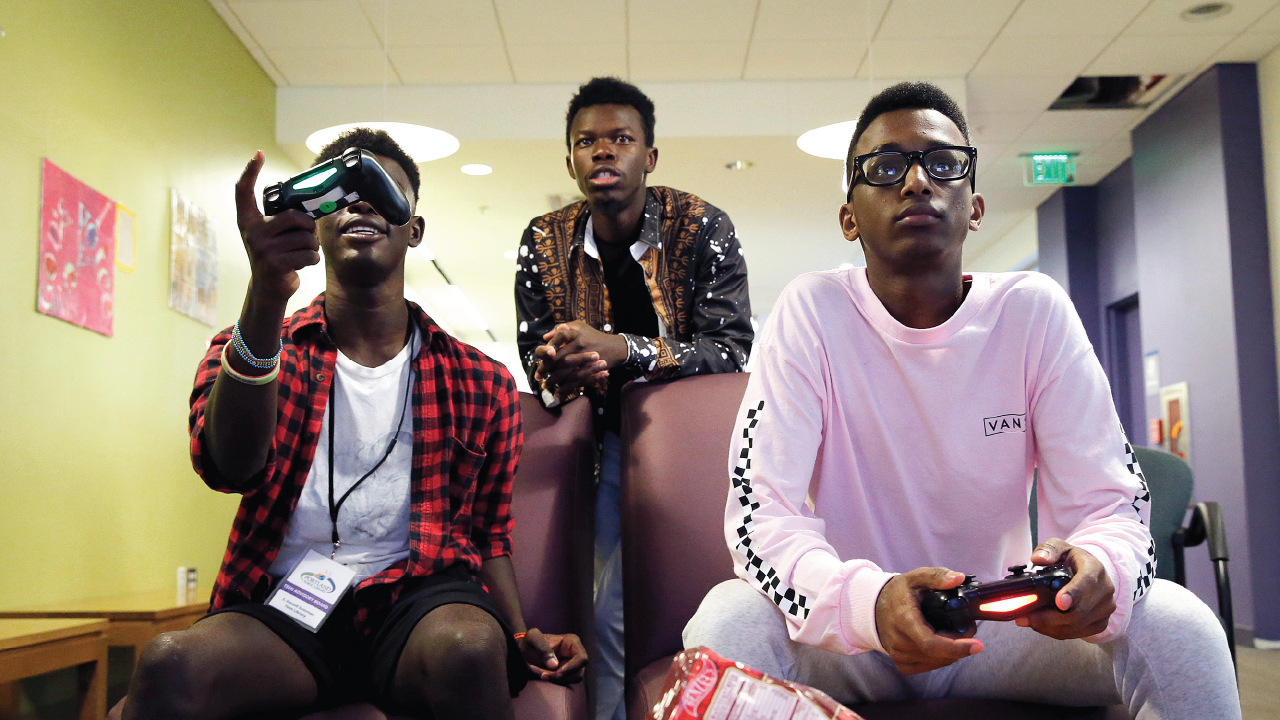
Pew Research Center conducted this analysis to better understand teens’ use of and experiences with video games.
The Center conducted an online survey of 1,453 U.S. teens from Sept. 26 to Oct. 23, 2023, through Ipsos. Ipsos recruited the teens via their parents, who were part of its KnowledgePanel . The KnowledgePanel is a probability-based web panel recruited primarily through national, random sampling of residential addresses. The survey was weighted to be representative of U.S. teens ages 13 to 17 who live with their parents by age, gender, race and ethnicity, household income, and other categories.
This research was reviewed and approved by an external institutional review board (IRB), Advarra, an independent committee of experts specializing in helping to protect the rights of research participants.
Here are the questions used for this analysis , along with responses, and its methodology .
There are long-standing debates about the impact of video games on youth. Some credit them for helping young people form friendships and teaching them about teamwork and problem-solving . Others say video games expose teenagers to violent content, negatively impact their sleep and can even lead to addiction.
With this in mind, Pew Research Center surveyed 1,423 U.S. teens ages 13 to 17 about their own video game habits – from how often they play to the friends they’ve made and whether it gets in the way of them doing well in school or getting a good night’s sleep. 1
Key findings from the survey
- Video games as a part of daily teen life: 85% of U.S. teens report playing video games, and 41% say they play them at least once a day. Four-in-ten identify as a gamer.
- Gaming as a social experience: 72% of teens who play video games say that a reason why they play them is to spend time with others. And some have even made a friend online from playing them – 47% of teen video game players say they’ve done this.
- Helpful with problem-solving, less so for sleep: Over half of teens who play video games say it has helped their problem-solving skills, but 41% also say it has hurt their sleep.
- Bullying is a problem: 80% of all teens think harassment over video games is a problem for people their age. And 41% of those who play them say they’ve been called an offensive name when playing.
- Boys’ and girls’ experiences differ: Most teen boys and girls play video games, but larger shares of boys identify as gamers (62% vs. 17%) and play every day (61% vs. 22%). Boys who play them are also more likely to experience positive things from it, like making friends, and more troubling things like harassment.
Jump to read about: Who plays video games | Socializing over video games | Views about video games’ impact | Harassment and violence in video games
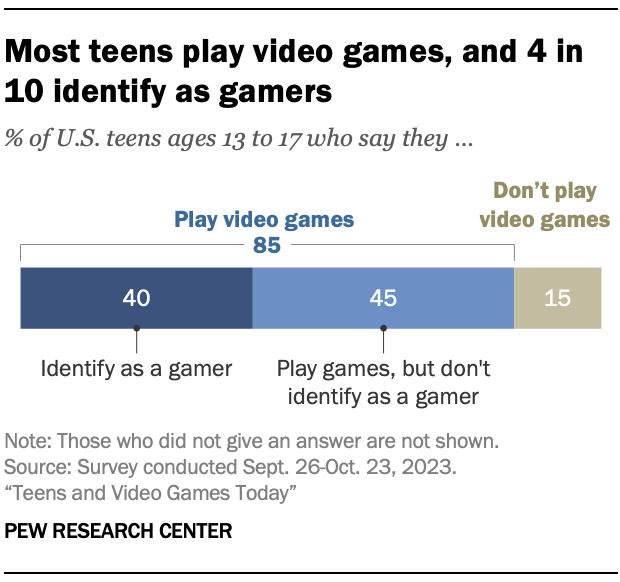
Playing video games is widespread among teens. The vast majority of U.S. teens (85%) say they play them. Just 15% say they never do, according to the survey conducted Sept. 26-Oct. 23, 2023.
In addition to asking whether teens play video games, we also wanted to learn whether they consider themselves gamers. Overall, four-in-ten U.S. teens think of themselves as gamers. Just under half of teens (45%) play video games but do not think of themselves as gamers.
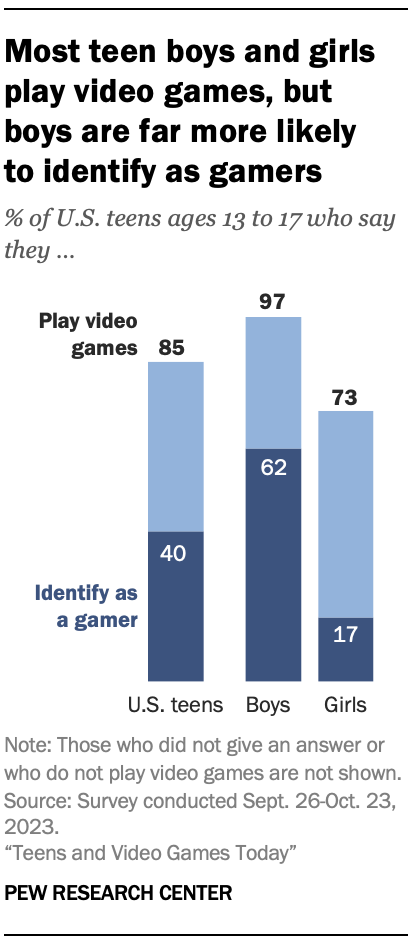
Nearly all boys (97%) say they play video games, compared with about three-quarters of teen girls. There is a substantial gap by gender in whether teens identify as gamers: 62% of teen boys do, compared with 17% of girls. 2
By gender and age
Younger teen girls are more likely than older girls to say they play video games: 81% of girls ages 13 to 14 compared with 67% of those ages 15 to 17. But among boys, nearly all play video games regardless of age.
Similar shares of teens play video games across different racial and ethnic groups and among those who live in households with different annual incomes. Go to Appendix A for more detail on which teens play video games and which teens identify as gamers.
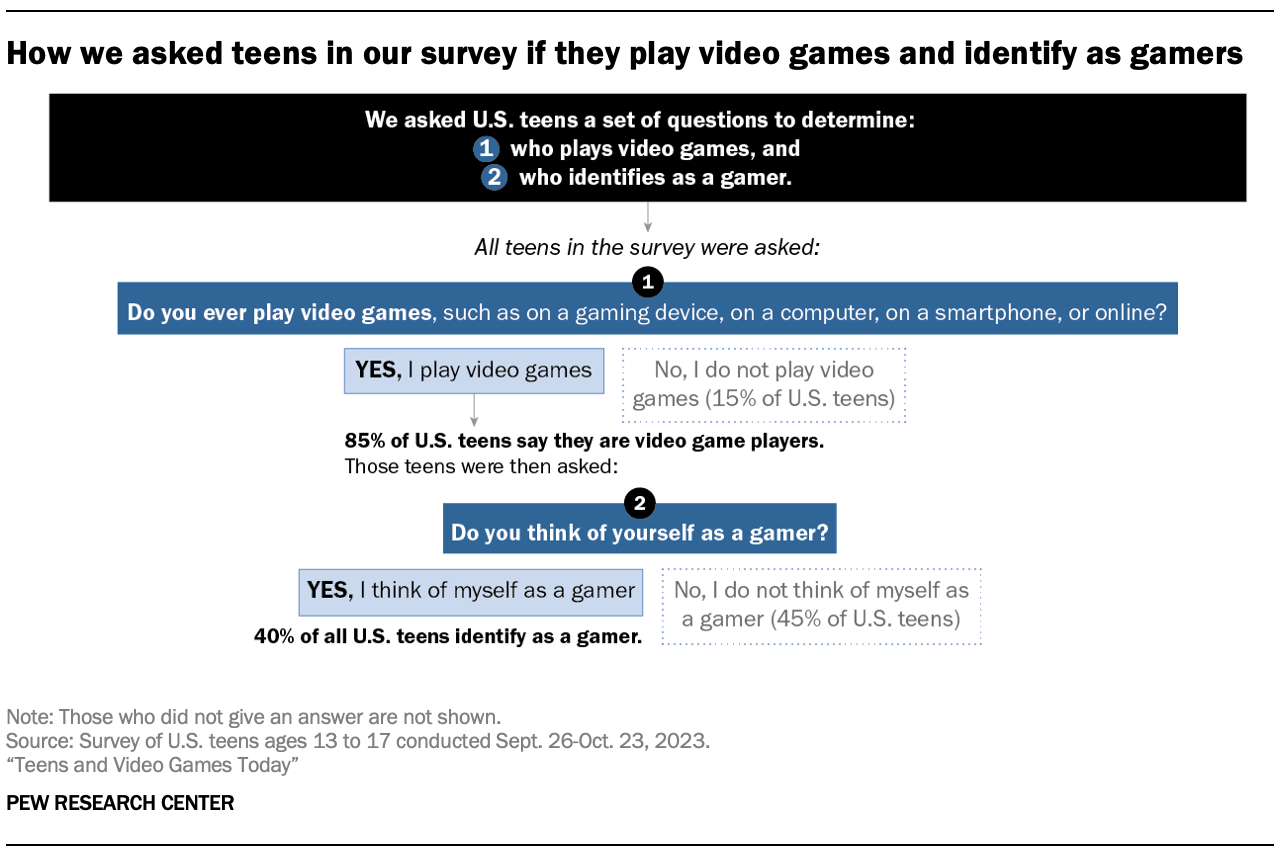
We also asked teens how often they play video games. About four-in-ten U.S. teens say they play video games daily, including 23% who do so several times a day.
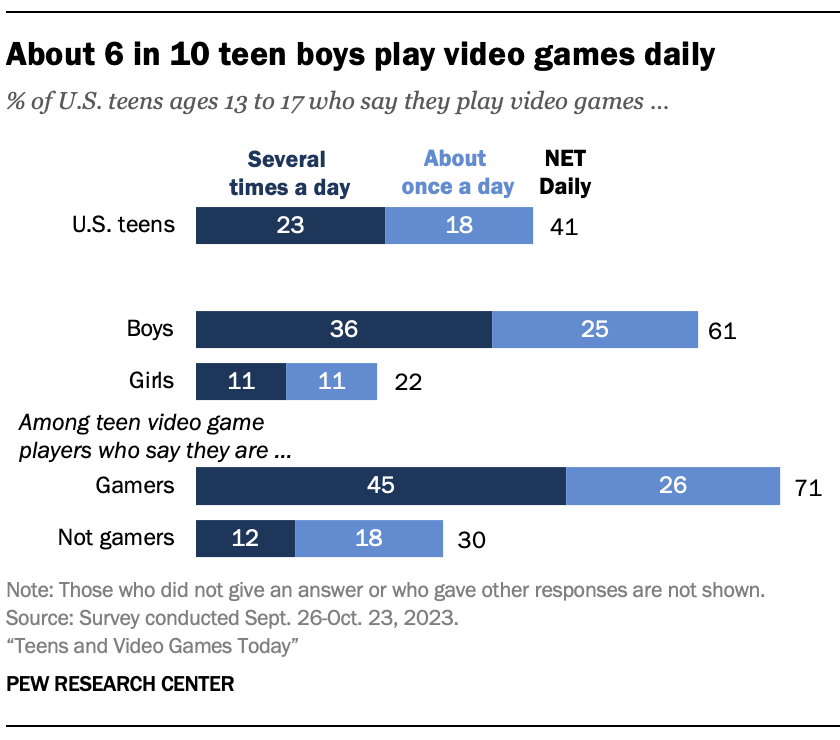
Another 22% say they play several times a week, while 21% play them about once a week or less.
Teen boys are far more likely than girls to say they play video games daily (61% vs. 22%). They are also much more likely to say they play them several times a day (36% vs. 11%).
By whether someone identifies as a gamer
About seven-in-ten teens who identify as gamers (71%) say they play video games daily. This drops to 30% among those who play them but aren’t gamers.
By household income
Roughly half of teens living in households with an annual income of less than $30,000 (53%) say they play video games at least daily. This is higher than those in households with an annual income of $30,000 to $74,999 (42%) and $75,000 or more (39%).
Go to Appendix A to see more details about who plays video games and identifies as a gamer by gender, age, race and ethnicity, and household income.
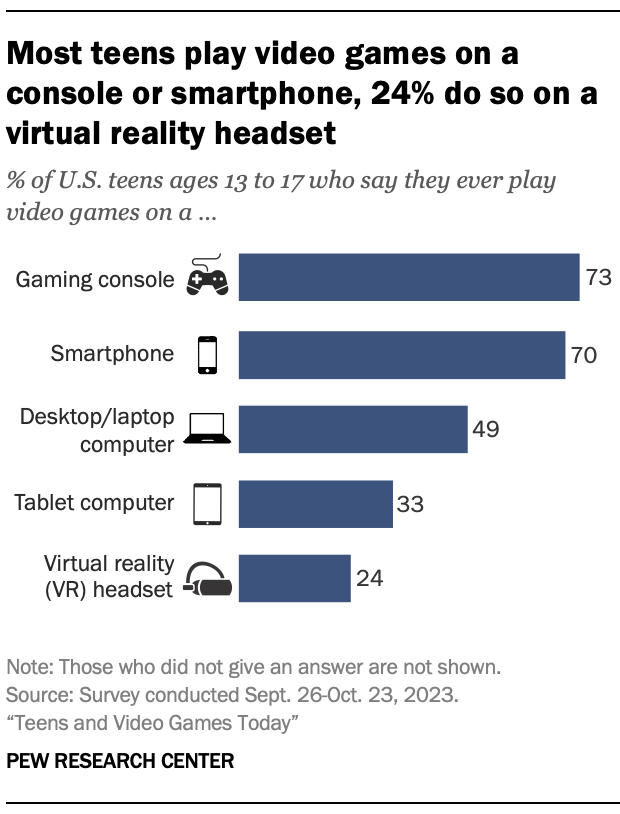
Most teens play video games on a gaming console or a smartphone. When asked about five devices, most teens report playing video games on a gaming console (73%), such as PlayStation, Switch or Xbox. And 70% do so on a smartphone. Fewer – though still sizable shares – play them on each of the following:
- 49% say they play them on a desktop or laptop computer
- 33% do so on a tablet
- 24% play them on a virtual reality (VR) headset such as Oculus, Meta Quest or PlayStation VR
Many teens play video games on multiple devices. About a quarter of teens (27%) do so on at least four of the five devices asked about, and about half (49%) play on two or three of them. Just 8% play video games on one device.
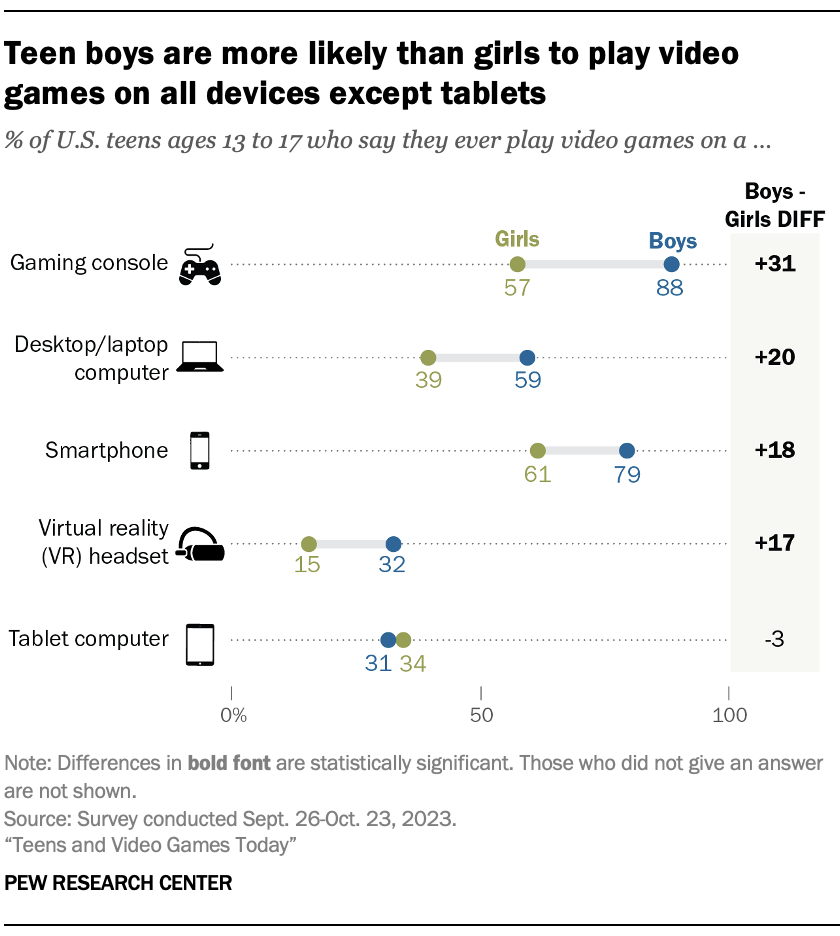
Teen boys are more likely than girls to play video games on four of the five devices asked about – all expect tablets. For instance, roughly nine-in-ten teen boys say they ever play video games on a gaming console, compared with 57% of girls. Equal shares of teen boys and girls play them on tablets.
Teens who consider themselves gamers are more likely than those who play video games but aren’t gamers to play on a gaming console (95% vs. 78%), desktop or laptop computer (72% vs. 45%) or a virtual reality (VR) headset (39% vs. 19%). Similar shares of both groups play them on smartphones and tablets.
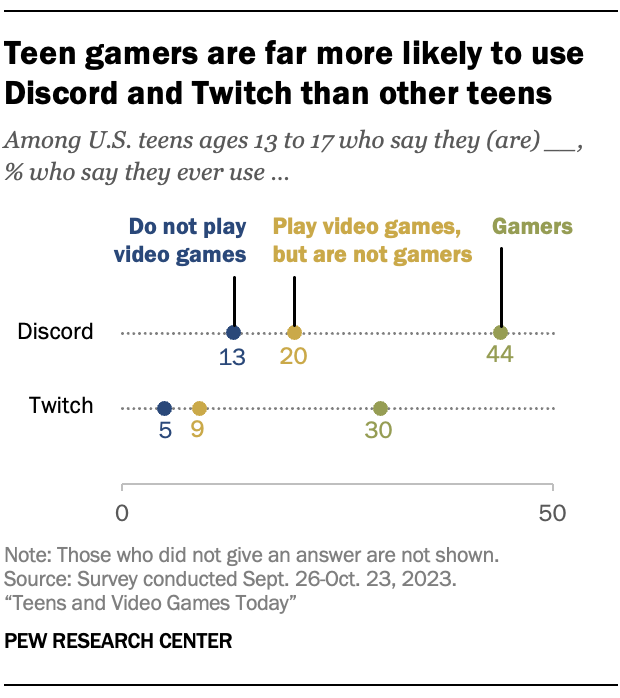
One way that teens engage with others about video games is through online platforms. And our survey findings show that teen gamers stand out for their use of two online platforms that are known for their gaming communities – Discord and Twitch :
- 44% of teen gamers say they use Discord, far higher than video game players who don’t identify as gamers or those who use the platform but do not play video games at all. About three-in-ten teens overall (28%) use Discord.
- 30% of teens gamers say they use Twitch. About one-in-ten other teens or fewer say the same; 17% of teens overall use the platform.
Previous Center research shows that U.S. teens use online platforms at high rates .
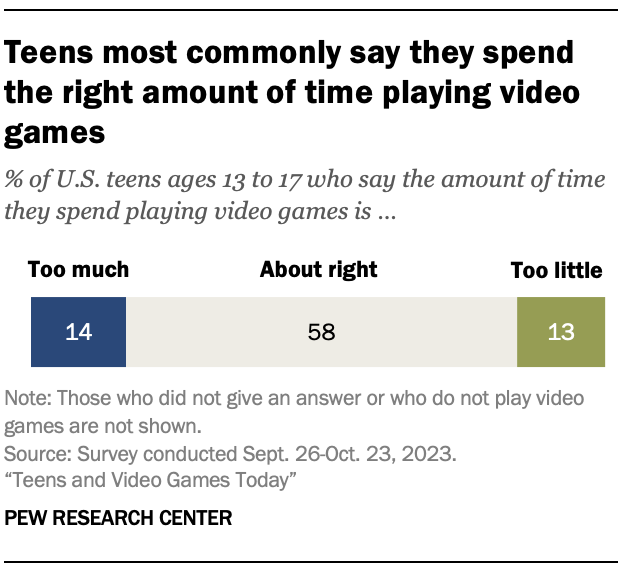
Teens largely say they spend the right amount of time playing video games. When asked about how much time they spend playing them, the largest share of teens (58%) say they spend the right amount of time. Far fewer feel they spend too much (14%) or too little (13%) time playing them.
Teen boys are more likely than girls to say they spend too much time playing video games (22% vs. 6%).
By race and ethnicity
Black (17%) and Hispanic (18%) teens are about twice as likely than White teens (8%) to say they spend too little time playing video games. 3
A quarter of teens who consider themselves gamers say they spend too much time playing video games, compared with 9% of those who play video games but don’t identify as gamers. Teen gamers are also less likely to think they spend too little time playing them (19% vs. 10%).
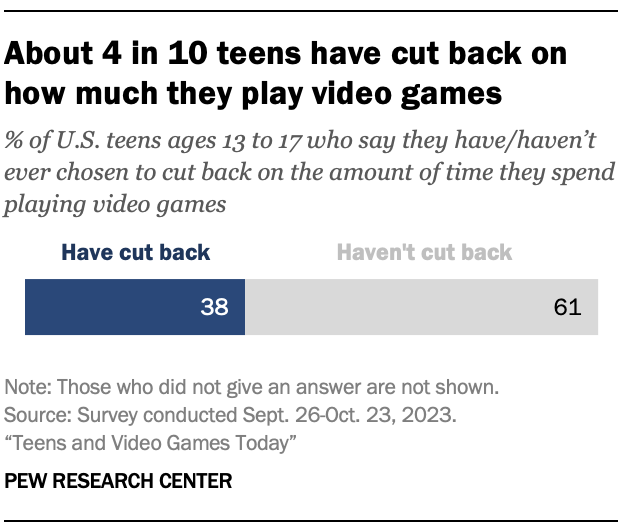
Fewer than half of teens have reduced how much they play video games. About four-in-ten (38%) say they have ever chosen to cut back on the amount of time they spend playing them. A majority (61%) report that they have not cut back at all.
This share is on par with findings about whether teenagers have cut back with their screen time – on social media or their smartphone.
Although boys are more likely to say they play video games too much, boys and girls are on par for whether they have ever cut back. About four-in-ten teen boys (39%) and girls (38%) say that they have ever cut back.
And gamers are as likely to say they have cut back as those who play video games but don’t identify as gamers (39% and 41%).
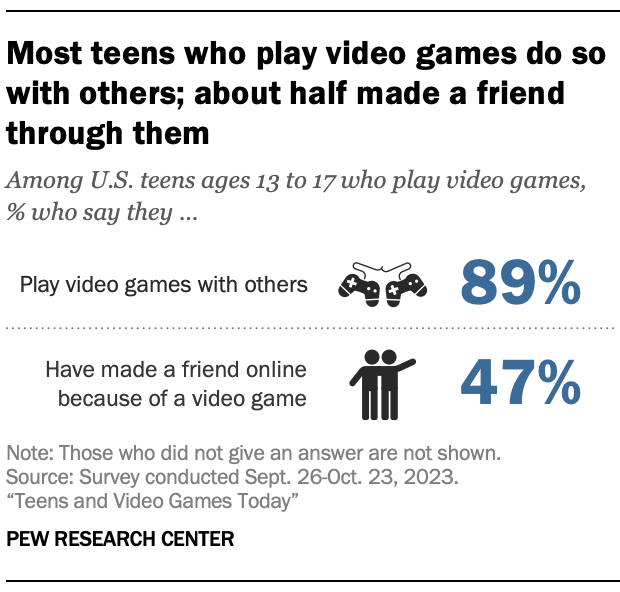
A main goal of our survey was to ask teens about their own experiences playing video games. For this section of the report, we focus on teens who say they play video games.
Socializing with others is a key part of the video game experience. Most teens who play video games do so with others, and some have developed friendships through them.
About nine-in-ten teen video game players (89%) say they play them with other people, in person or online. Far fewer (11%) play them only on their own.
Additionally, about half (47%) report that they have ever made a friend online because of a video game they both play. This equals 40% of all U.S. teens who have made a friend online because of a video game.
These experiences vary by:
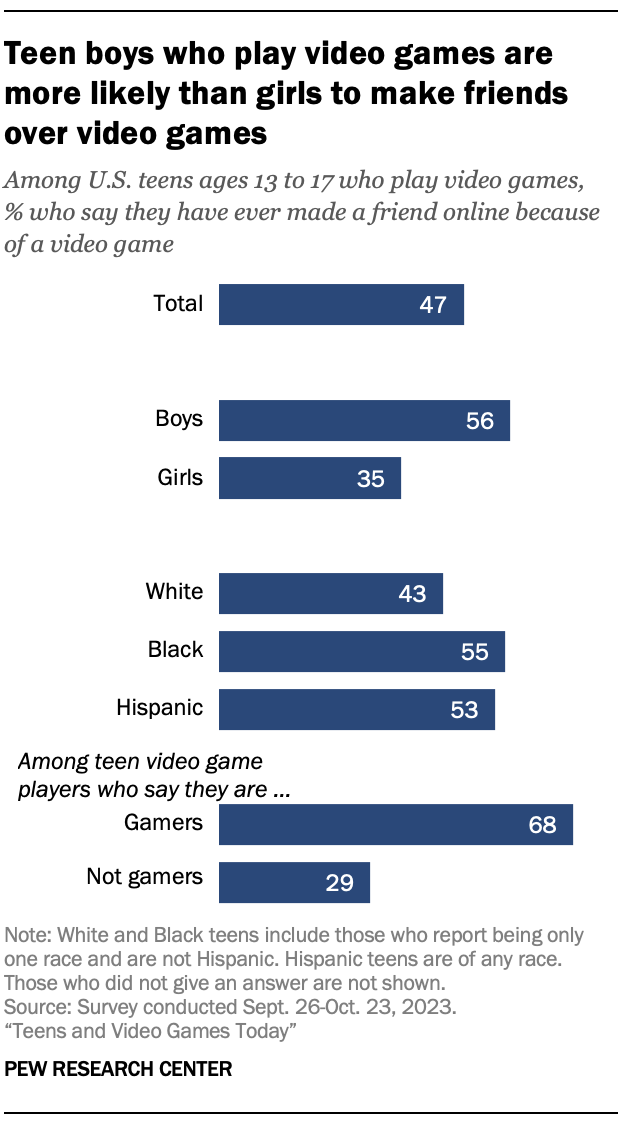
- Gender: Most teen boy and girl video game players play them with others, though it’s more common among boys (94% vs. 82%). Boys who play video games are much more likely to say they have made a friend online because of a video game (56% vs. 35%).
- Race and ethnicity: Black (55%) and Hispanic (53%) teen video game players are more likely than White teen video game players (43%) to say they have made a friend online because of them.
- Whether someone identifies as a gamer: Nearly all teen gamers report playing video games with others (98%). Fewer – though still most – of those who play video games but aren’t gamers (81%) also play them with others. And about seven-in-ten (68%) say they have made a friend online because of a video game, compared with 29% of those who play them but don’t identify as gamers.
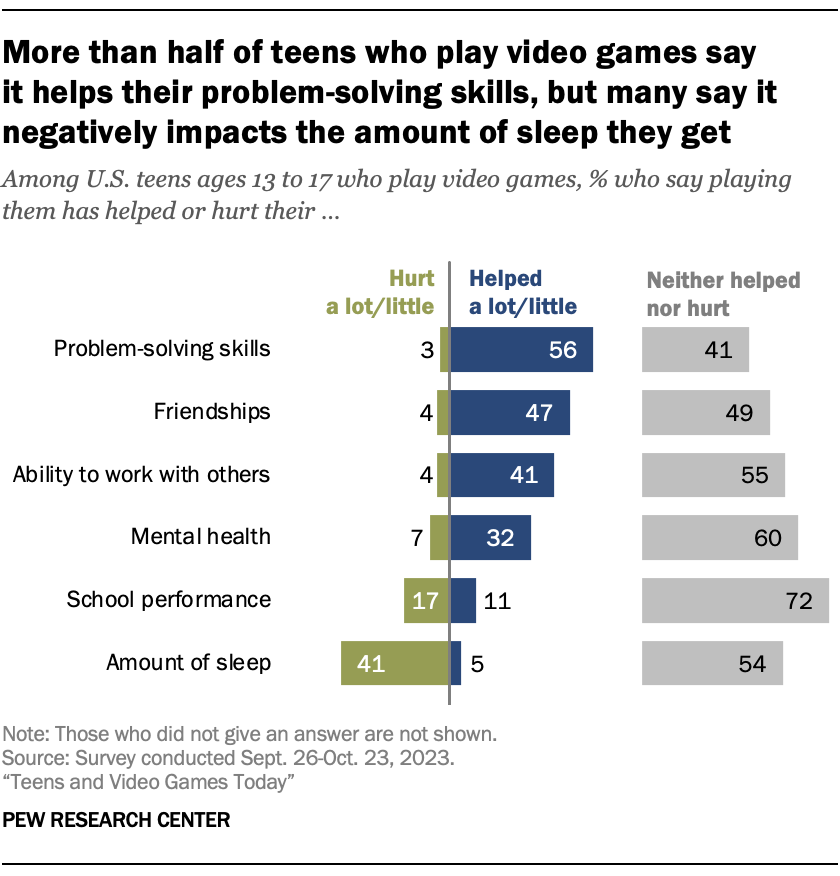
Teens who play video games are particularly likely to say video games help their problem-solving skills. More than half of teens who play video games (56%) say this.
Additionally, more think that video games help, rather than hurt, three other parts of their lives that the survey asked about. Among teens who play video games:
- Roughly half (47%) say it has helped their friendships
- 41% say it has helped how they work with others
- 32% say it has helped their mental health
No more than 7% say playing video games has hurt any of these.
More teens who play video games say it hurts, rather than helps, their sleep. Among these teens, 41% say it has hurt how much sleep they get, while just 5% say it helps. And small shares say playing video games has impacted how well they do in school in either a positive or a negative way.
Still, many teens who play video games think playing them doesn’t have much an impact in any of these areas. For instance, at least six-in-ten teens who play video games say it has neither a positive nor a negative impact on their mental health (60%) or their school performance (72%). Fewer (41%) say this of their problem-solving skills.
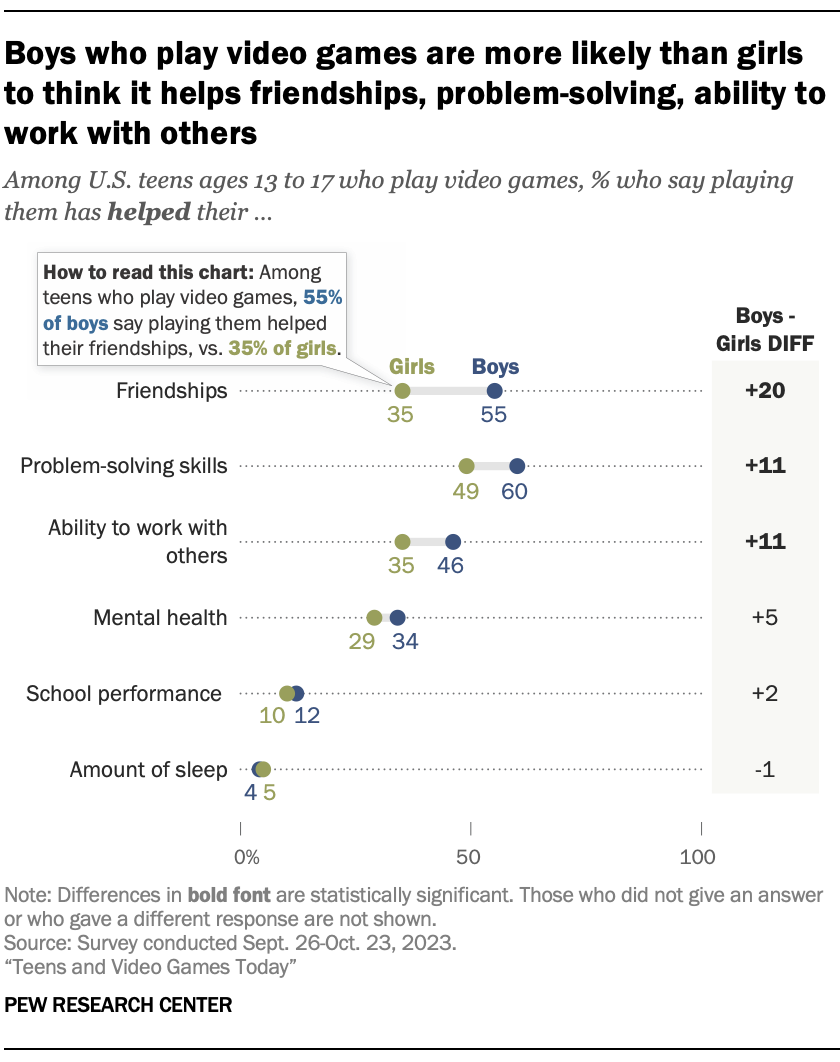
Teen boys who play video games are more likely than girls to think playing them has helped their problem-solving skills, friendships and ability to work with others. For instance, 55% of teen boys who play video games say this has helped their friendships, compared with 35% of teen girls.
As for ways that it may hurt their lives, boys who play them are more likely than girls to say that it has hurt the amount of sleep they get (45% vs. 37%) and how well they do in school (21% vs. 11%).
Teens who consider themselves gamers are more likely than those who aren’t gamers but play video games to say video games have helped their friendships (60% vs. 35%), ability to work with others (52% vs. 32%), problem-solving skills (66% vs. 47%) and mental health (41% vs. 24%).
Gamers, though, are somewhat more likely to say playing them hurt their sleep (48% vs. 36%) and how well they do in school (20% vs. 14%).
By whether teens play too much, too little or the right amount
Teens who report playing video games too much stand out for thinking video games have hurt their sleep and school performance. Two-thirds of these teens say it has hurt the amount of sleep they get, and 39% say it hurt their schoolwork. Far fewer of those who say they play the right amount (38%) or too little (32%) say it has hurt their sleep, or say it hurt their schoolwork (12% and 16%).
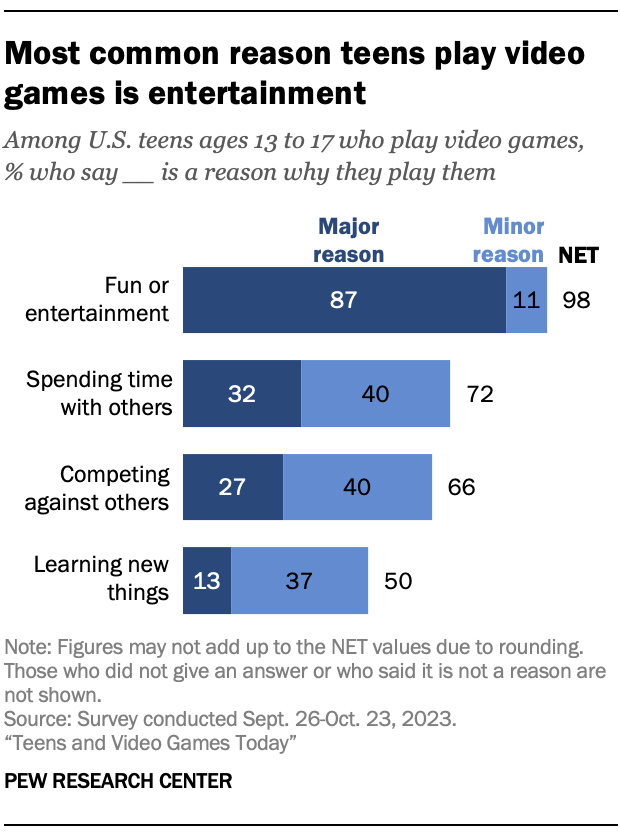
Teens who play video games say they largely do so to be entertained. And many also play them to be social with and interact with others. Teens who play video games were asked about four reasons why they play video games. Among those who play video games:
- Nearly all say fun or entertainment is a major or minor reason why they play video games – with a large majority (87%) saying it’s a major reason.
- Roughly three-quarters say spending time with others is a reason, and two-thirds say this of competing with others. Roughly three-in-ten say each is a major reason.
- Fewer – 50% – see learning something as a reason, with just 13% saying it’s a major reason.
While entertainment is by far the most common reason given by teens who play video games, differences emerge across groups in why they play video games.
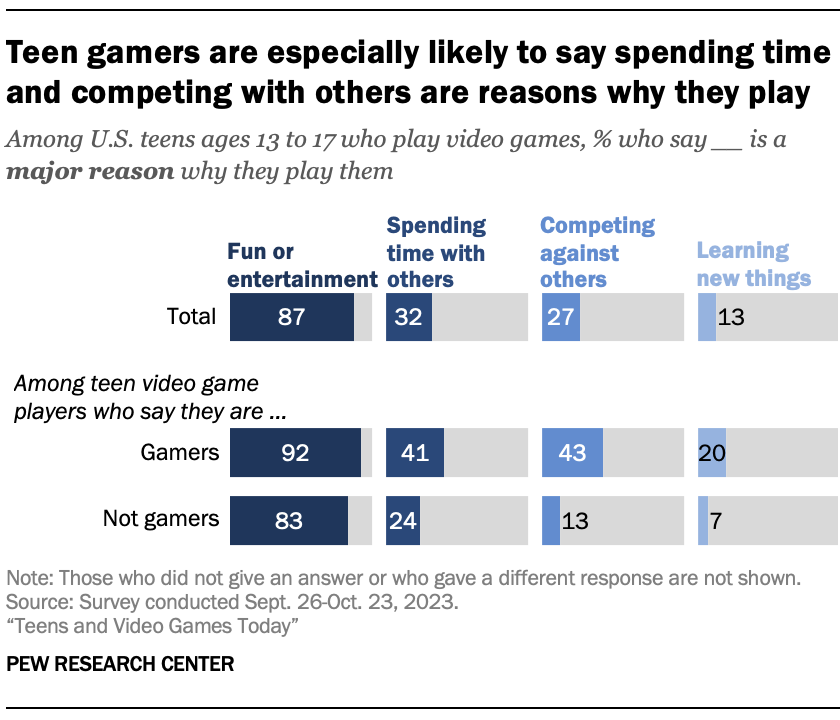
Teens who identify as gamers are particularly likely to say each is major reason, especially when it comes to competing against others. About four-in-ten gamers (43%) say this is a major reason, compared with 13% of those who play video games but aren’t gamers.
Teen boys who play video games are more likely than girls to say competing (36% vs. 15%), spending time with others (36% vs. 27%) and entertainment (90% vs. 83%) are major reasons they play video games.
Black and Hispanic teens who play video games are more likely than White teens to say that learning new things and competing against others are major reasons they play them. For instance, 29% of Black teen video game players say learning something new is a major reason, higher than 17% of Hispanic teen video game players. Both are higher than the 7% of White teen video game players who say the same.
Teens who play video games and live in lower-income households are especially likely to say competing against others and learning new things are major reasons. For instance, four-in-ten teen video game players who live in households with an annual income of less than $30,000 say competing against others is a major reason they play. This is higher than among those in households with annual incomes of $30,000 to $74,999 (29%) and $75,000 or more (23%).
Cyberbullying can happen in many online environments, but many teens encounter this in the video game world.
Our survey finds that name-calling is a relatively common feature of video game life – especially for boys. Roughly four-in-ten teen video game players (43%) say they have been harassed or bullied while playing a video game in one of three ways:
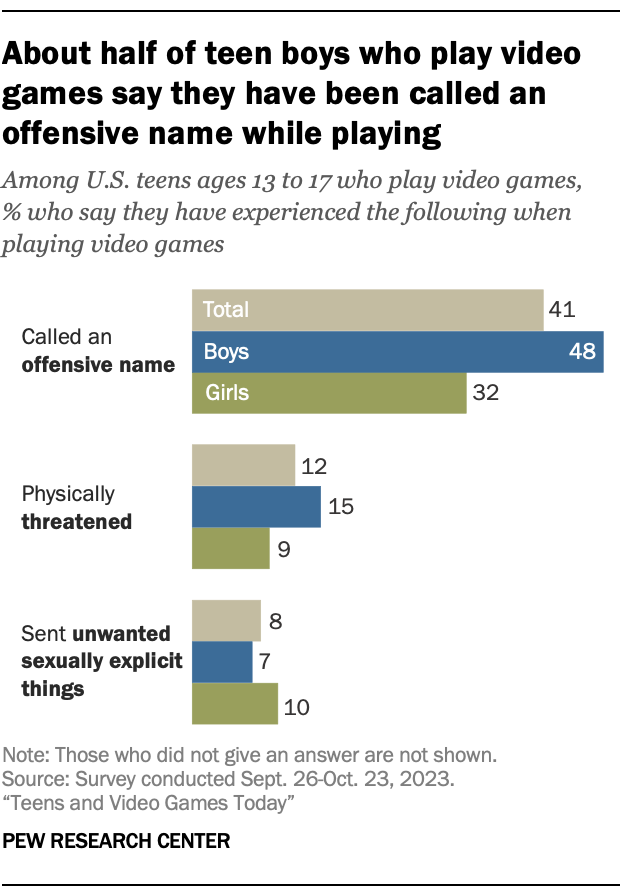
- 41% have been called an offensive name
- 12% have been physically threatened
- 8% have been sent unwanted sexually explicit things
Teen boys are particularly likely to say they have been called an offensive name. About half of teen boys who play video games (48%) say this has happened while playing them, compared with about a third of girls (32%). And they are somewhat more likely than girls to have been physically threatened (15% vs. 9%).
Teen gamers are more likely than those who play video games but aren’t gamers to say they been called and offensive name (53% vs. 30%), been physically threatened (17% vs. 8%) and sent unwanted sexually explicit things (10% vs. 6%).
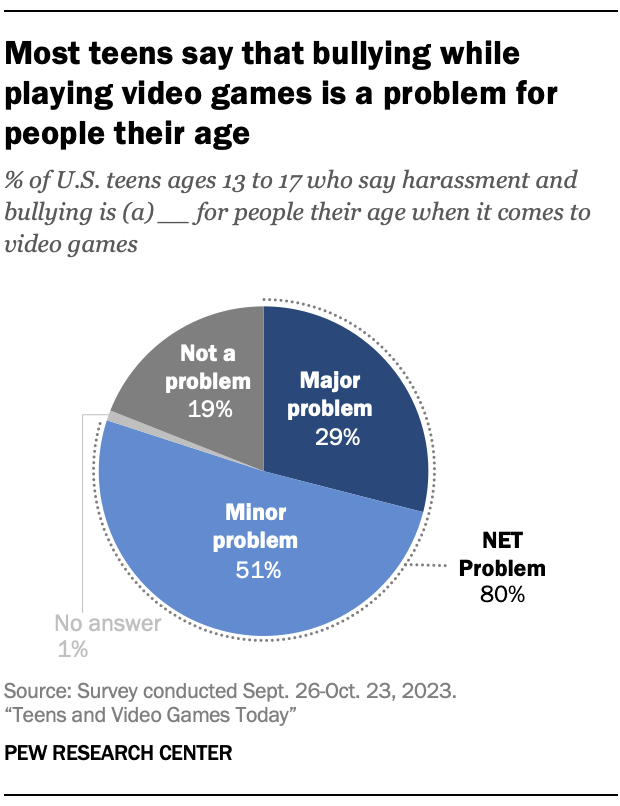
Teens – regardless of whether they’ve had these experiences – think bullying is a problem in gaming. Eight-in-ten U.S. teens say that when it comes to video games, harassment and bullying is a problem for people their age. This includes 29% who say it is a major problem.
It’s common for teens to think harassment while playing video games is a problem, but girls are somewhat more likely than boys to say it’s a major problem (33% vs. 25%).
There have also been decades-long debates about how violent video games can influence youth behavior , if at all – such as by encouraging or desensitizing them to violence. We wanted to get a sense of how commonly violence shows up in the video games teens are playing.
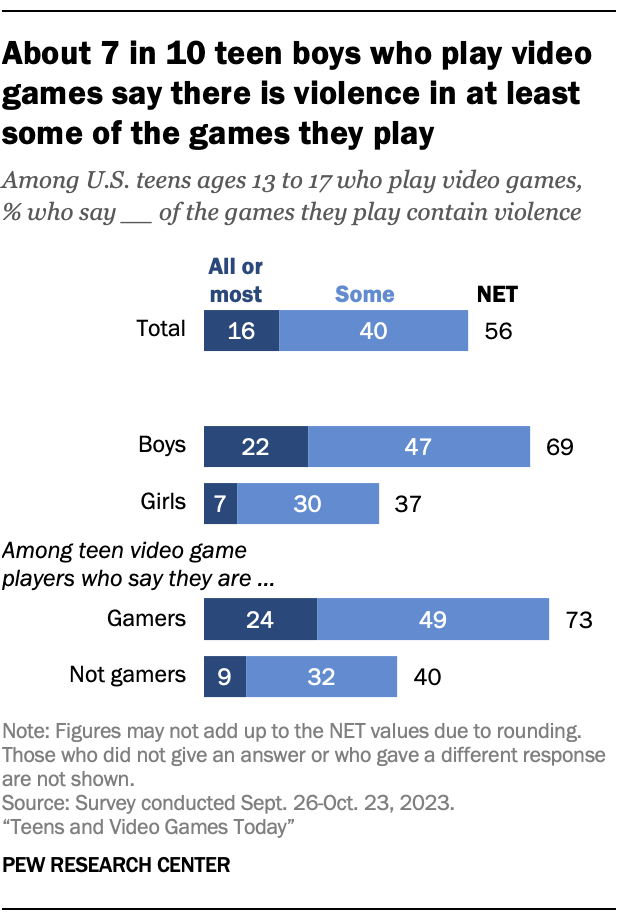
Just over half of teens who play video games (56%) say at least some of the games they play contain violence. This includes 16% who say it’s in all or most of the games they play.
Teen boys who play video games are far more likely than girls to say that at least some of the games they play contain violence (69% vs. 37%).
About three-quarters of teen gamers (73%) say that at least some of the games they play contain violence, compared with 40% among video game players who aren’t gamers.
- Throughout this report, “teens” refers to those ages 13 to 17. ↩
- Previous Center research of U.S. adults shows that men are more likely than women to identify as gamers – especially the youngest adults. ↩
- There were not enough Asian American respondents in the sample to be broken out into a separate analysis. As always, their responses are incorporated into the general population figures throughout the report. ↩
Sign up for our weekly newsletter
Fresh data delivery Saturday mornings
Sign up for The Briefing
Weekly updates on the world of news & information
- Friendships
- Online Harassment & Bullying
- Teens & Tech
- Teens & Youth
How Teens and Parents Approach Screen Time
Teens and internet, device access fact sheet, teens and social media fact sheet, teens, social media and technology 2023, what the data says about americans’ views of artificial intelligence, most popular, report materials.
1615 L St. NW, Suite 800 Washington, DC 20036 USA (+1) 202-419-4300 | Main (+1) 202-857-8562 | Fax (+1) 202-419-4372 | Media Inquiries
Research Topics
- Age & Generations
- Coronavirus (COVID-19)
- Economy & Work
- Family & Relationships
- Gender & LGBTQ
- Immigration & Migration
- International Affairs
- Internet & Technology
- Methodological Research
- News Habits & Media
- Non-U.S. Governments
- Other Topics
- Politics & Policy
- Race & Ethnicity
- Email Newsletters
ABOUT PEW RESEARCH CENTER Pew Research Center is a nonpartisan fact tank that informs the public about the issues, attitudes and trends shaping the world. It conducts public opinion polling, demographic research, media content analysis and other empirical social science research. Pew Research Center does not take policy positions. It is a subsidiary of The Pew Charitable Trusts .
Copyright 2024 Pew Research Center

IMAGES
VIDEO
COMMENTS
By honing their problem-solving abilities, we're preparing kids to face the unforeseen challenges of the world outside. Enhances Cognitive Growth: Otherwise known as cognitive development. Problem-solving isn't just about finding solutions. It's about thinking critically, analyzing situations, and making decisions.
Children will have to follow the clues and solve puzzles to find the ultimate prize. This activity encourages problem-solving, critical thinking, and teamwork. 7. Scavenger Hunt. Playing Scavenger Hunt can be a fun way for our kids to put their creative problem-solving skills to good use.
Additionally, problem-solving helps children learn how to find creative solutions to challenges they may face both in and out of the classroom. These activities can also be fun and used in cohesion with school or playtime. 17 Fun Problem-Solving Activities for Kids 1. Marble Mazes. This activity was selected because it requires them to think ...
All lines of work need great problem solvers to find tomorrow's solutions, and students of any age can be honing their problem-solving skills. Check out some of these fun problem-solving activities for kids and teens below! Problem-solving activities for elementary school kids (ages 5-10) From traditional paper-and-pencil activities to online ...
Take your child's critical thinking and problem-solving skills to the next level with MentalUP! 👏. Packed with hundreds of problem-solving games for kids of all ages, MentalUP provides the ideal support for your child to enhance their concentration, visual intelligence, memory, critical thinking, and more, all while having fun. 🚀. Start using the app today and join over 10 million users ...
15 Best Problem Solving Activities for Kids. 1. Rolling Dice. Things you'll need: A die or dice, some flashcards and a pen. How to do: You can play tons of different games with dice. Playing with two dice encourages kids to quickly add up numbers and learn math in a fun way.
6) Quirkle Board Game. If you're looking for problem solving activities for kids you can enjoy as a family, I highly recommend Quirkle! It's easy to play but definitely puts players' problem solving skills to the test, and I love that it's a game the whole family can enjoy! 7) Size of the Problem Activity Pack.
We love single player logic games and probably own an unhealthy number of these brain boosting puzzle games. The following are some of our top favorites: Cat Crimes, ages 8 and up ( pictured above) - see it as our game of the month feature. Code Master, ages 8 and up - see it as our game of the month feature.
PLAY NOW. MentalUP Brain Stimulators Games for Kids help kids improve their skills including visual attention, divided attention, selective attention, focusing, problem-solving, and imagination. Improve your child's cognitive skills with online mind games, have fun, and learn at the same time! PLAY FOR FREE.
Logic and thinking-themed games are interactive activities designed to challenge young minds by requiring them to use critical thinking, problem-solving, and strategic reasoning. These games involve creative challenges that stimulate cognitive development, enhance decision-making skills, and foster a love for learning in children.
Free, online math games and more at MathPlayground.com! Problem solving, logic games and number puzzles kids love to play.
For this problem solving activity for older kids or teens, you will need four 2×6 boards. Divide your group into two teams with an equal number of children on each team. Place two of the four boards end to end on the ground or floor. Set the other two parallel to the first two about two or three feet apart.
Puzzles and brain teasers are fun ways to boost kids' problem-solving skills. These challenges can be jigsaw puzzles, tricky riddles, or math puzzles, all designed to make kids think critically and creatively. By solving them, kids learn to break down problems, be persistent, and find different solutions. Jigsaw puzzles, Sudoku, Rubik's ...
Encourage your child to plan their day or week, balancing schoolwork, chores, and leisure. This helps them develop critical time management and prioritization skills. Each of these activities, while mundane, is an opportunity for your child to think critically, make decisions, and solve problems.
15 Problem Solving Activities for Kids. There is no better way to learn than by playing. The following exercises are enjoyable and challenge youngsters to demonstrate their problem-solving abilities. Riddles. Riddles for kids are fantastic games for problem-solving. They come at various levels of difficulty.
Here are 10 simple, easy games and problem solving activities for kids at home or at school. Many of them are the kinds of activities children should have daily exposure to. 1. Puzzles. Puzzles are one of the best thinking activities out there. Each puzzle is basically one big set of muddled-up things to be sorted out and put back together again.
Give your brain a workout with these kids problem solving games and interactive activities. Find cool number problems and exercises as well as challenges that will test your logical thinking and reasoning abilities. Help a frog jump stones, measure water with limited resources, get people safely across a bridge and more.
Here are some activities to improve social problem-solving skills for children of different age groups: Social Problem-solving Activities for Preschoolers. Preschoolers are very young and need a lot of help to learn social problem-solving skills. The following activities are fun and will help them develop problem-solving skills.
Brain teasers for kids are a great form of game-based learning that not only entertain children but also inspire some creative thought in the classroom. People of all ages can indulge in these playful — yet challenging — activities. ... Brain teasers for kids can also: Strengthen problem solving and critical thinking skills; Encourage ...
STEM Focus: Engineering. This is one of those classic STEM activities every kid should try at least once. Kids can do it at any age, with different materials and heights to mix it up. Learn more: Egg Drop at Buggy and Buddy. 3. Engineer a drinking straw roller coaster. Frugal Fun for Boys and Girls.
Number Trains. Make a train by sequencing the numbers on their carriages. The numbers are represented in a range of formats such as words, numerals, dice dots or counting frames. The levels progress in difficulty. Level 5 has sequences of twos, fives and tens. Free maths problems for children. These activities which display well on an IWB aid ...
Improved problem-solving skills. Some therapy games involve overcoming challenges or working toward a common goal, helping children hone their critical thinking skills. 10 Best Therapy Games for Kids. If you're looking for new and innovative ways to teach concepts or introduce your child to therapy, consider these therapy games for kids. 1.
Problem Solving Games These resources provide fun, free problem solving teaching ideas and activities for primary aged children. They will help children to reason mathematically, a vital skill if they are to learn to solve problems.
Over 30 years ago, ThinkFun had one mission - to spark creativity, build problem-solving skills and inspire learning through play for children around the world. Today, our passion is even stronger. That's why we offer free and fun downloadable logic games and brainteasers for every classroom, every teacher and every student.
I created this collection of 50 Simple STEM Activities using only 15 materials. Most of the materials are supplies you likely already have on hand, such as paper, elastics and scissors. STEM activities are a great way to develop Science, Technology, Engineering and Math skills. The more of these skills mixed into the activity, the better.
1. SplashLearn. Who is it for: Pre-K to Grade 5 Subjects: Math, ELA, Early Skills SplashLearn is one of the best game-based learning platforms for kids that excels in making foundational math, and reading skills engaging for kids. It offers interactive games that not only cover essential academic topics but also enhance early skills such as critical thinking, logic, problem-solving, creativity ...
Creativity is not just about producing art; it's about thinking in new and innovative ways. One of the most effective tools to stimulate this skill is through themed storytelling combined with a ...
Register. Dive into learning adventures this summer with our math, science, and contest courses. Enroll today! Community. Art of Problem Solving is an ACS WASC Accredited School. aops programs. AoPS Online. Beast Academy. AoPS Academy.
There are long-standing debates about the impact of video games on youth. Some credit them for helping young people form friendships and teaching them about teamwork and problem-solving.Others say video games expose teenagers to violent content, negatively impact their sleep and can even lead to addiction.. With this in mind, Pew Research Center surveyed 1,423 U.S. teens ages 13 to 17 about ...